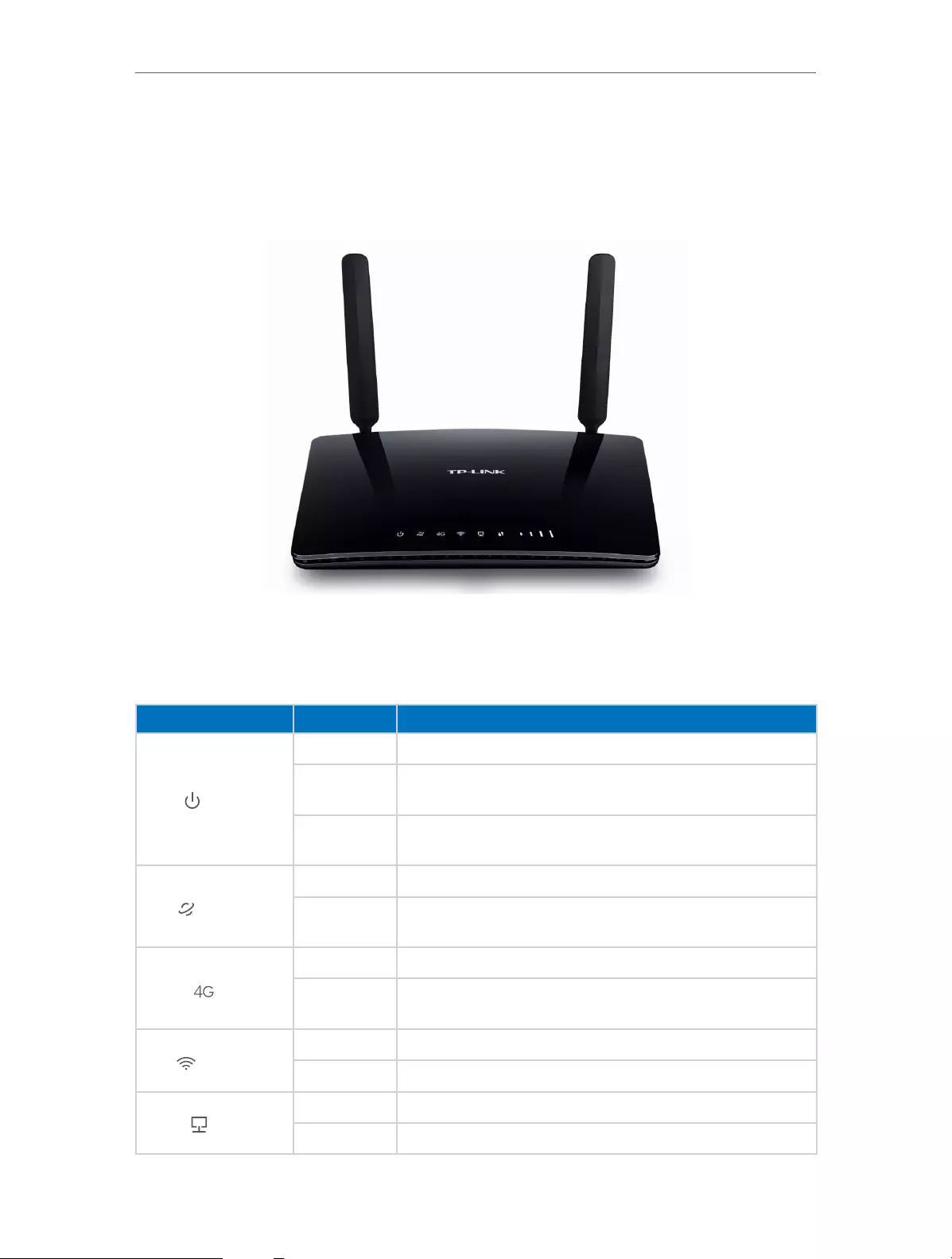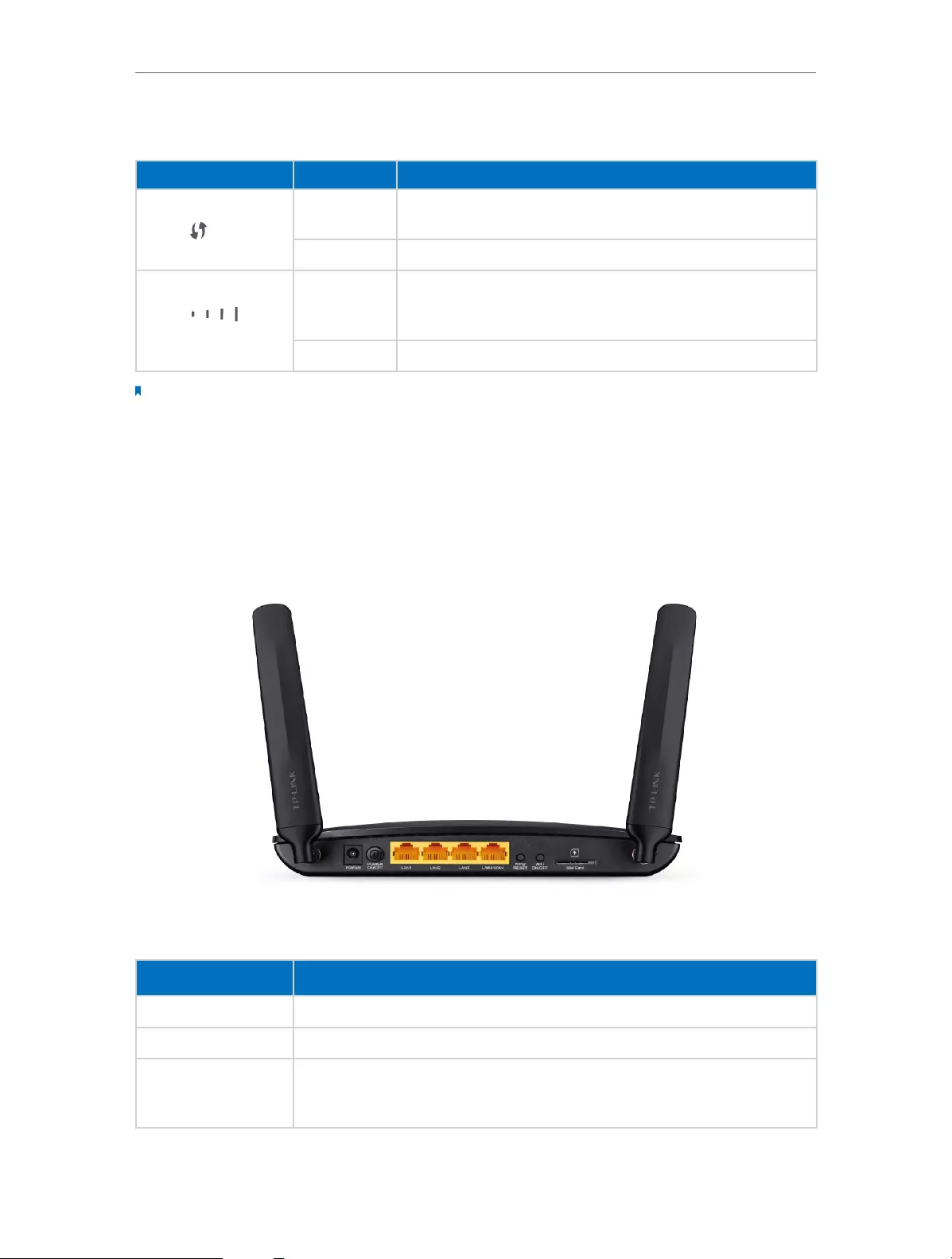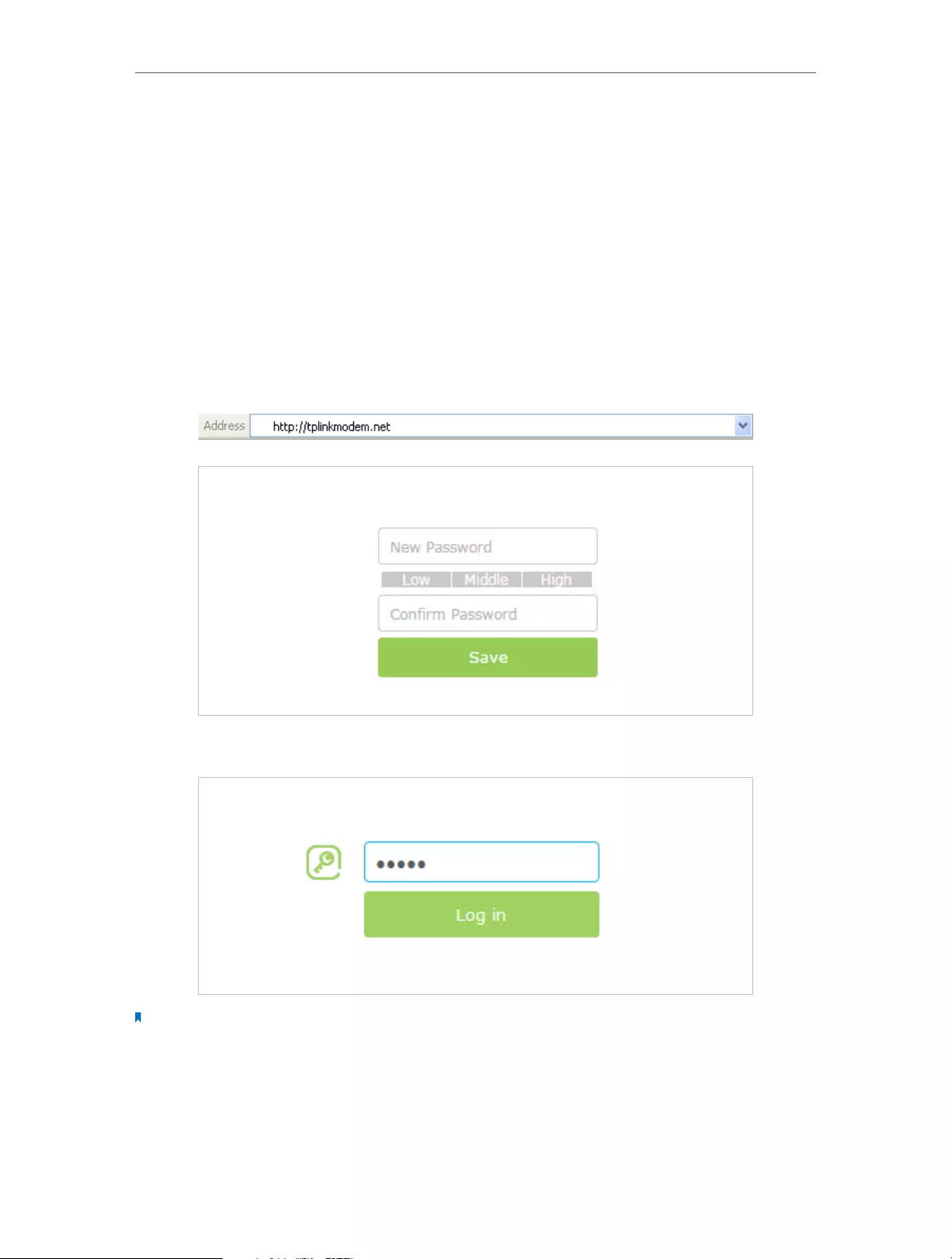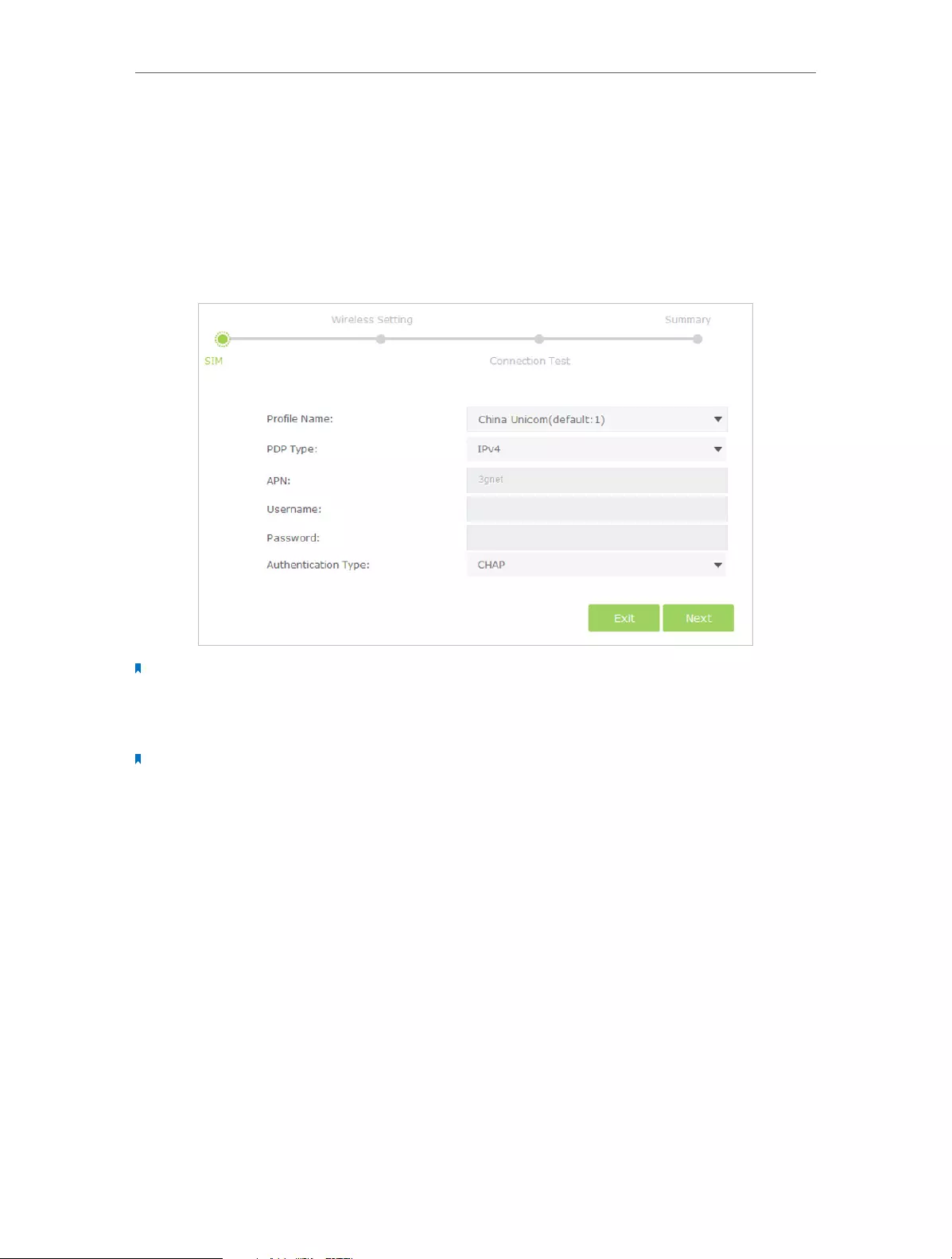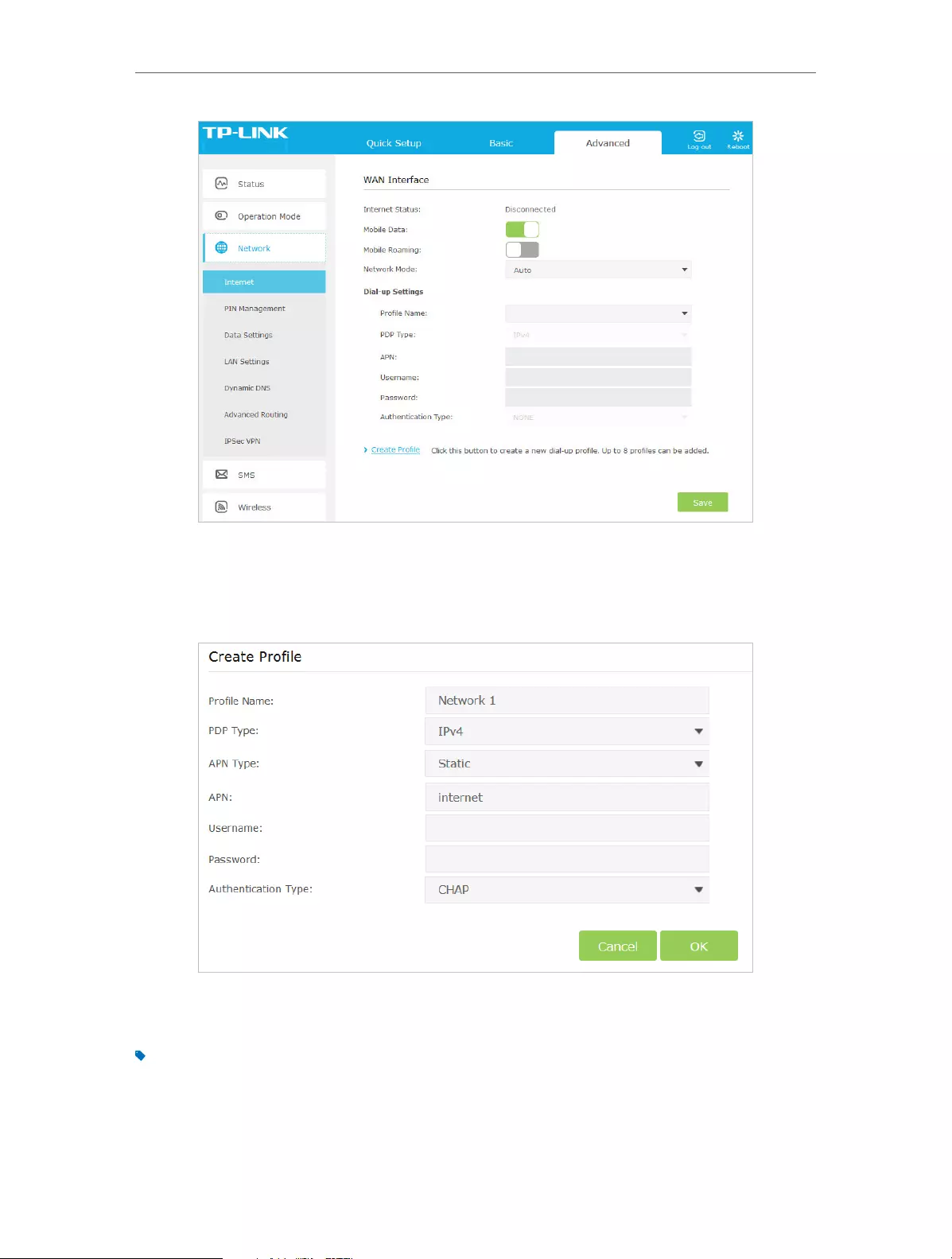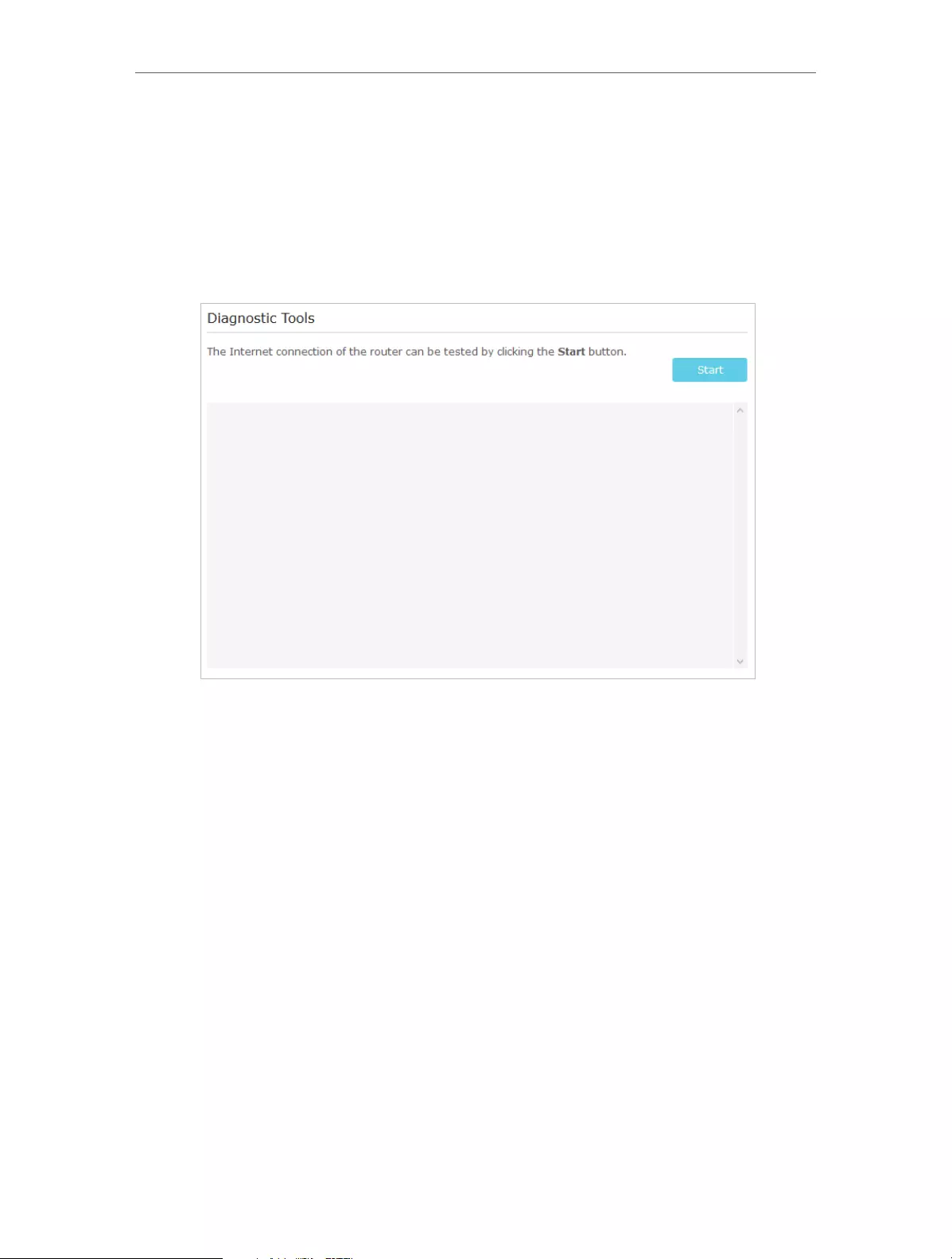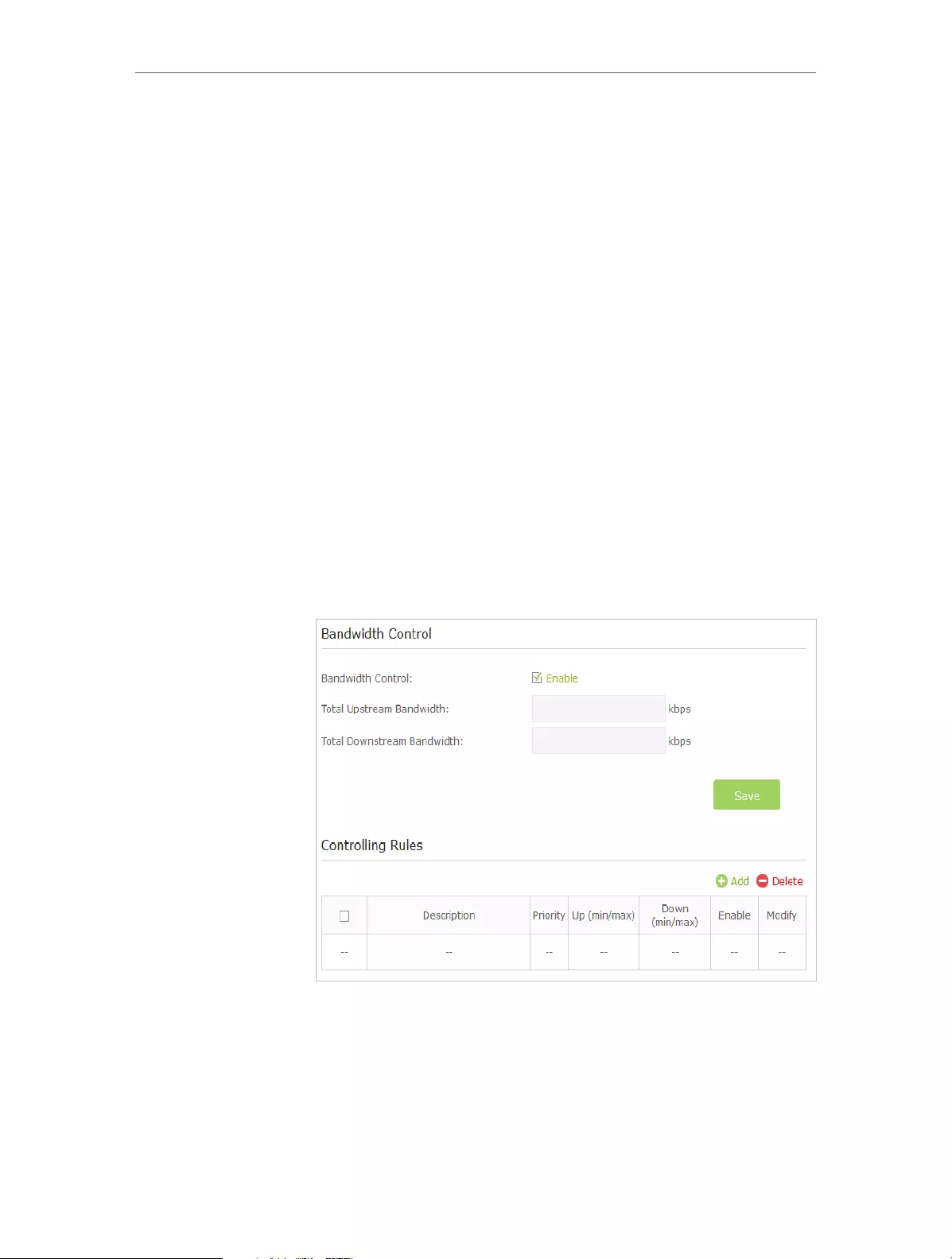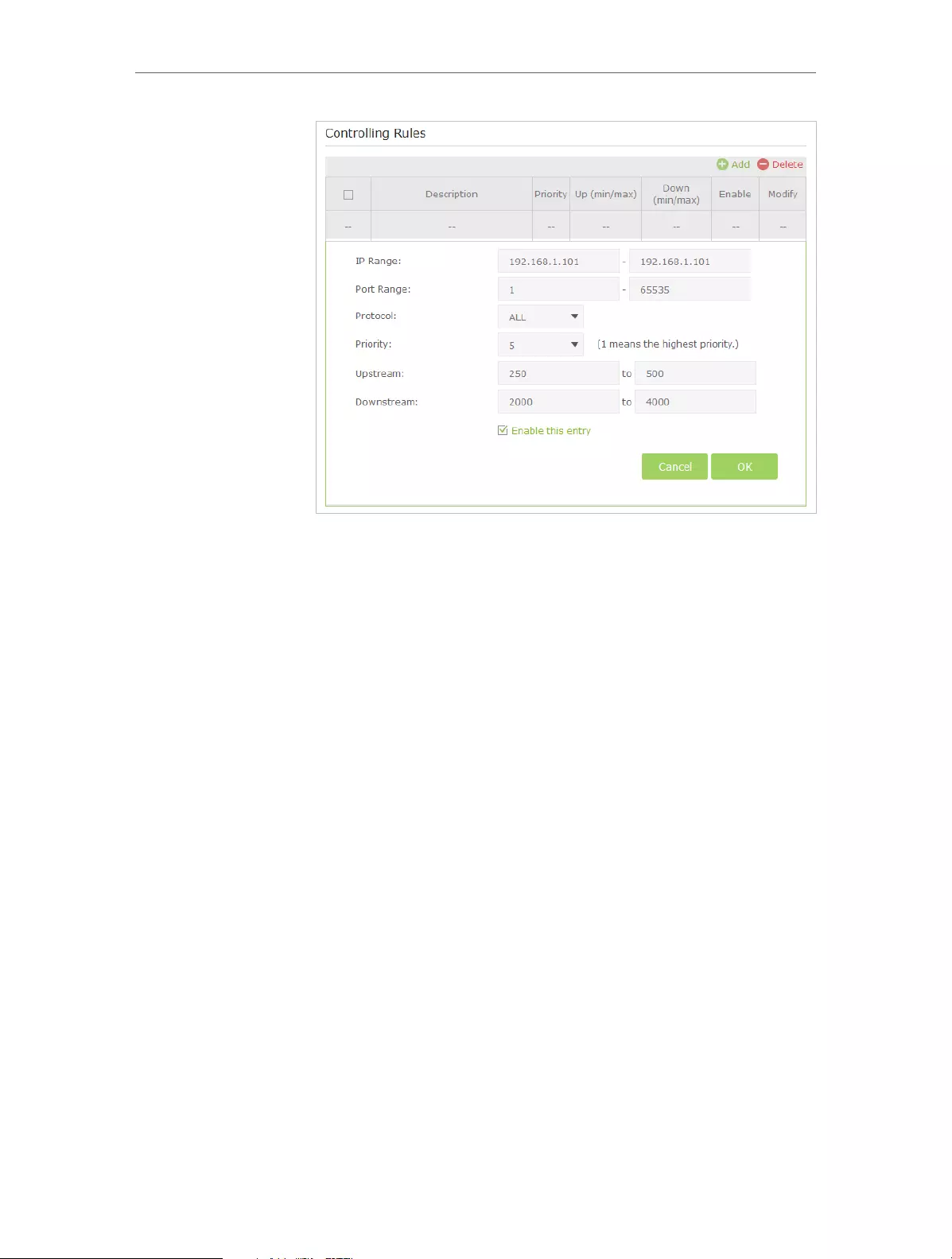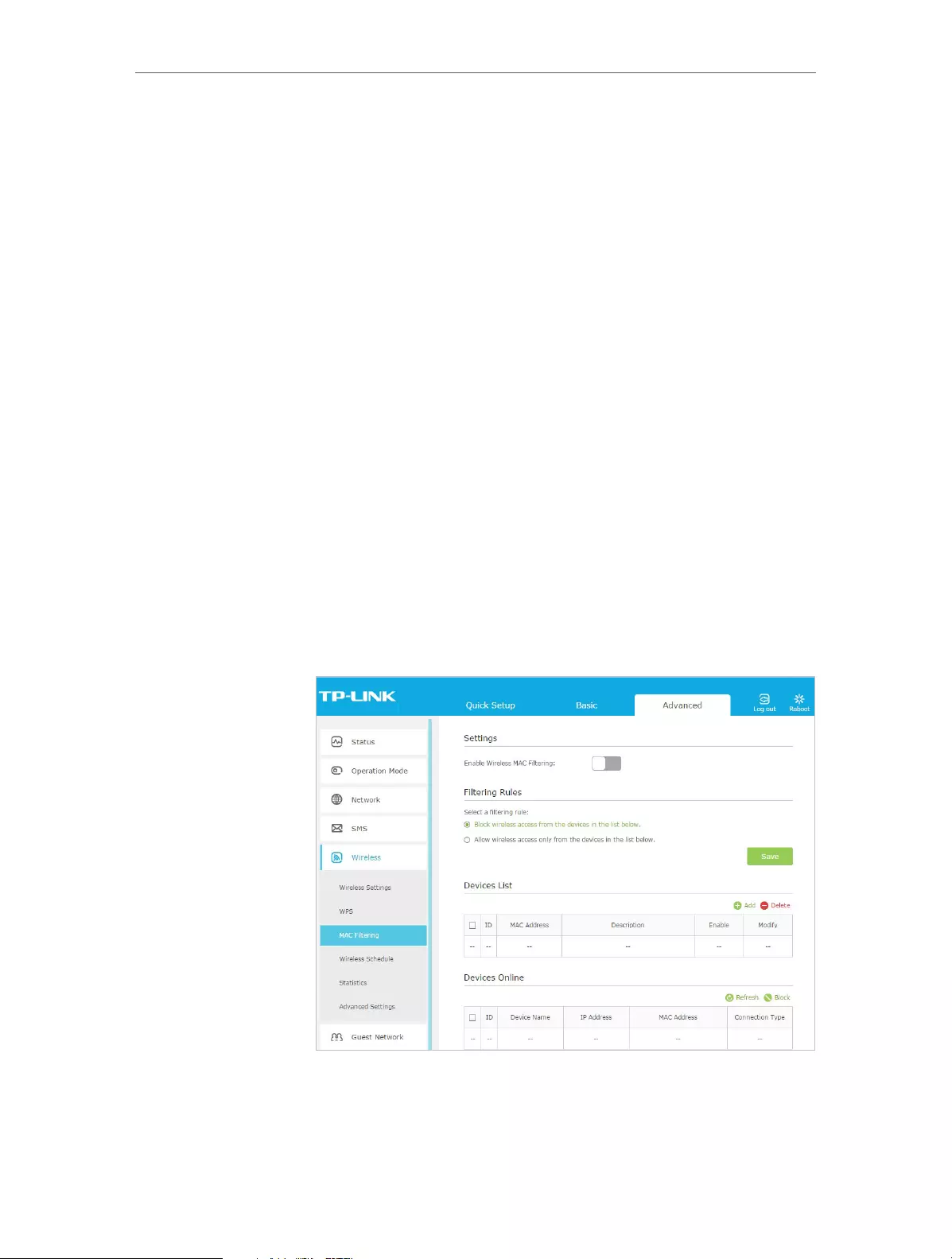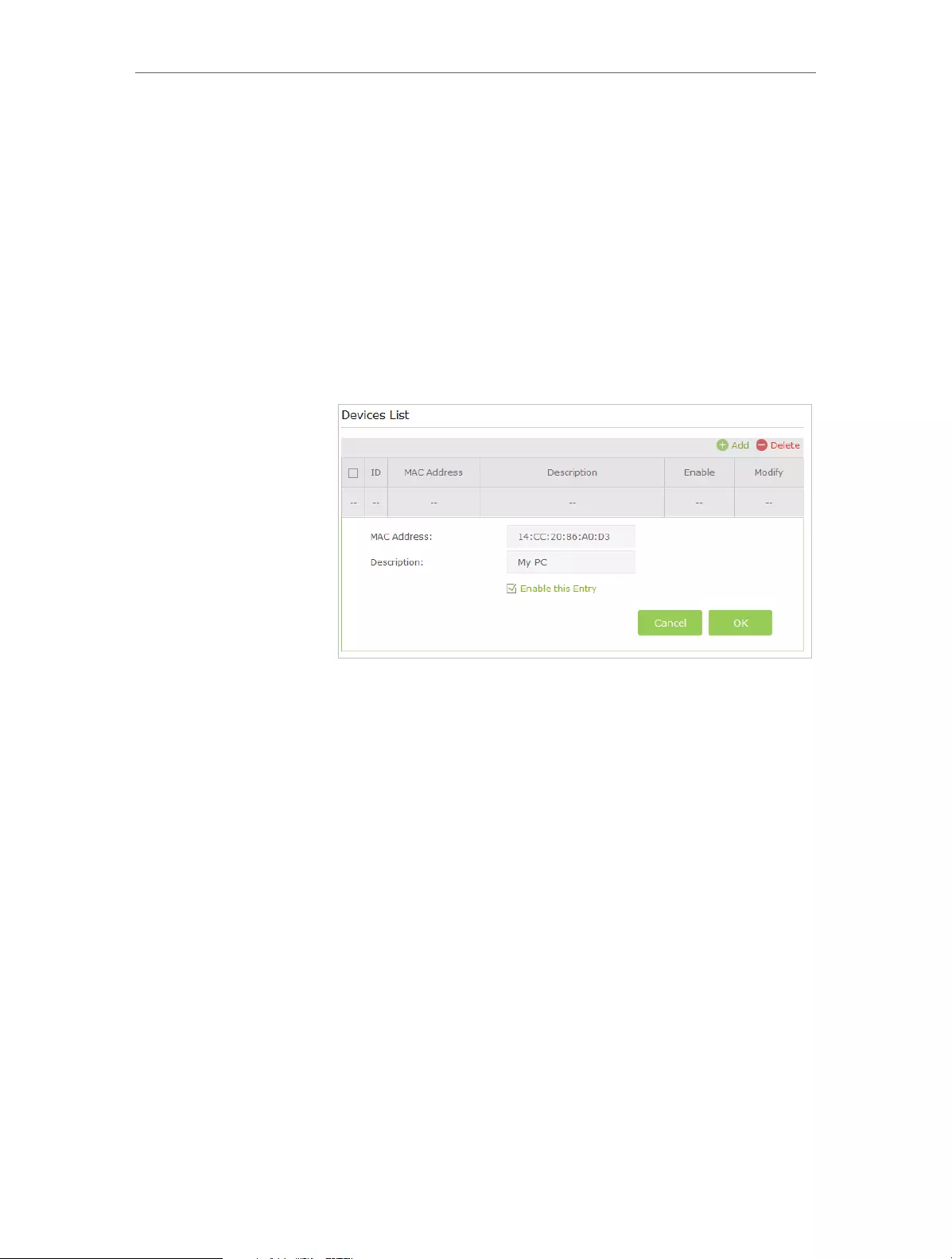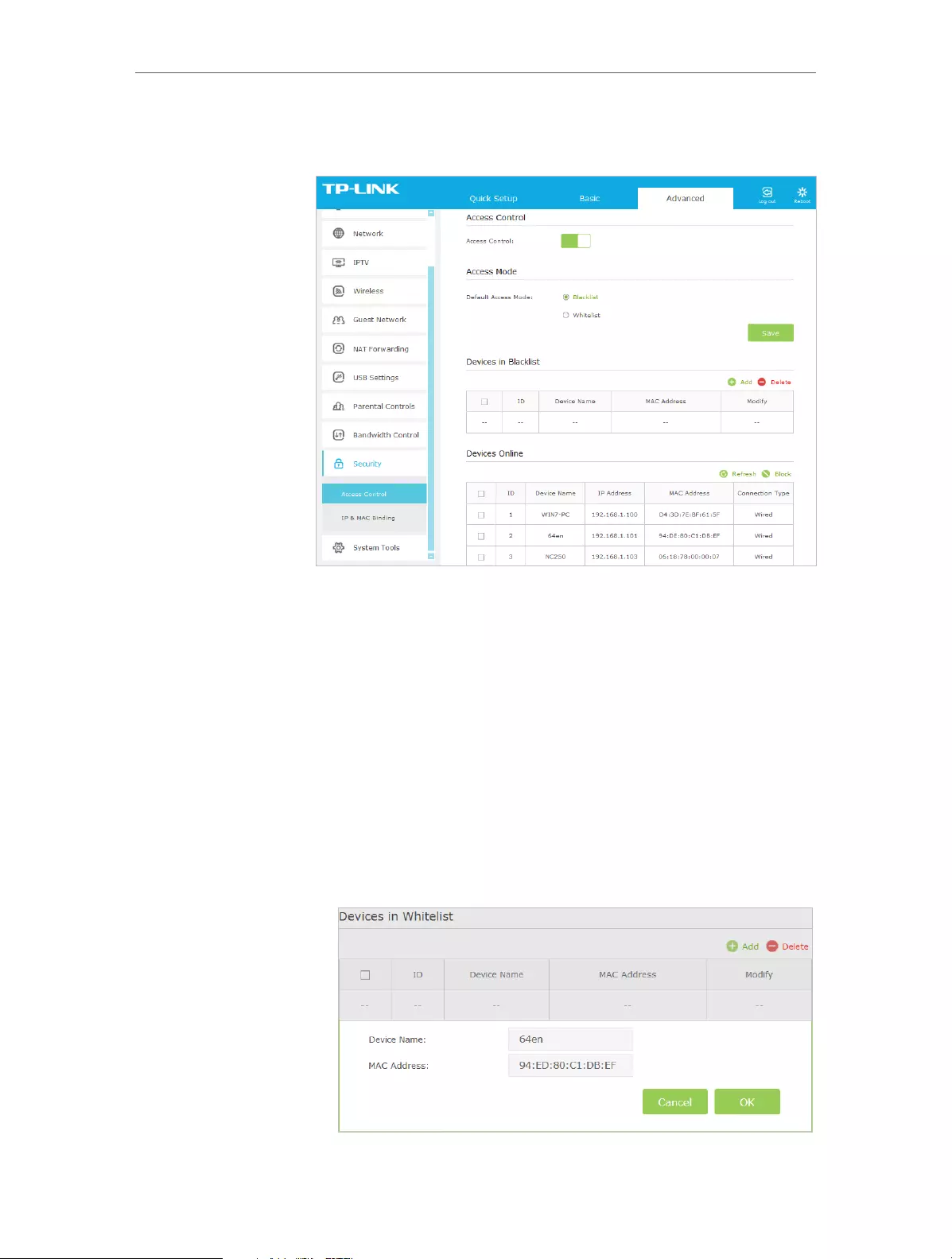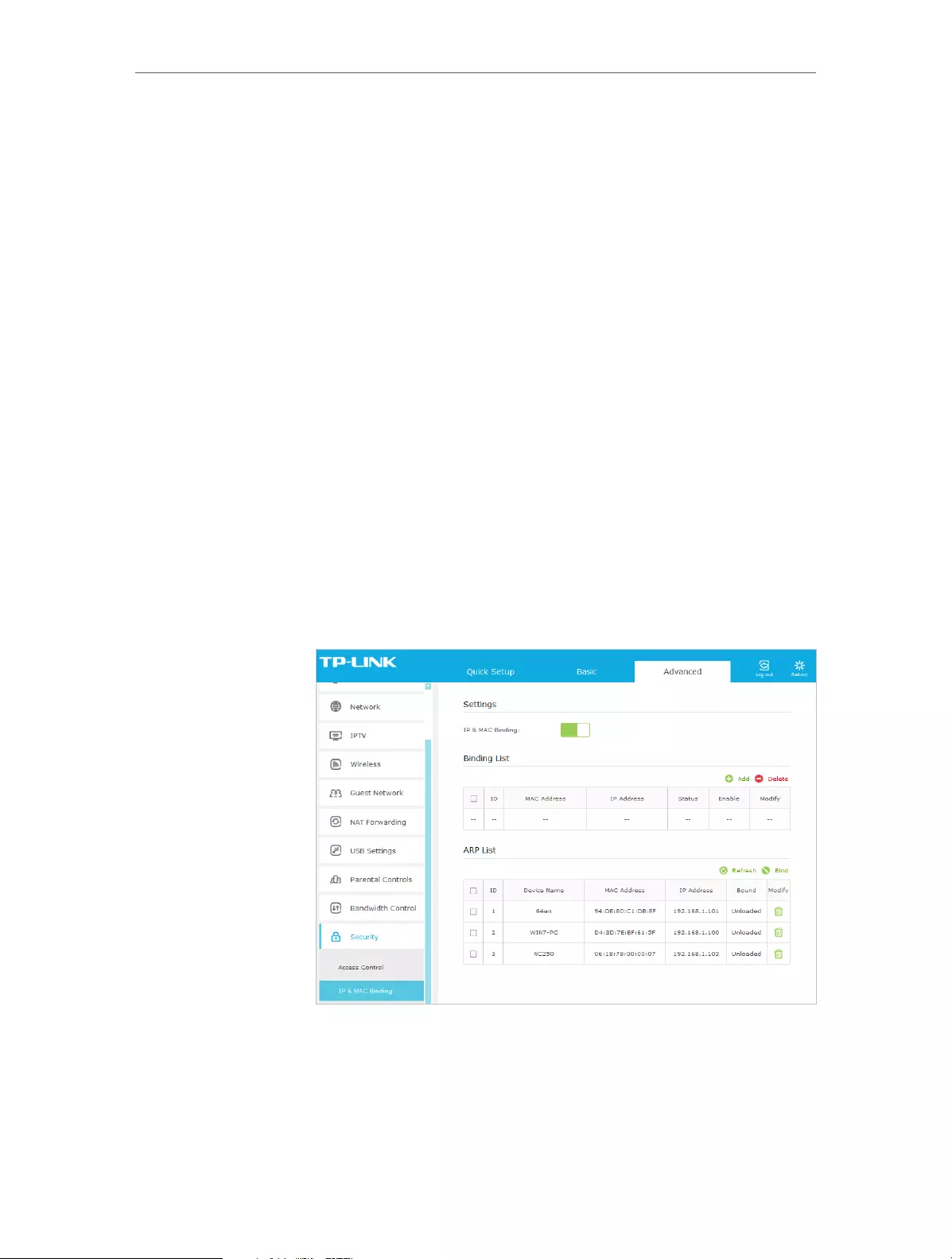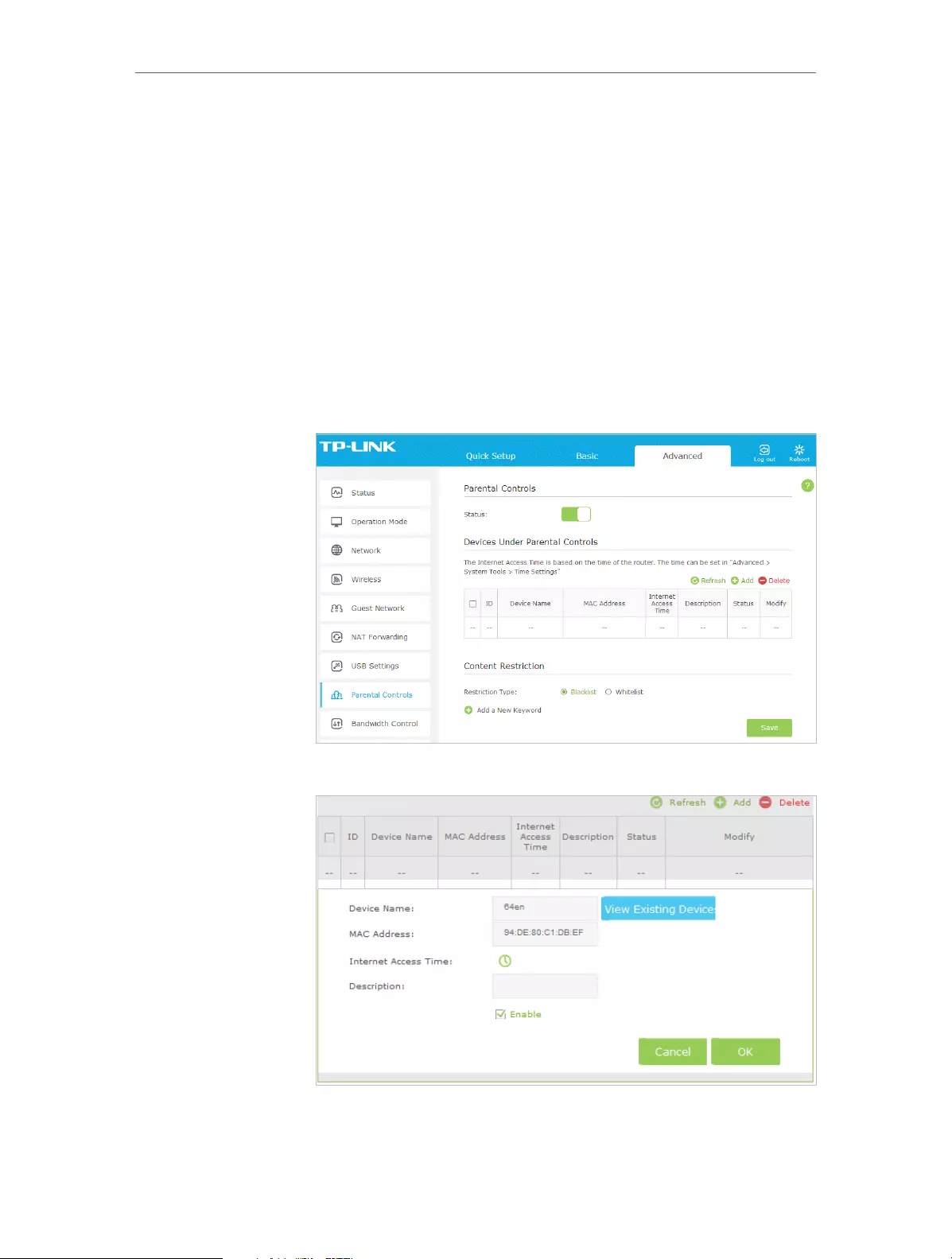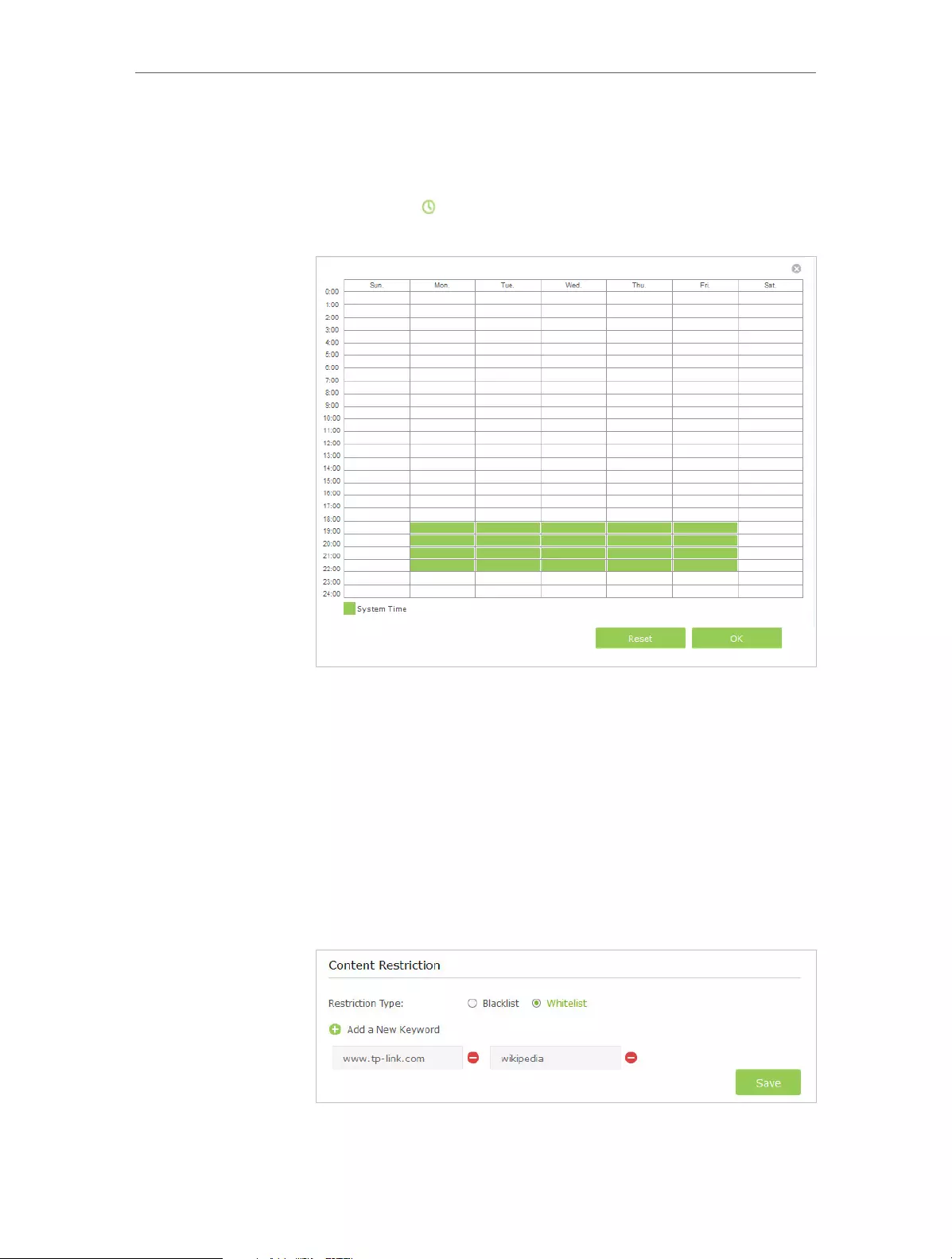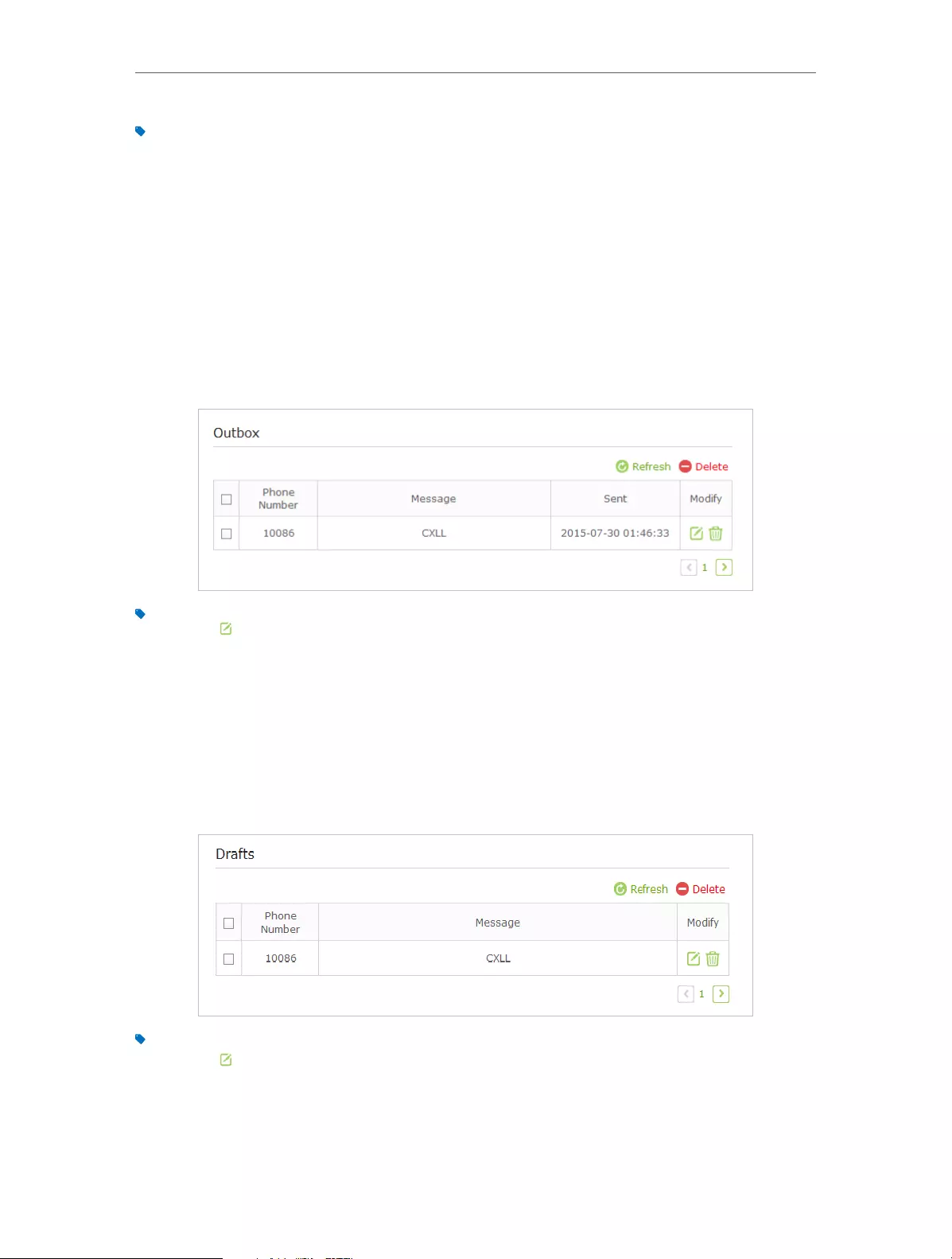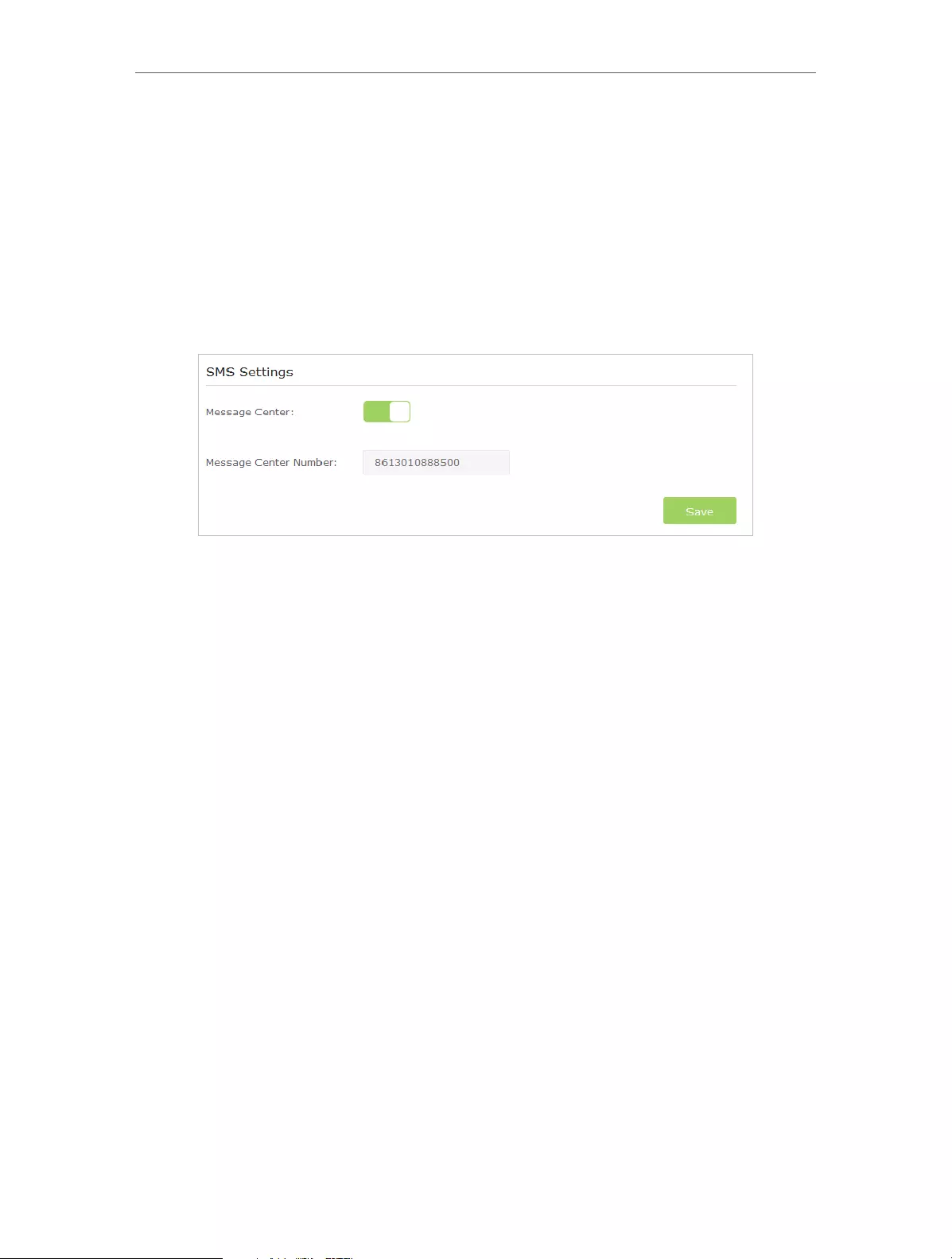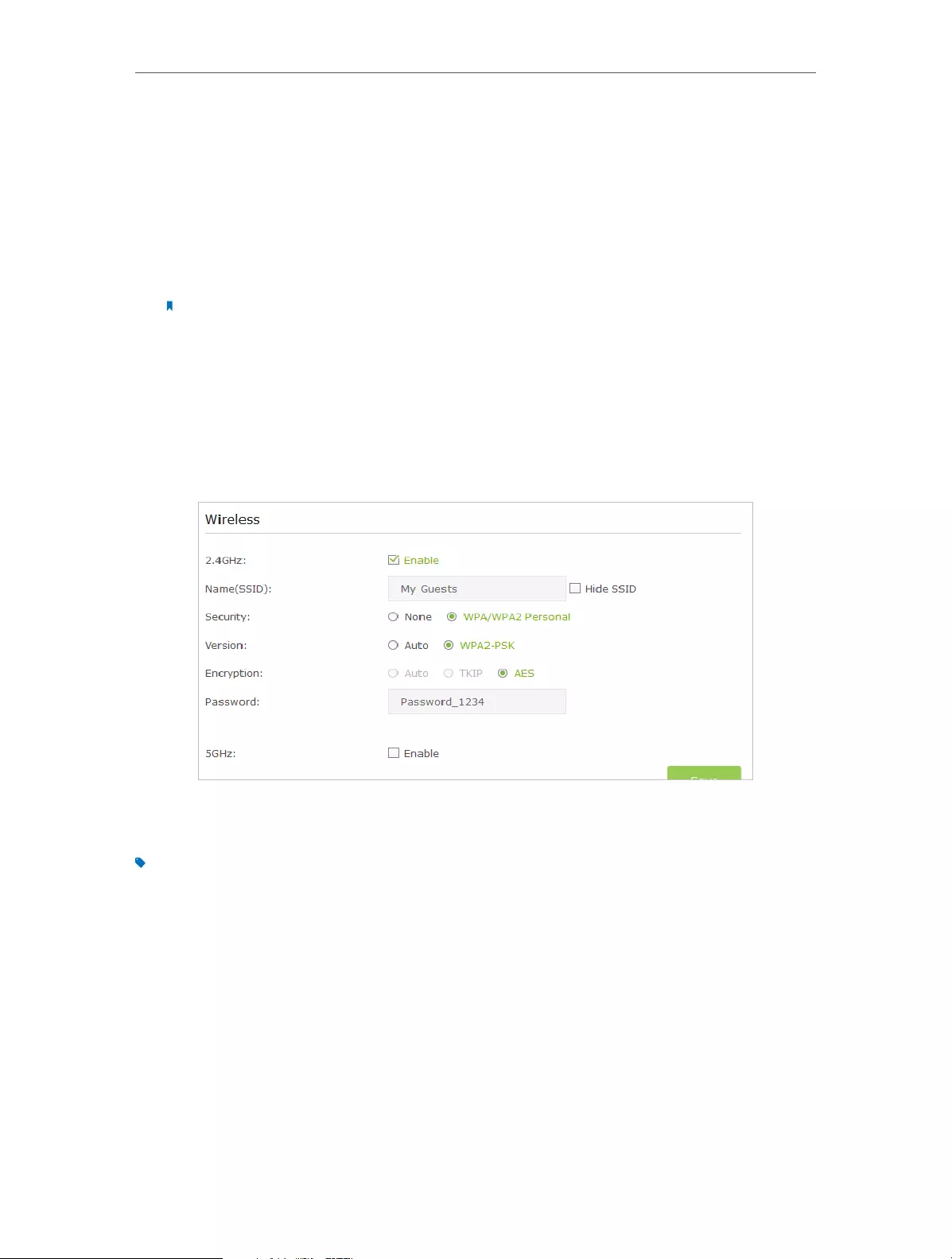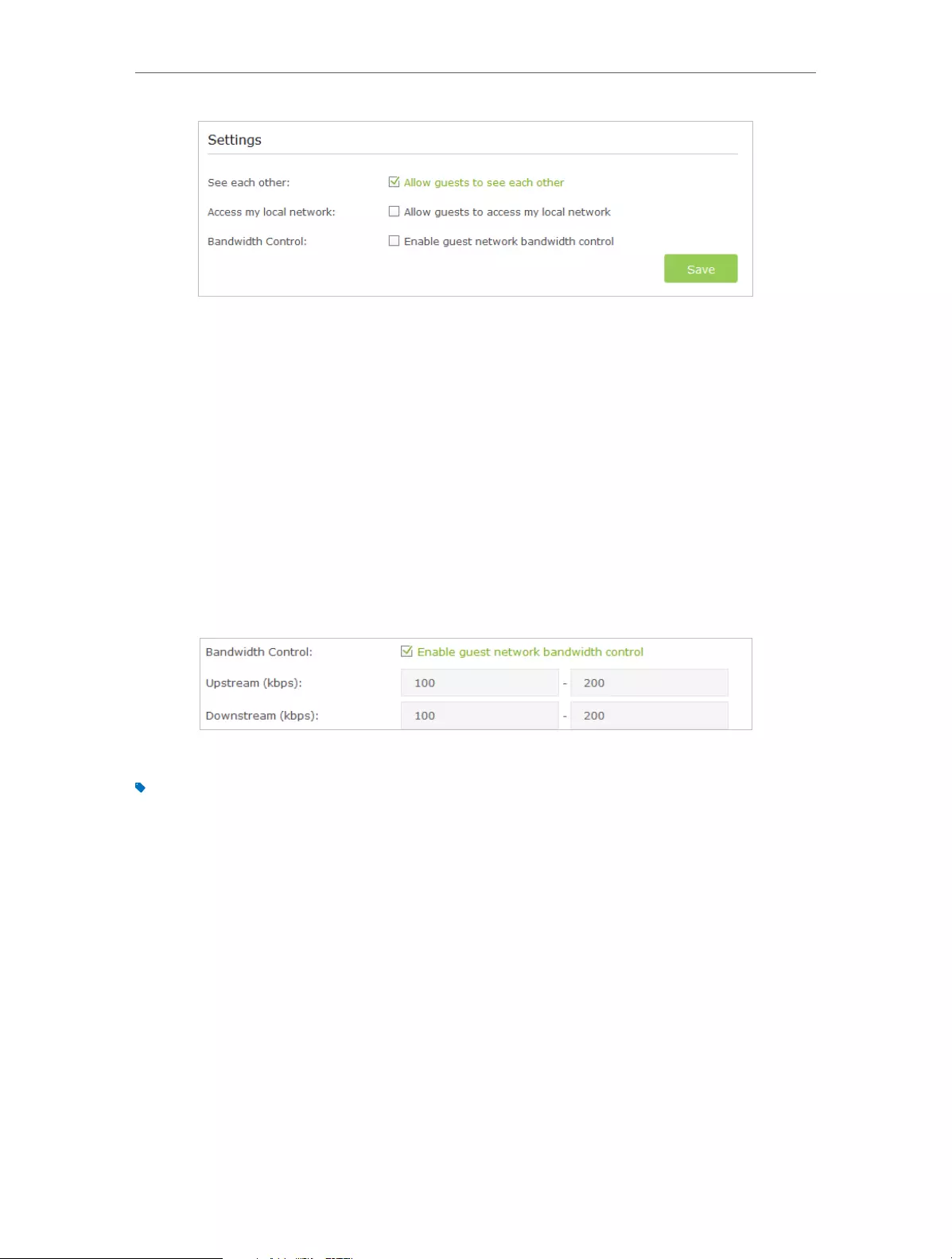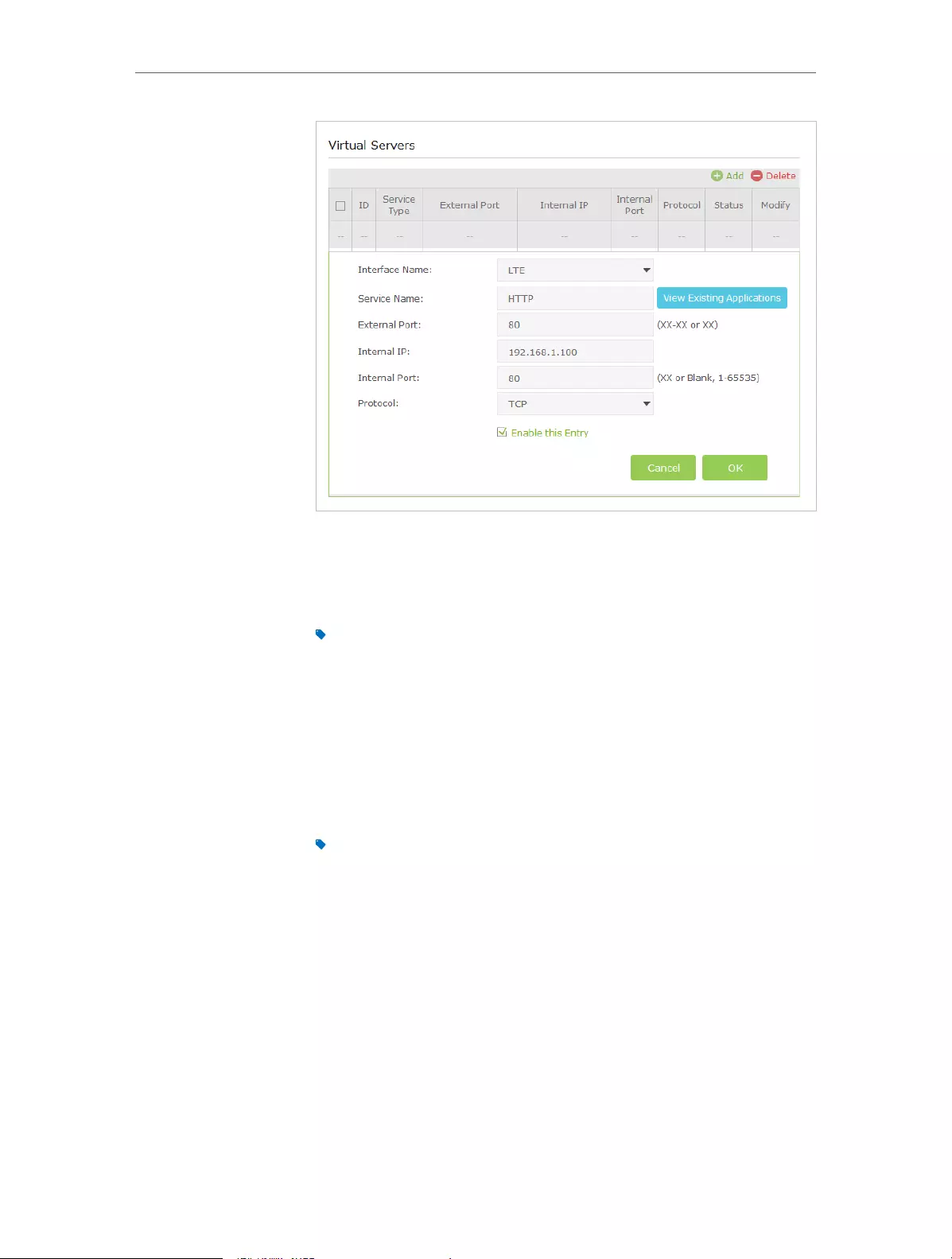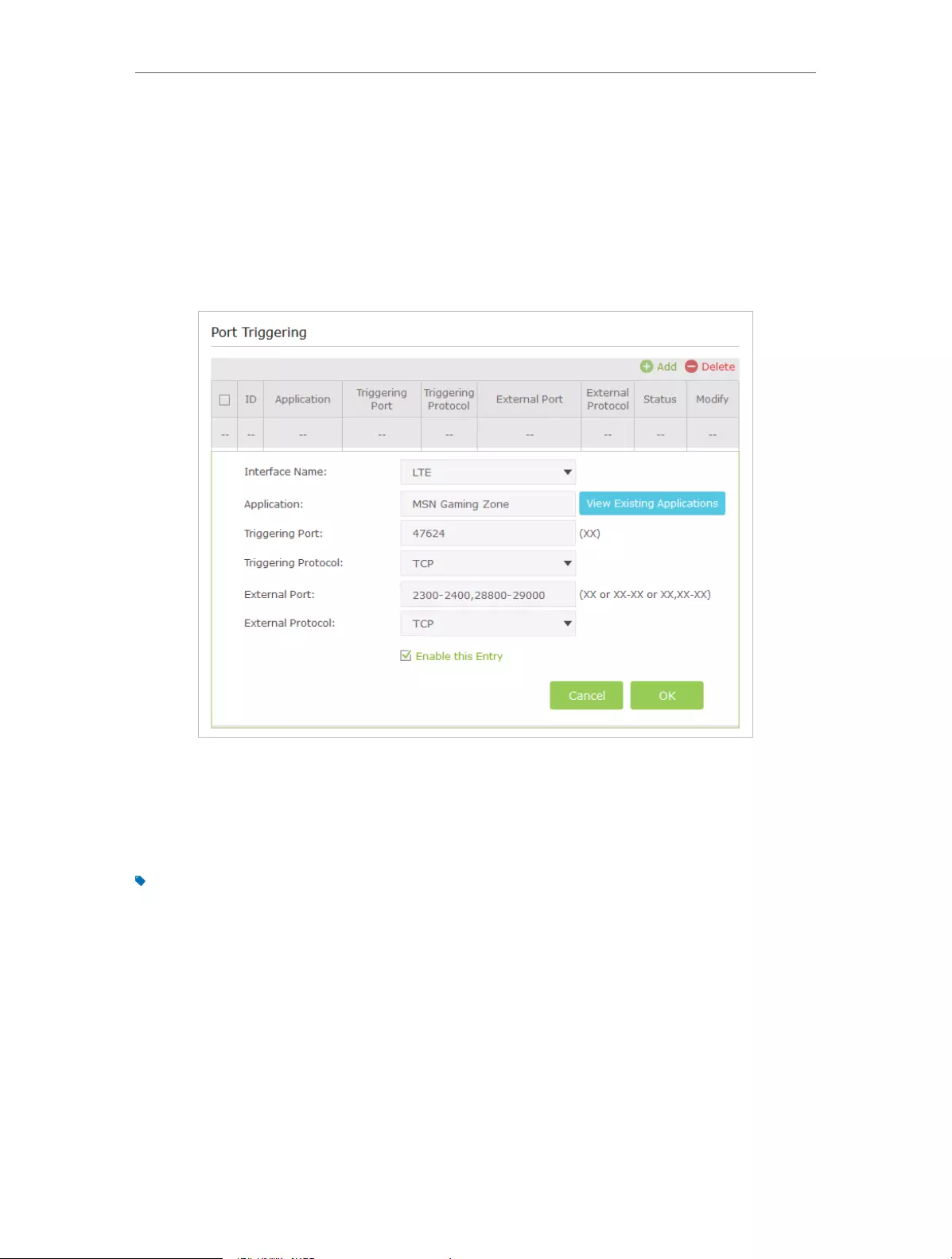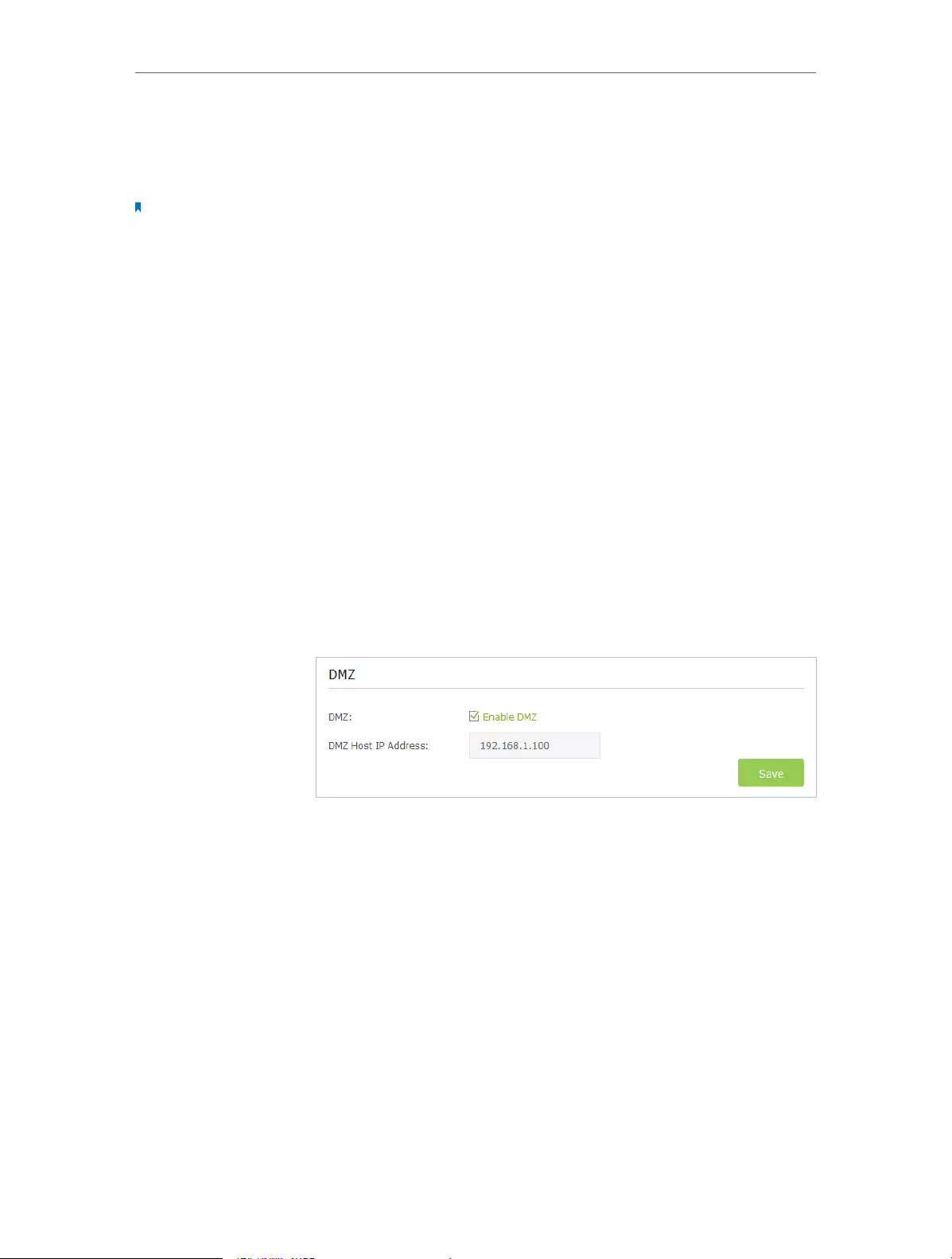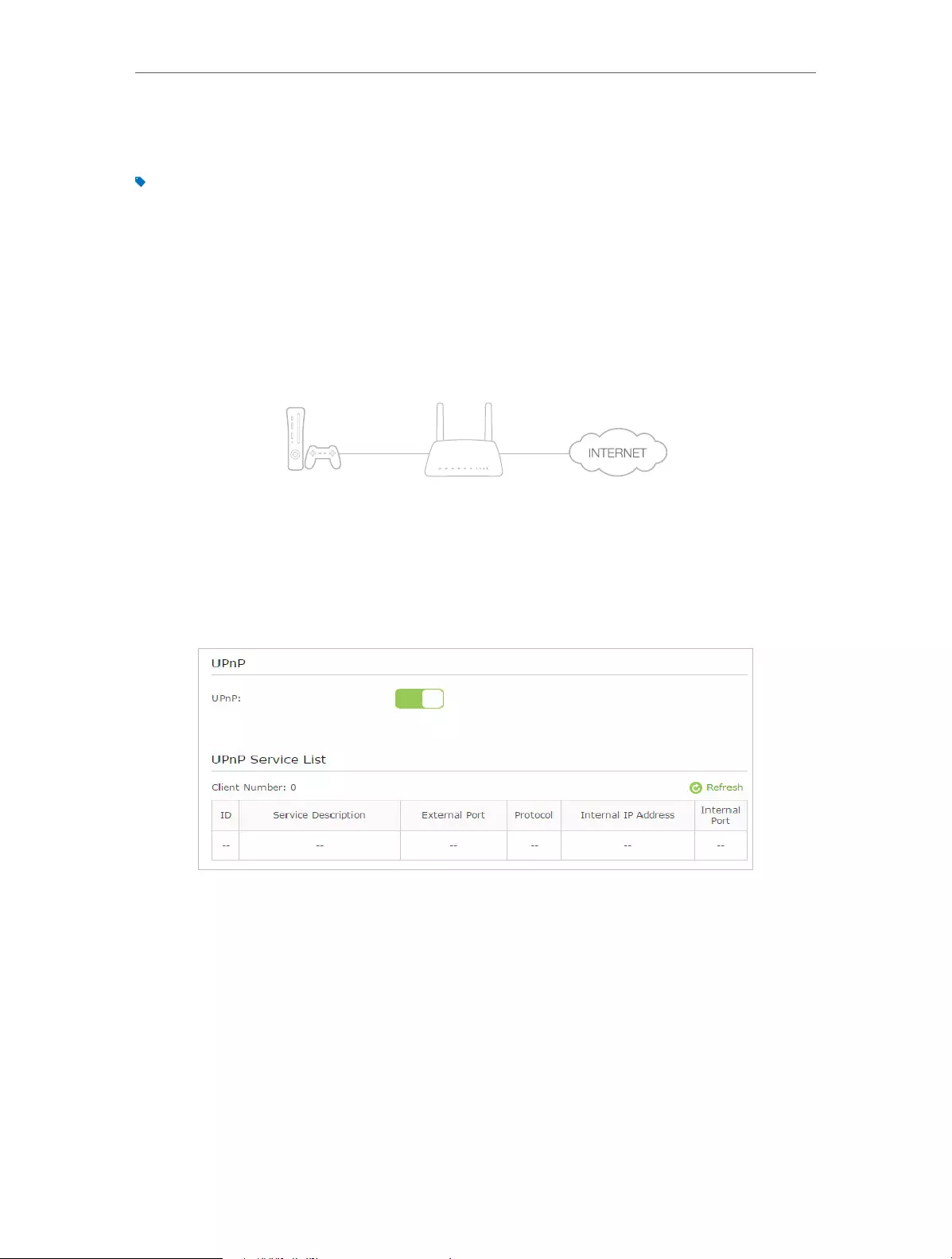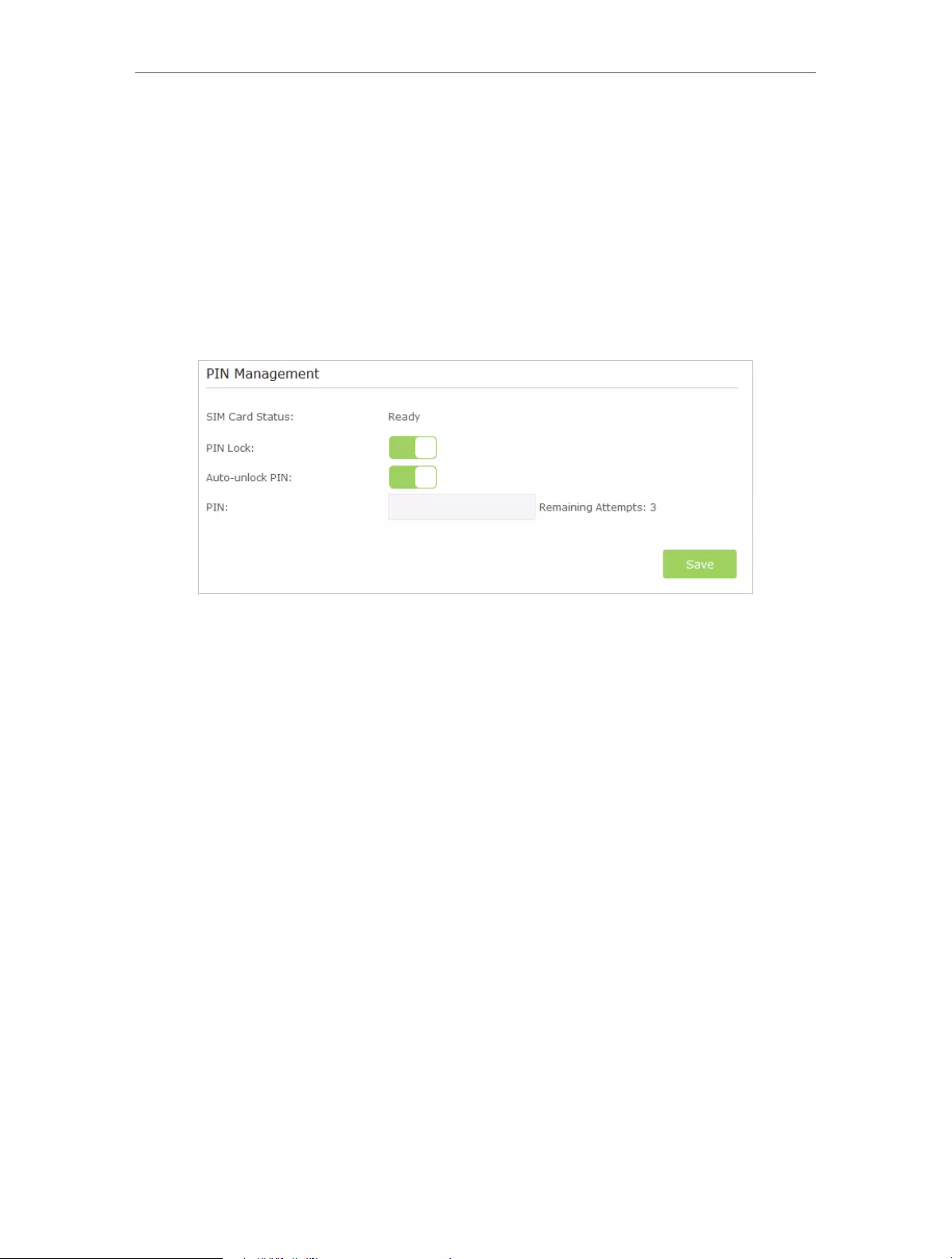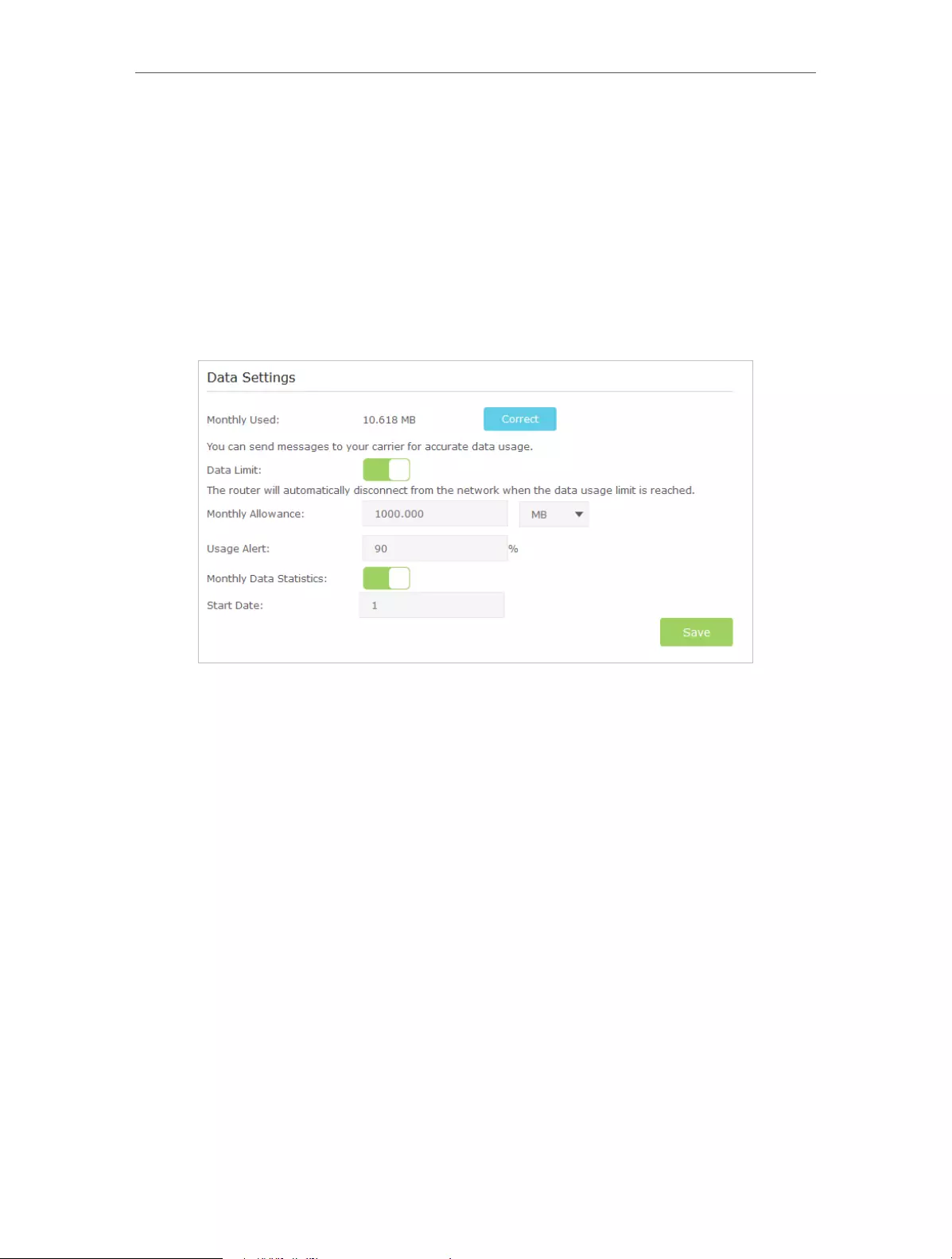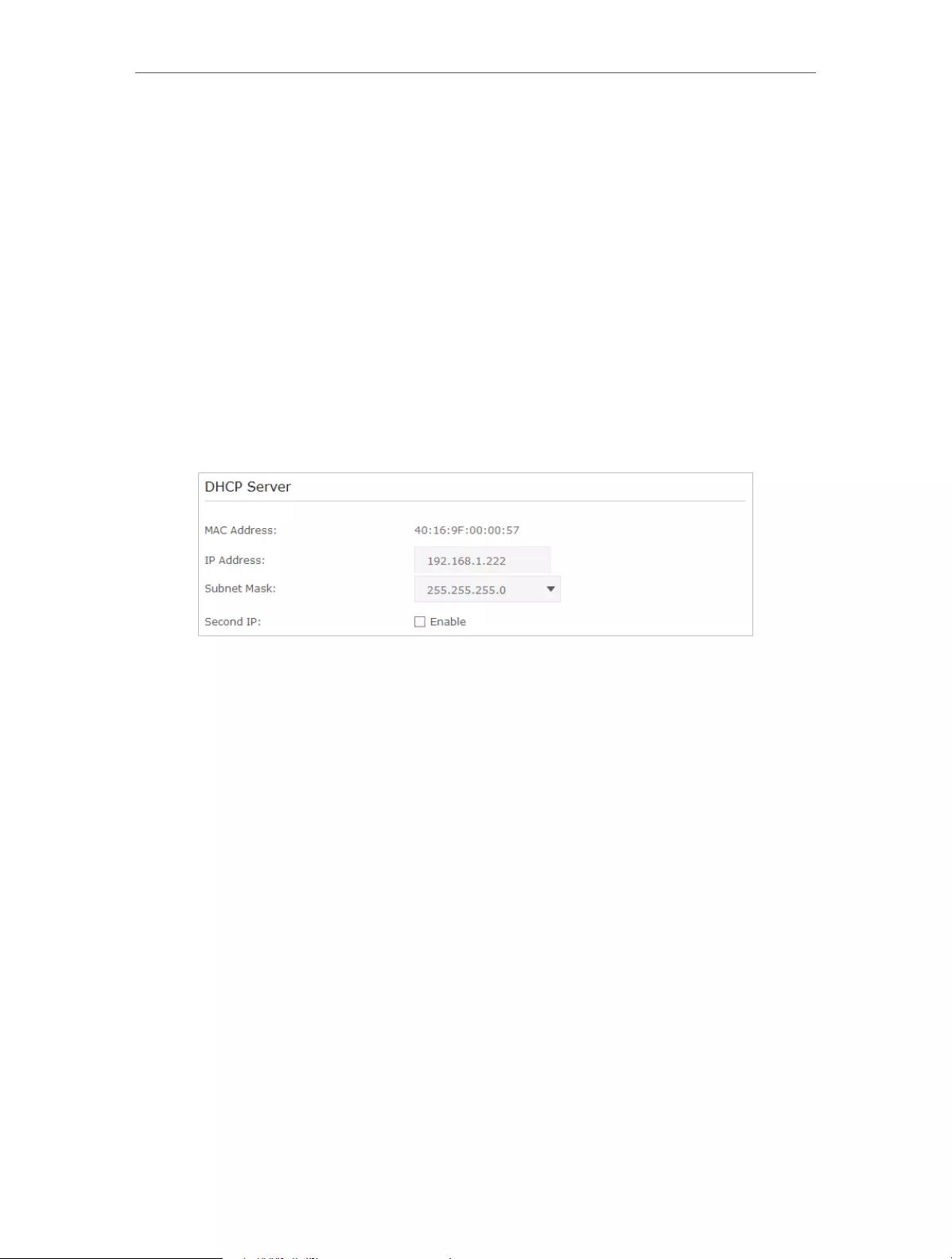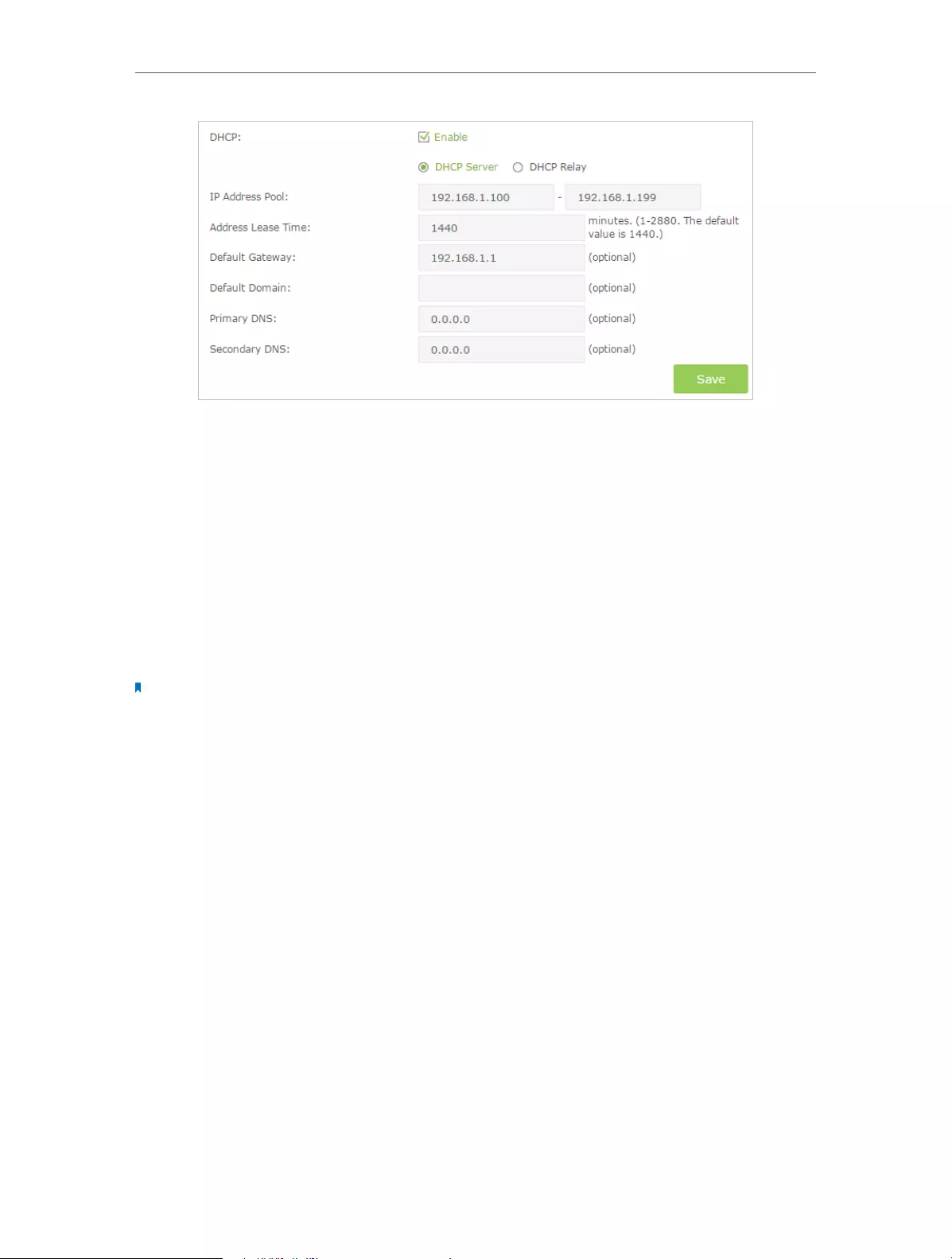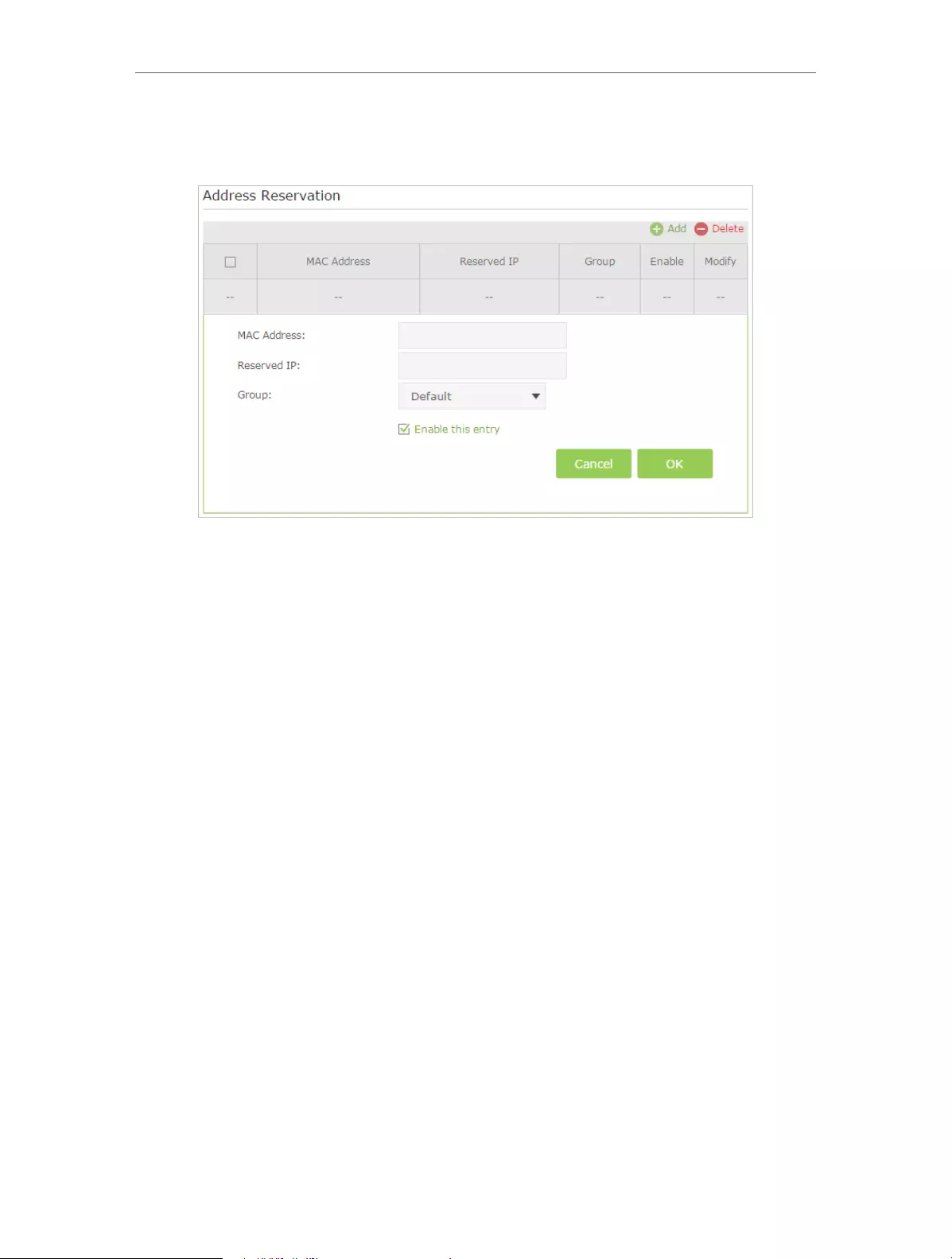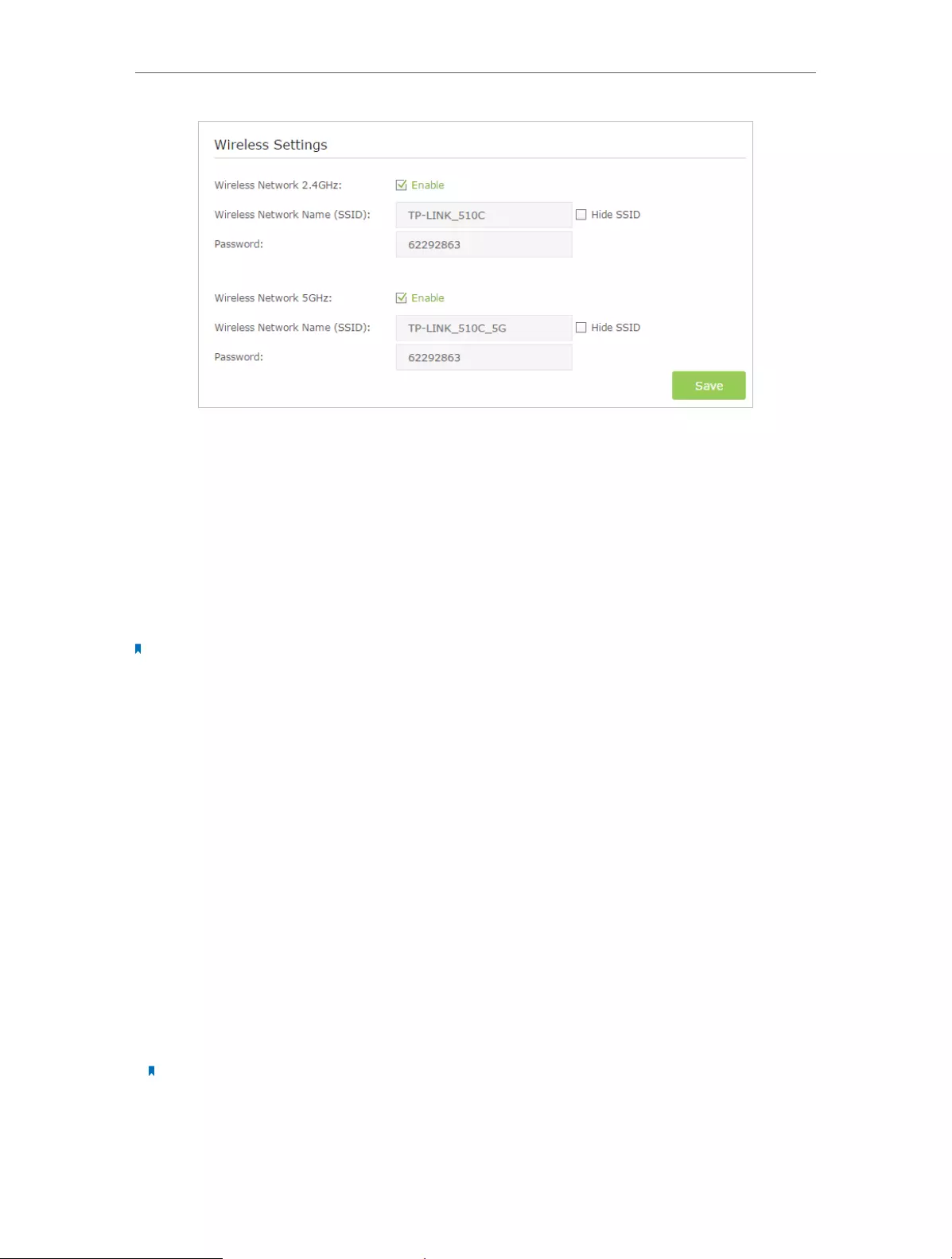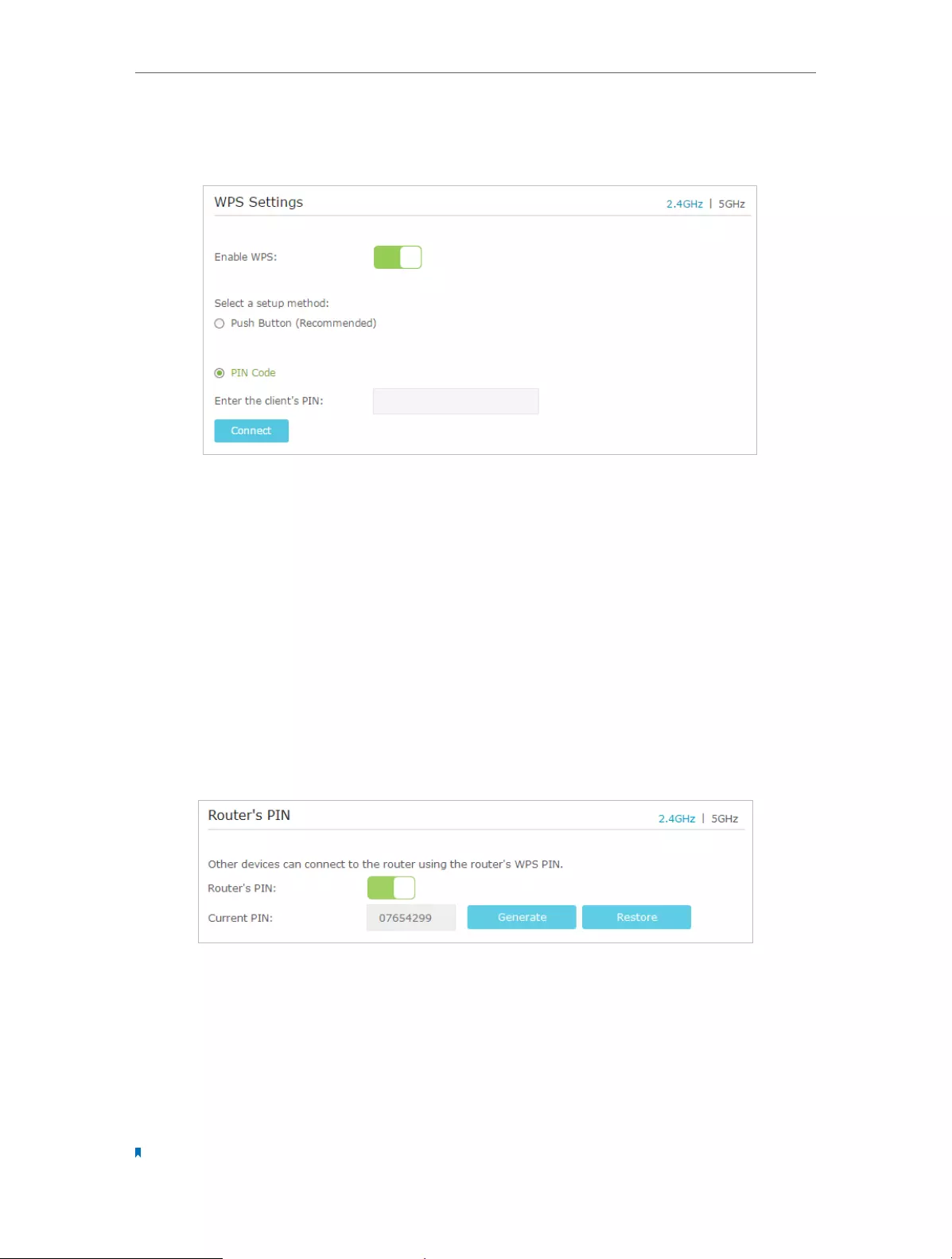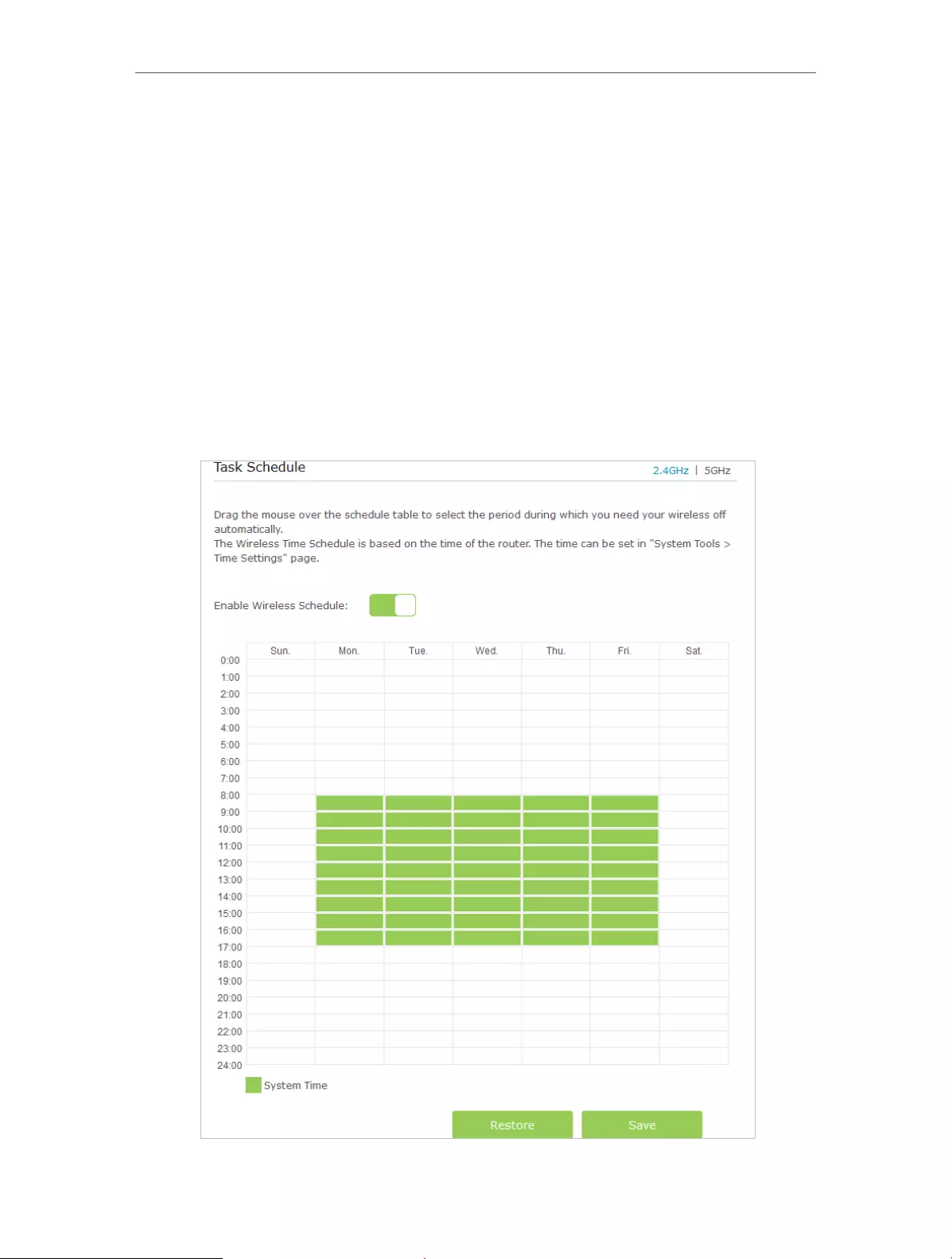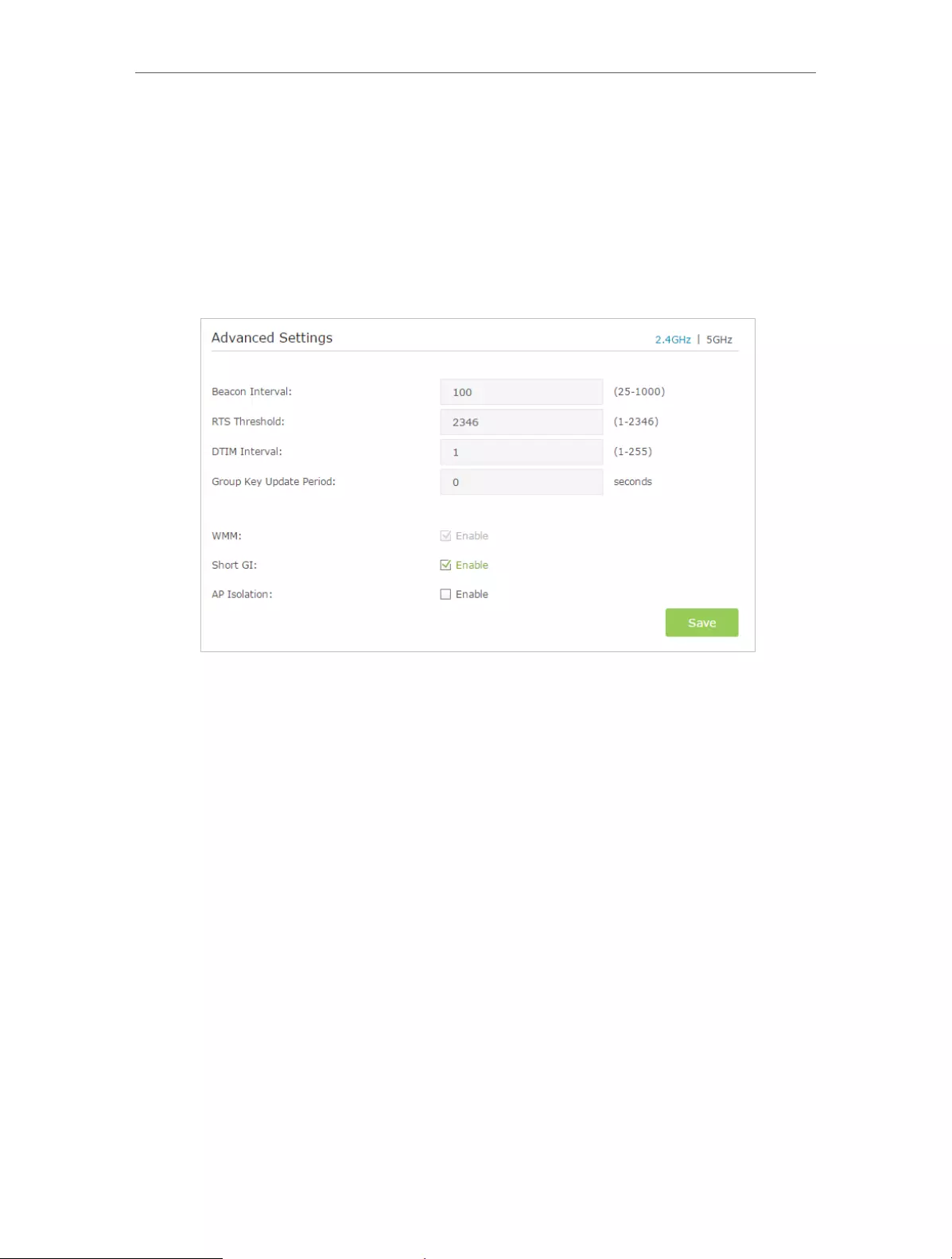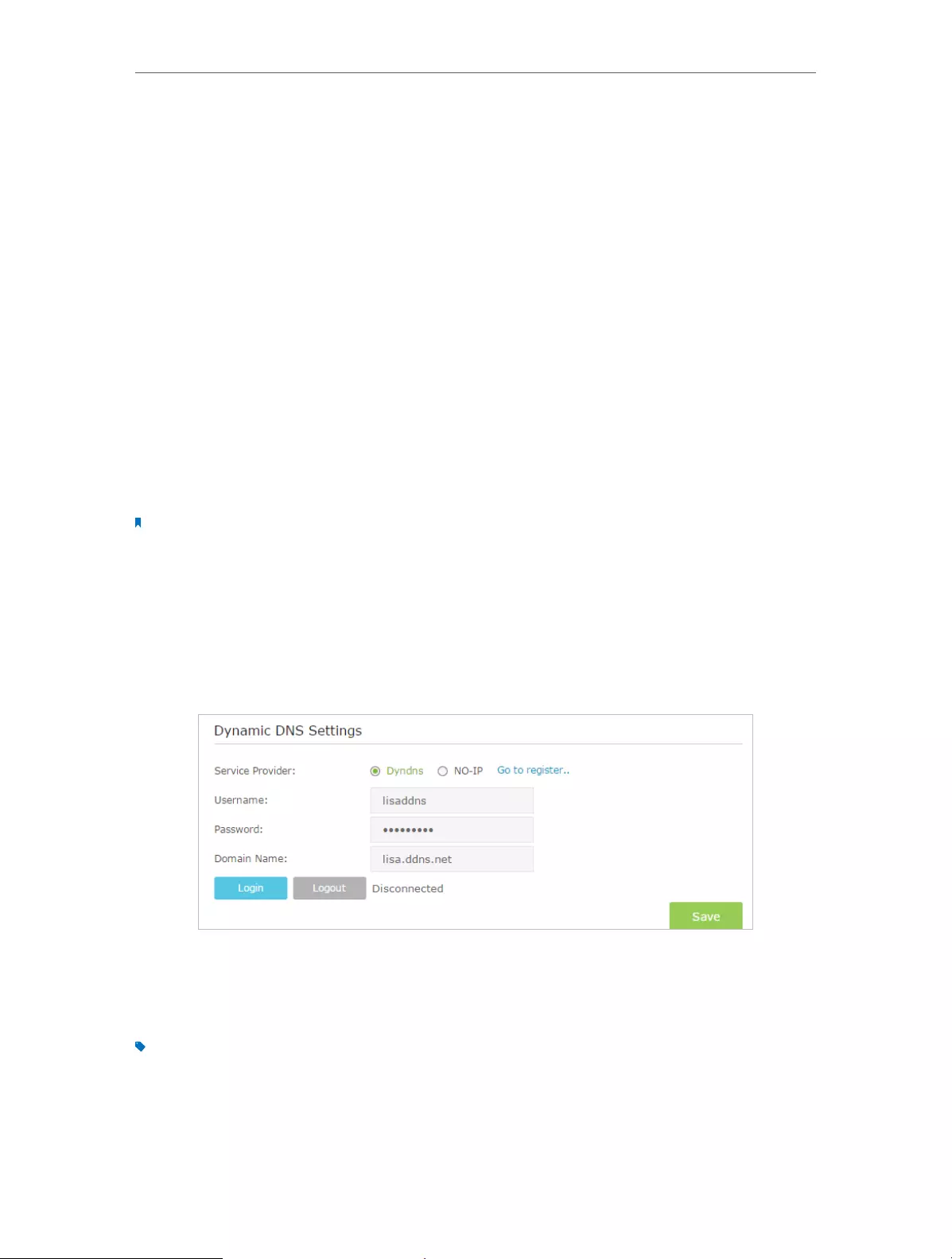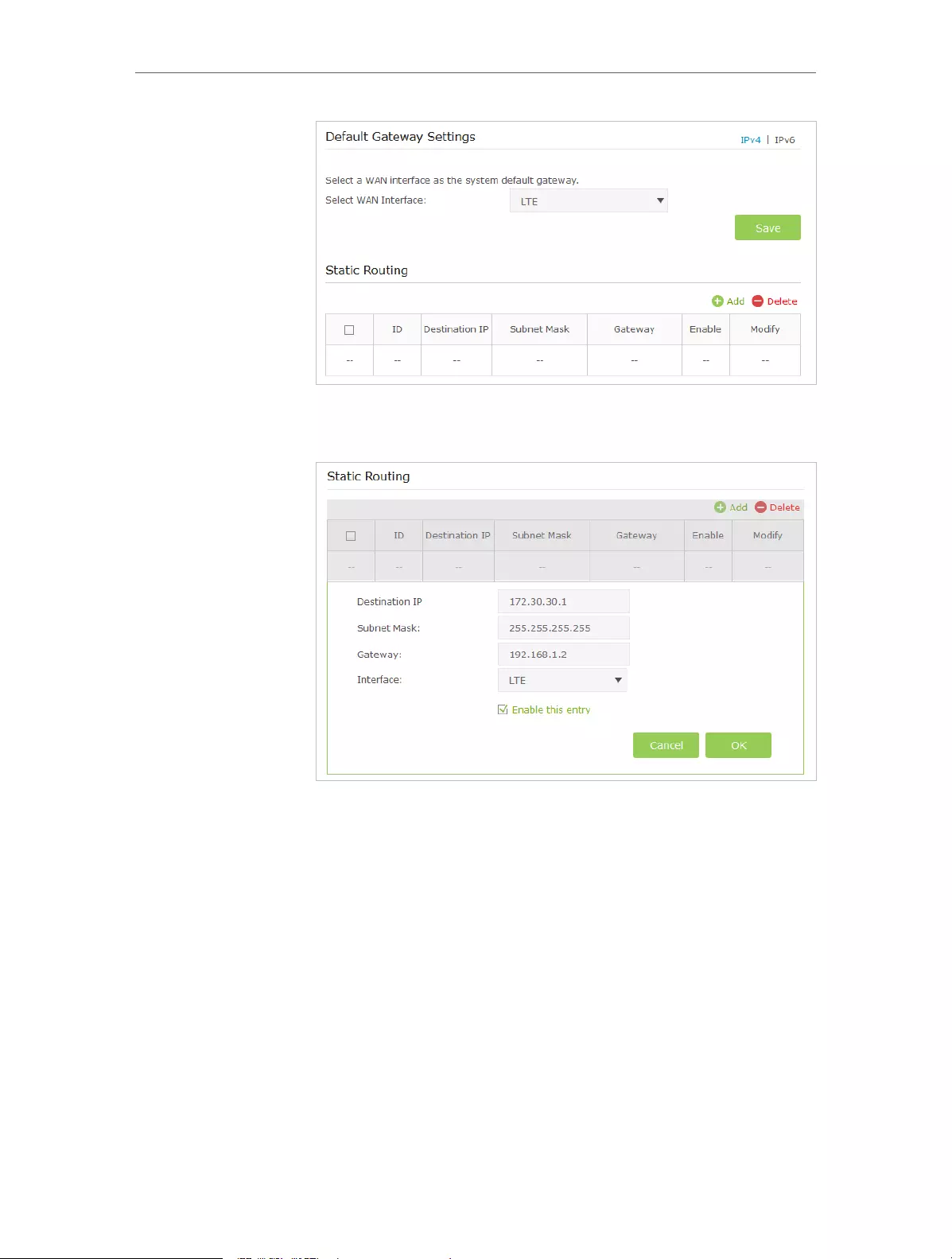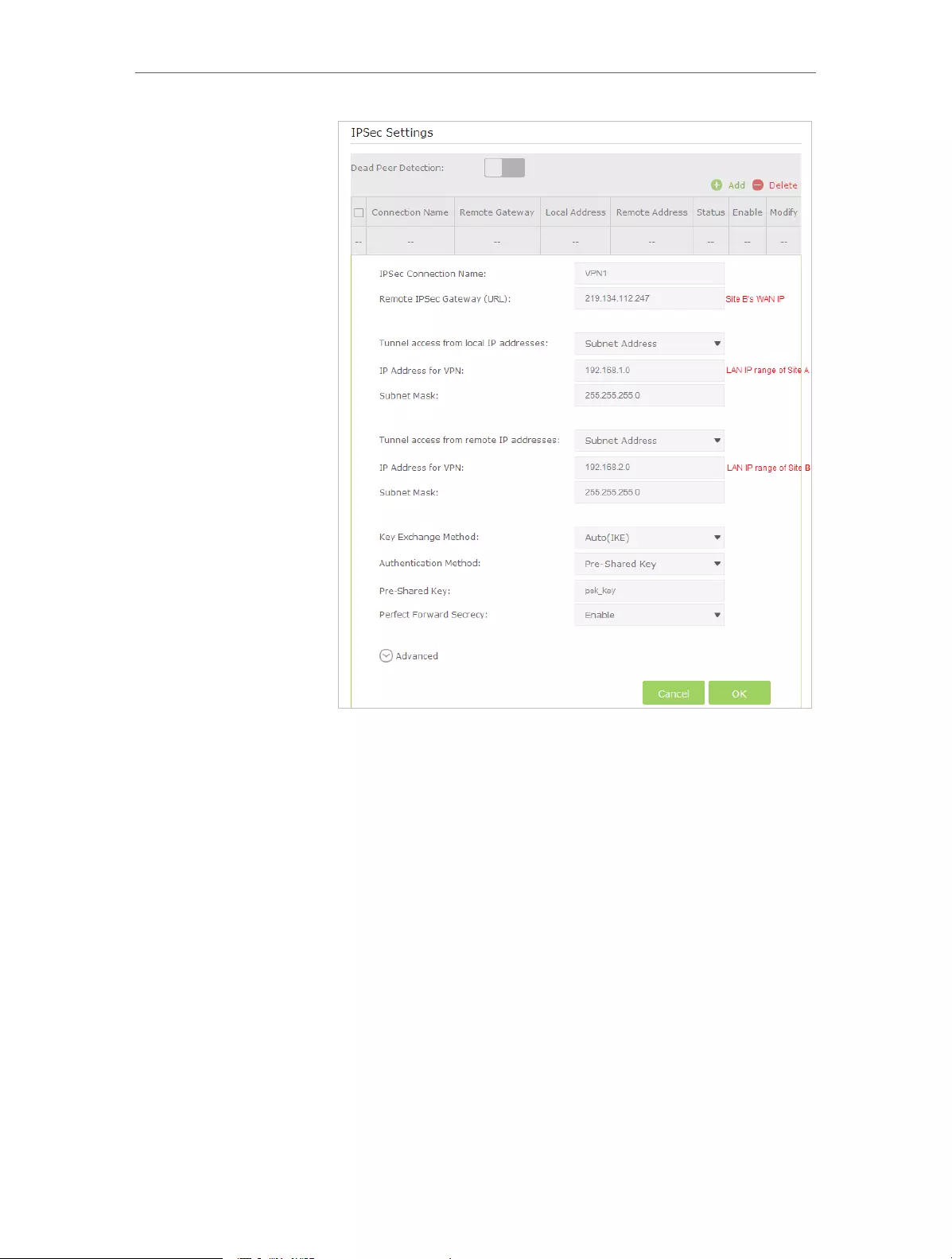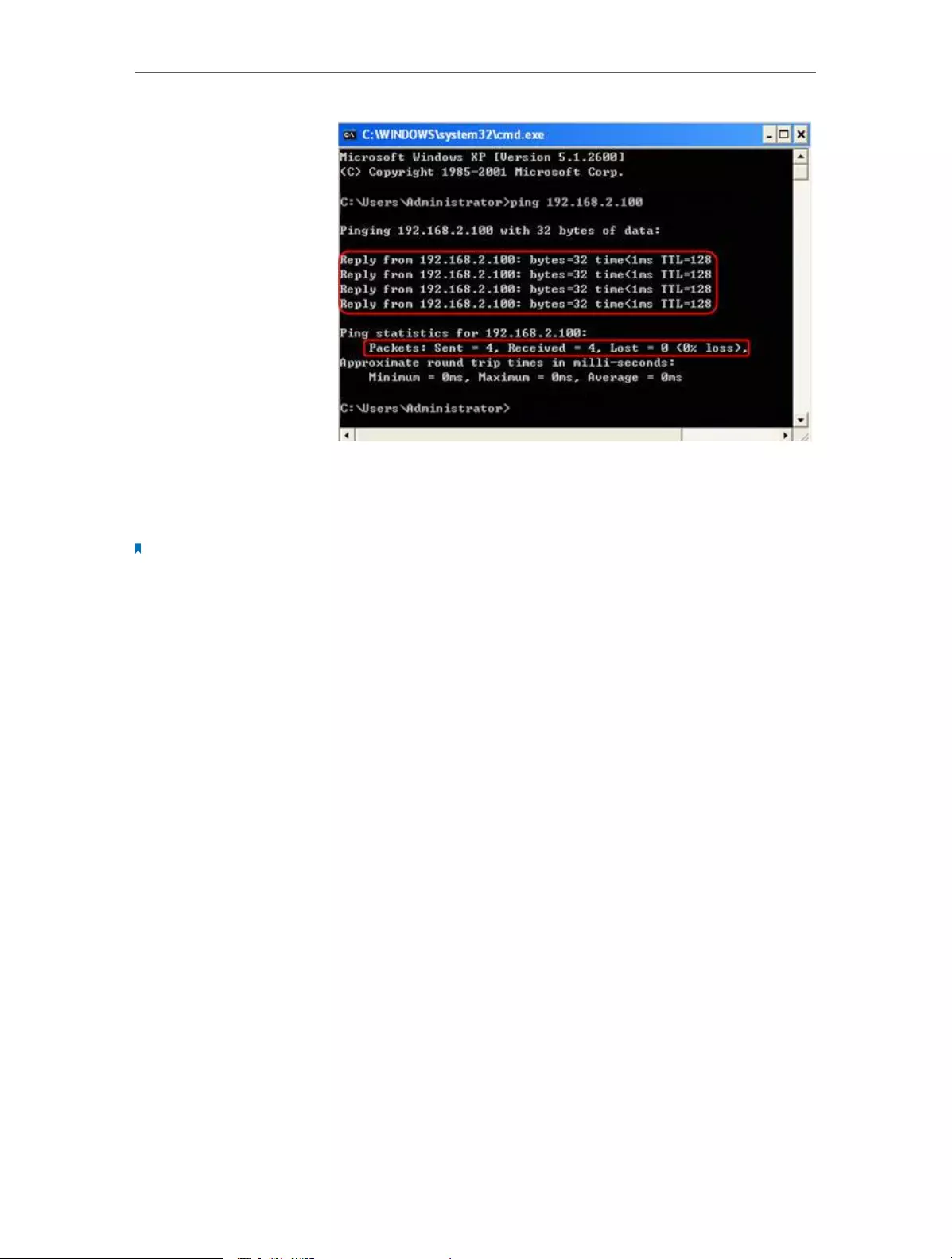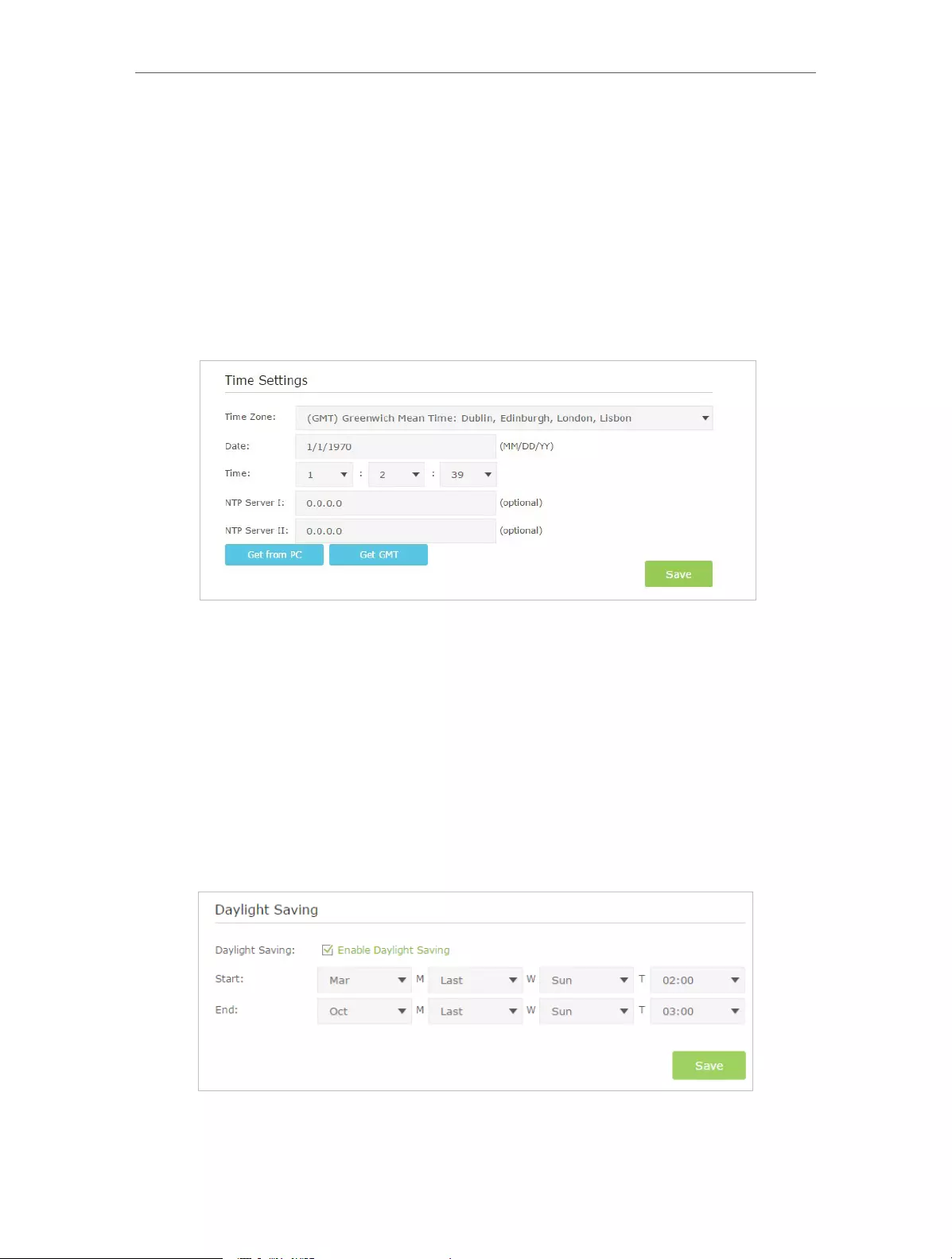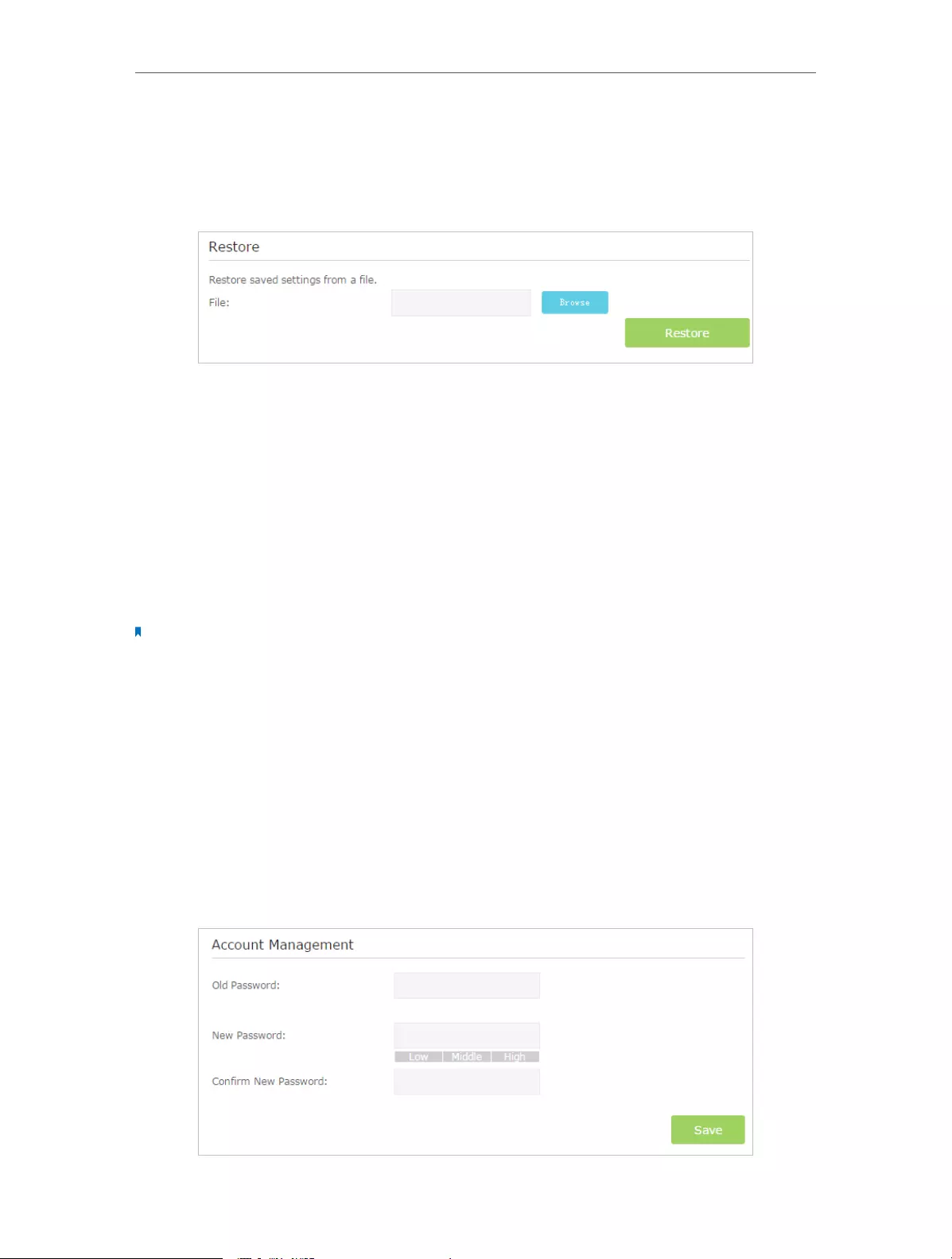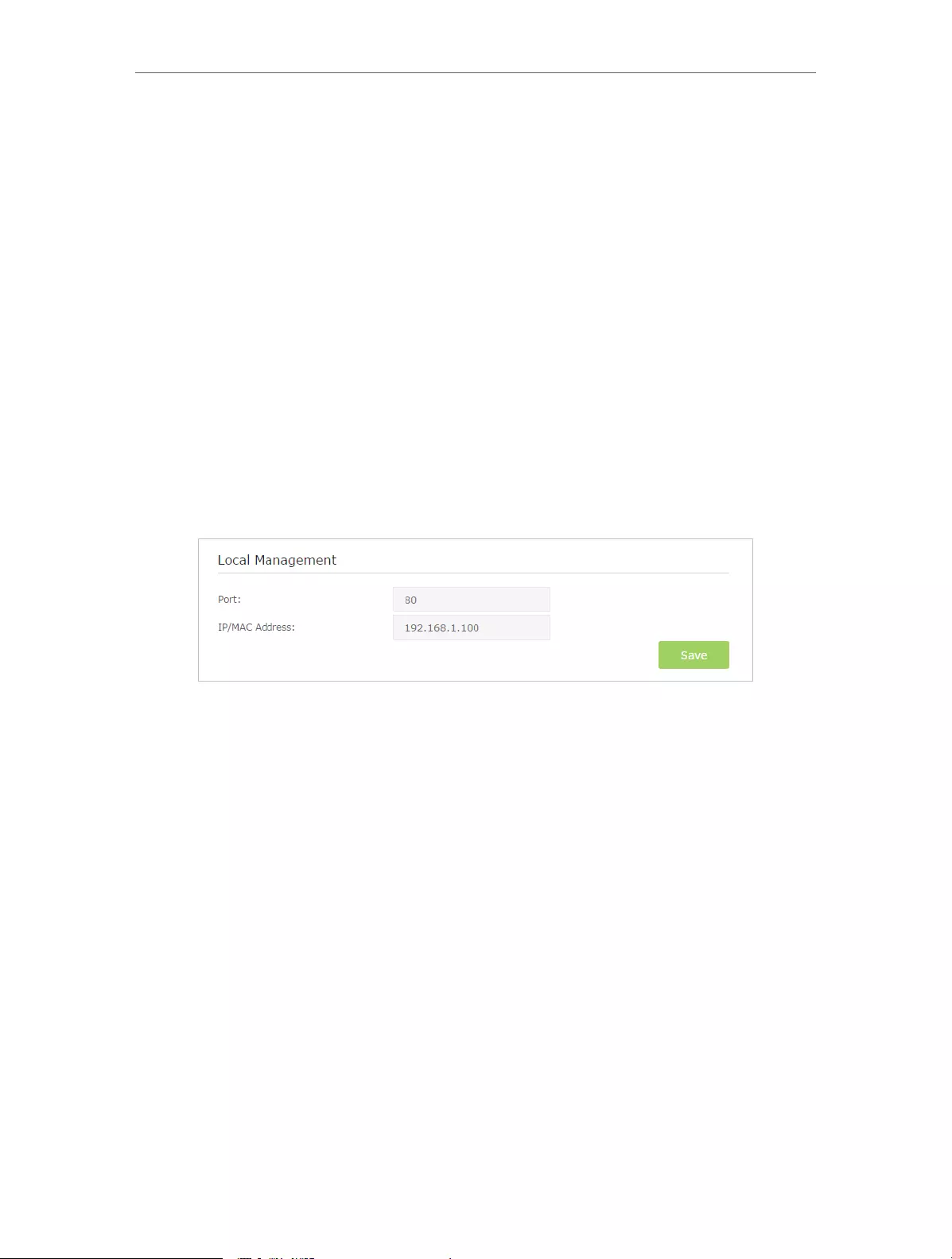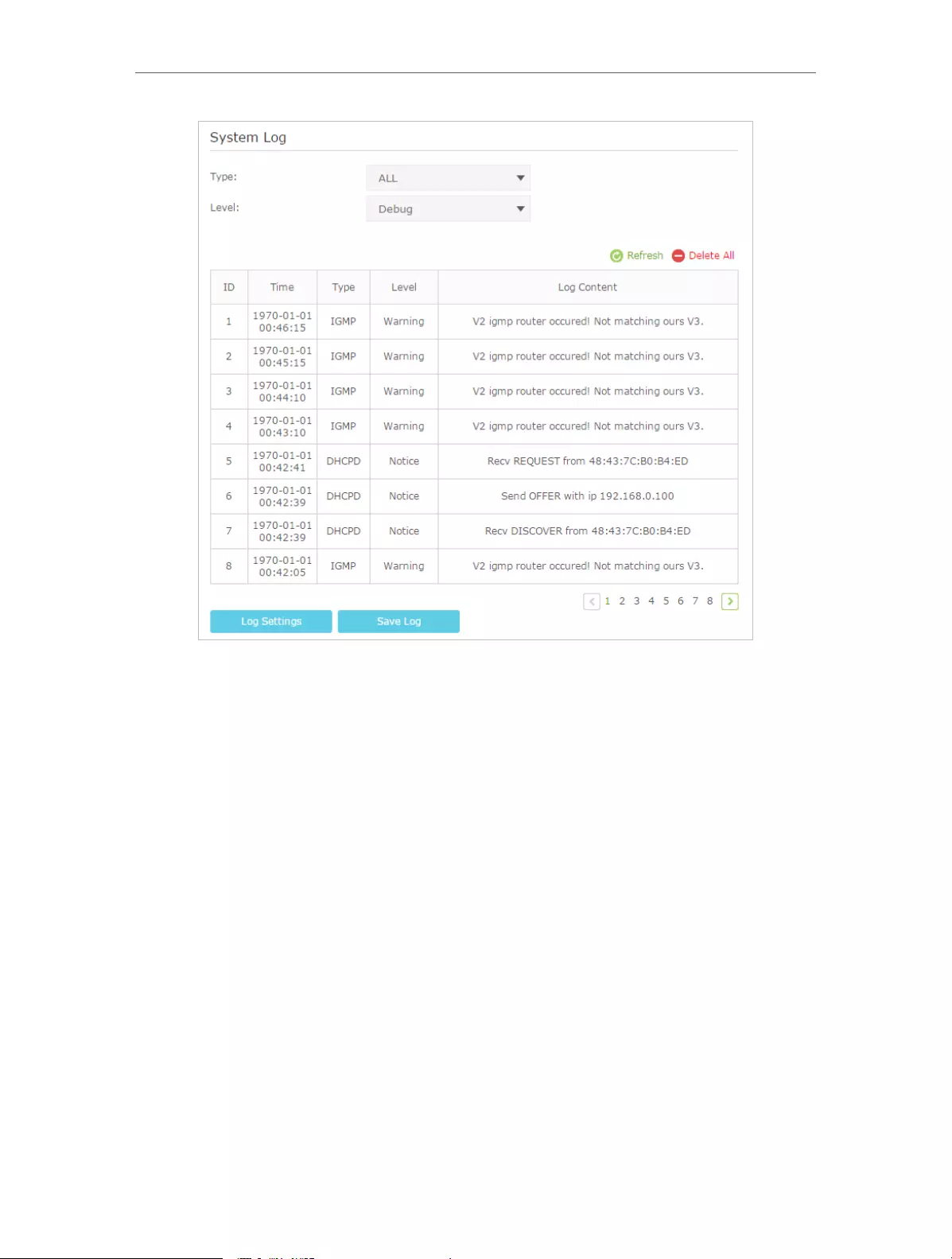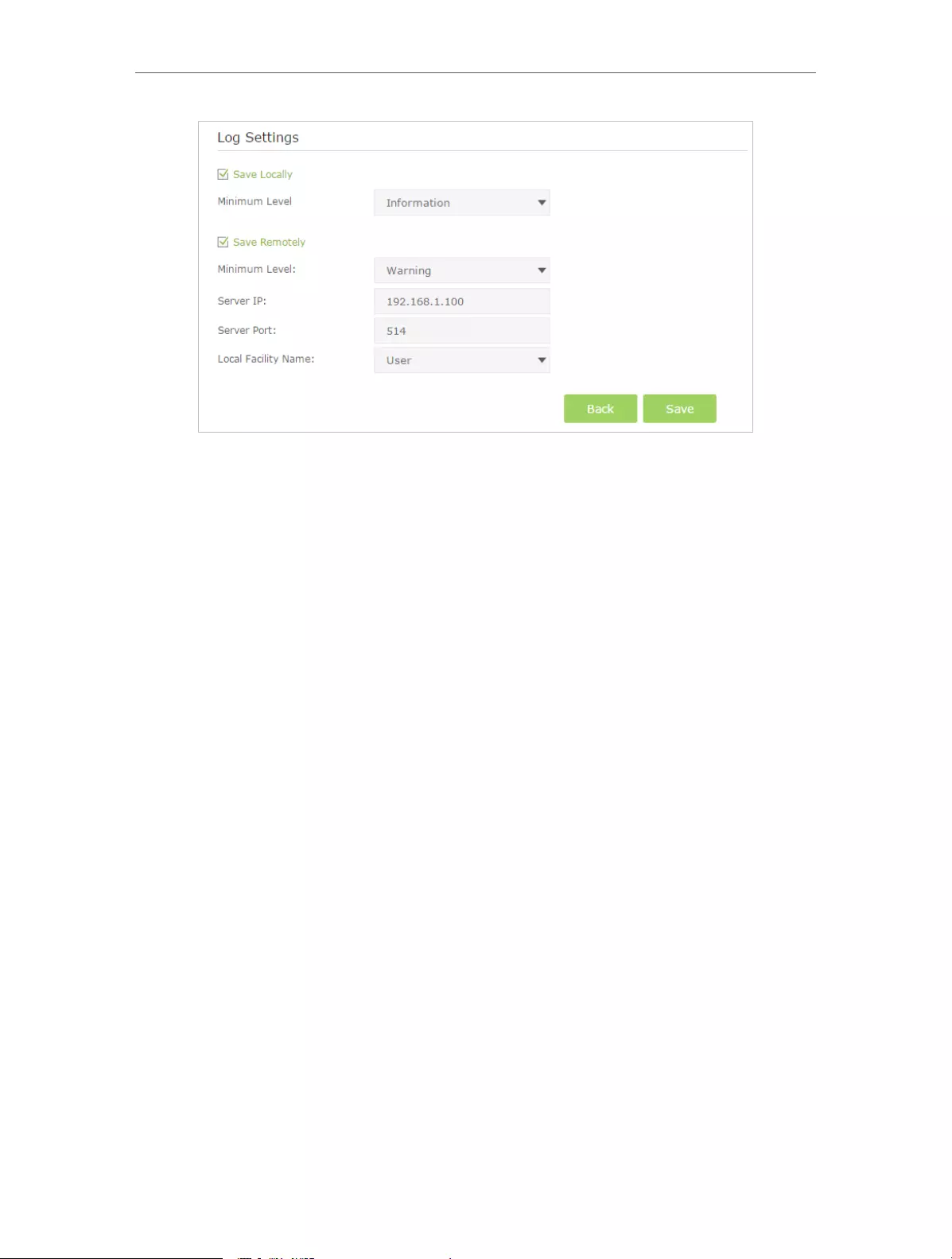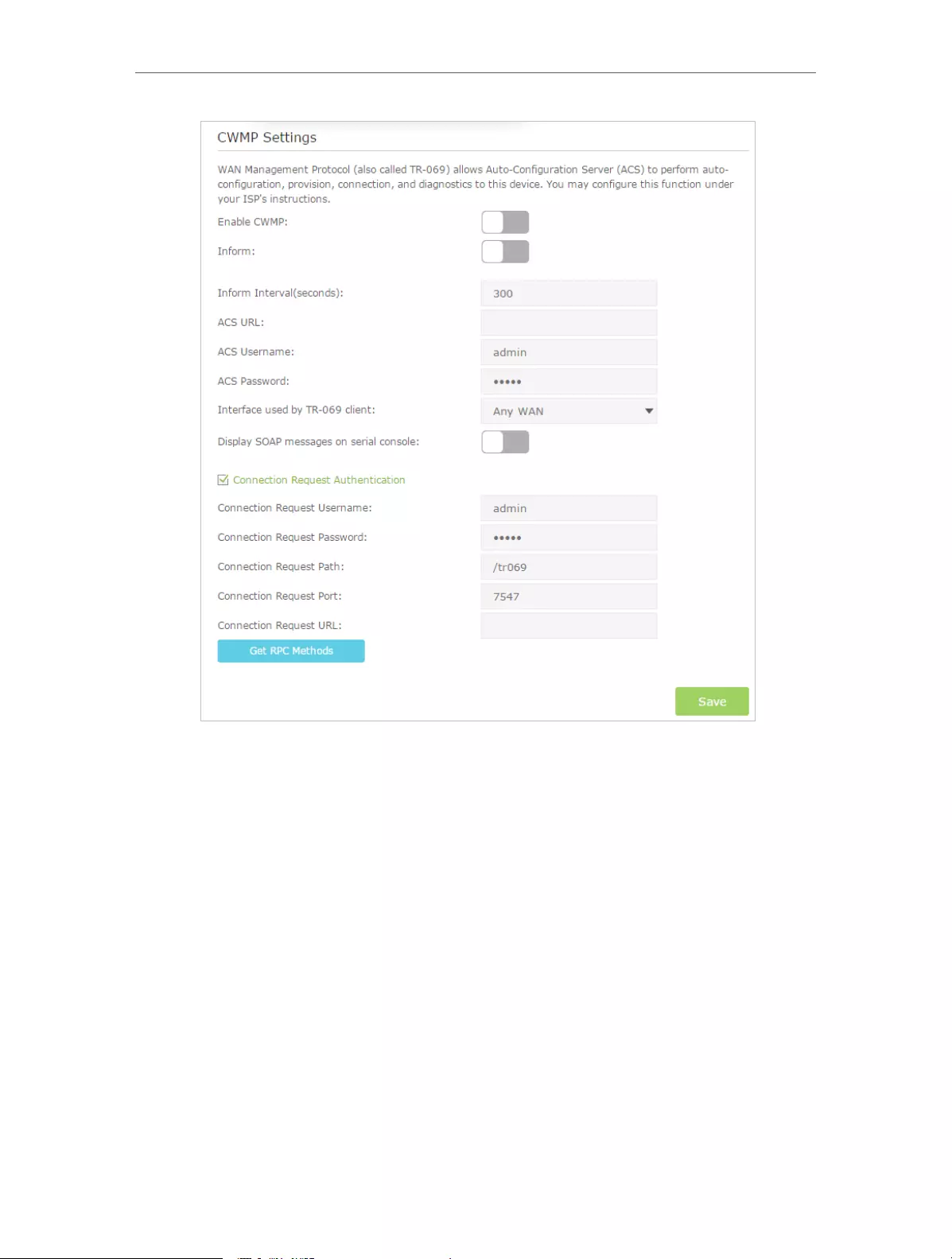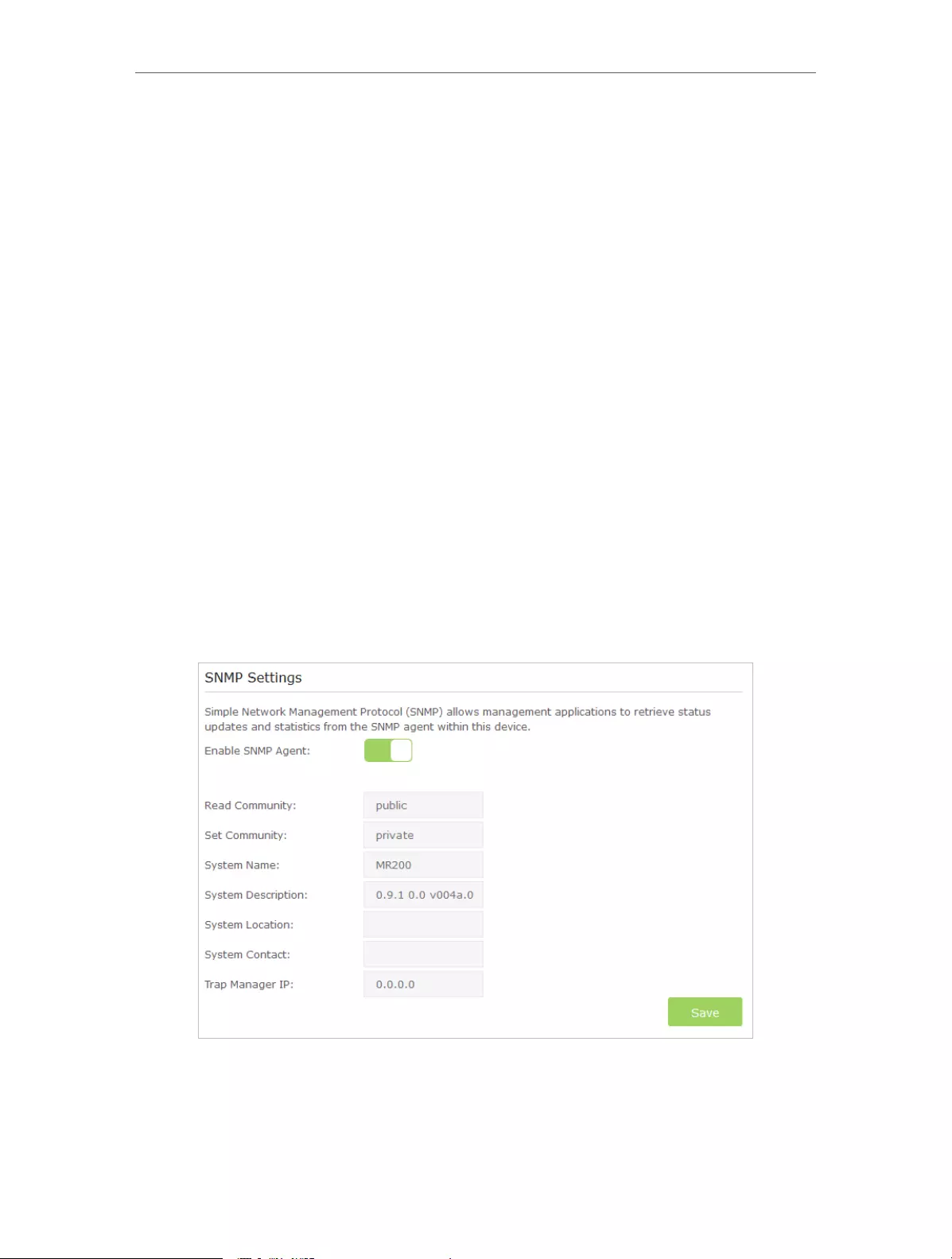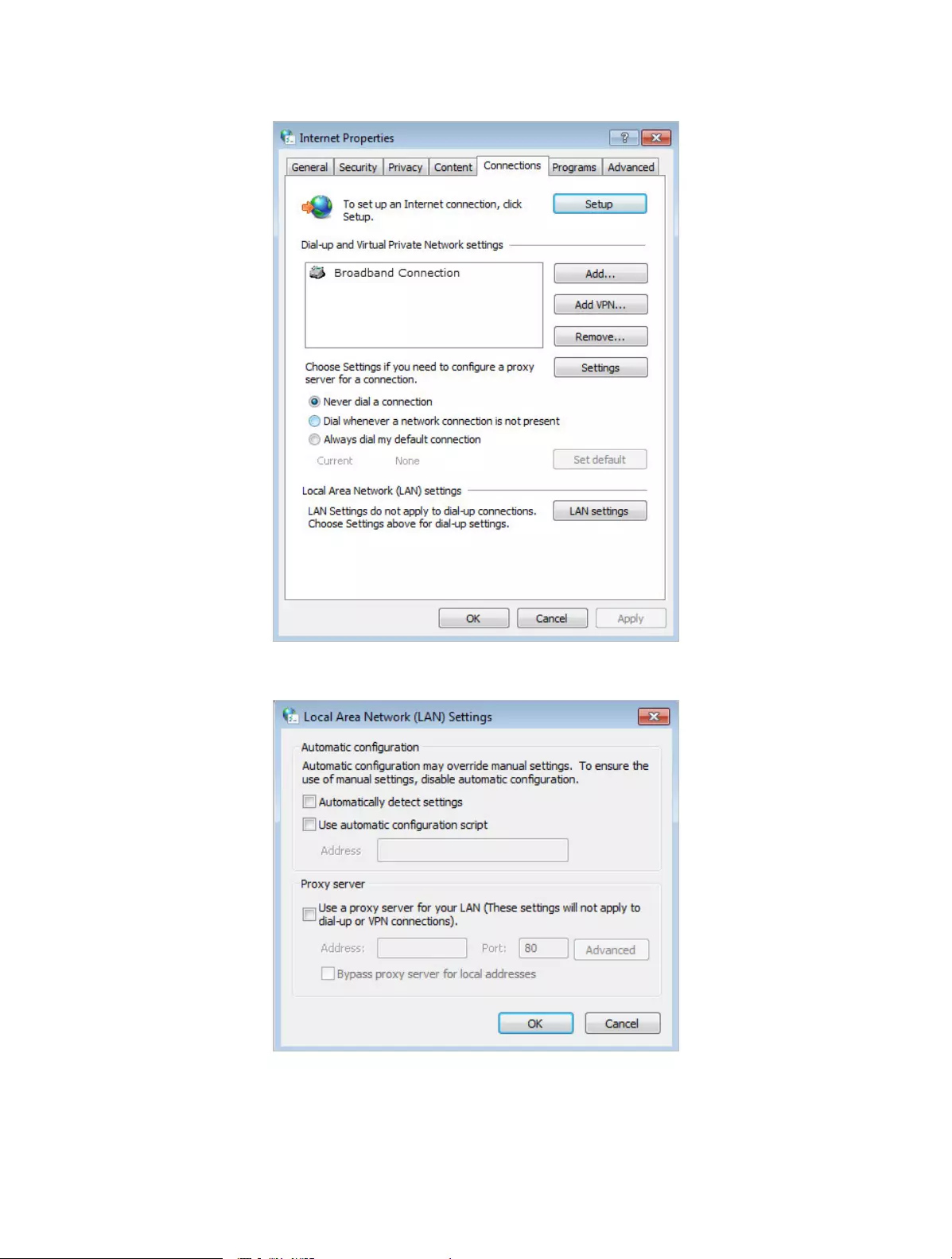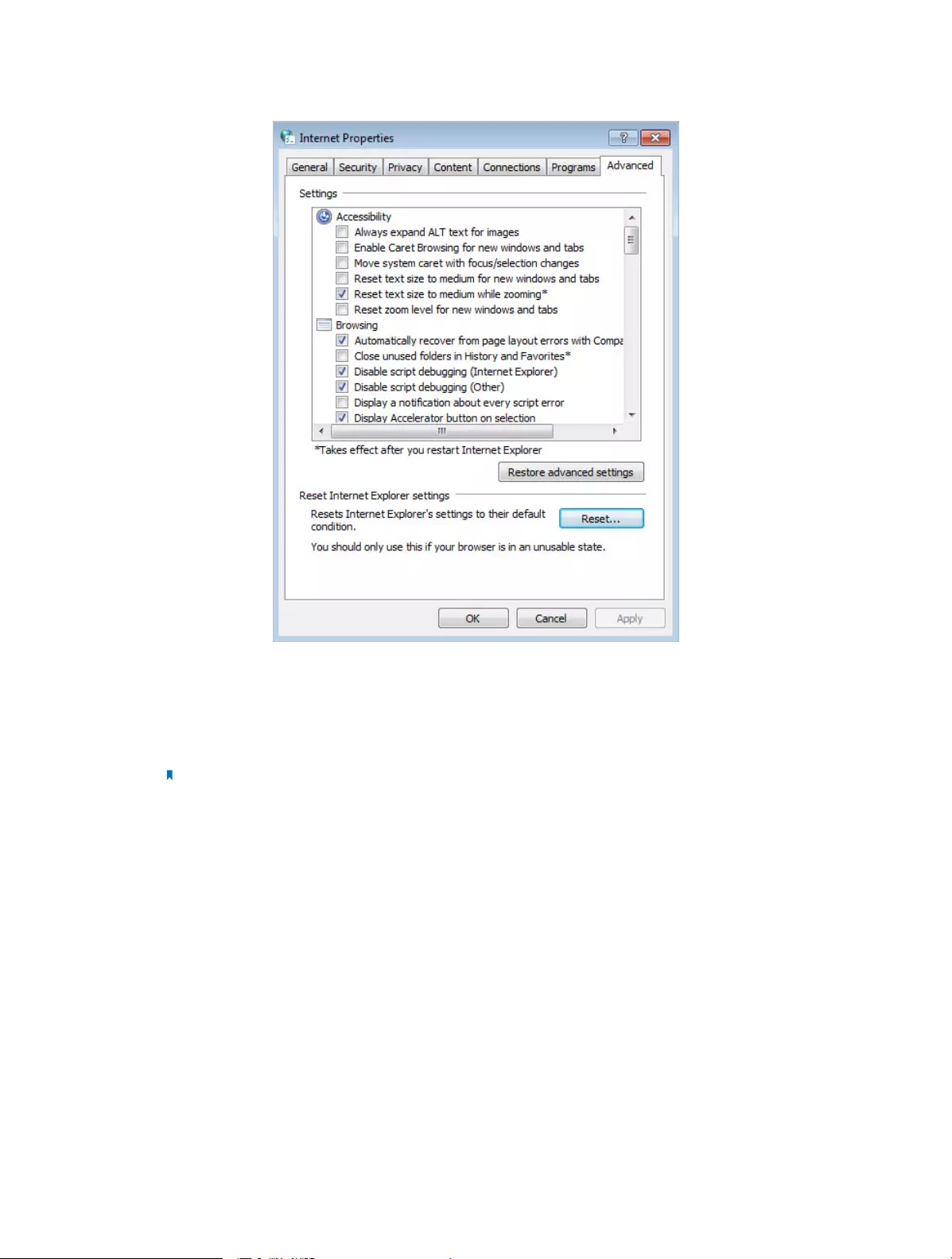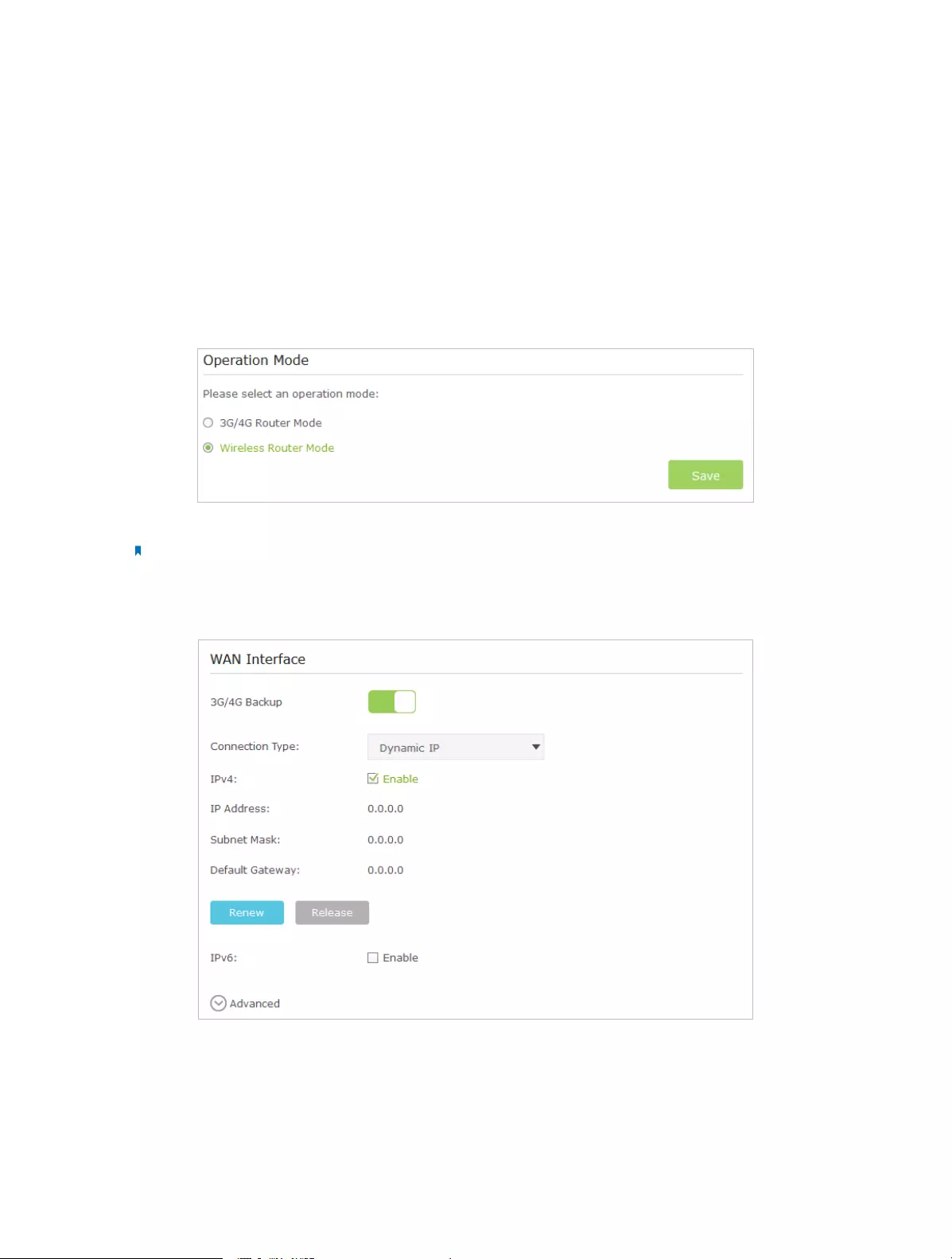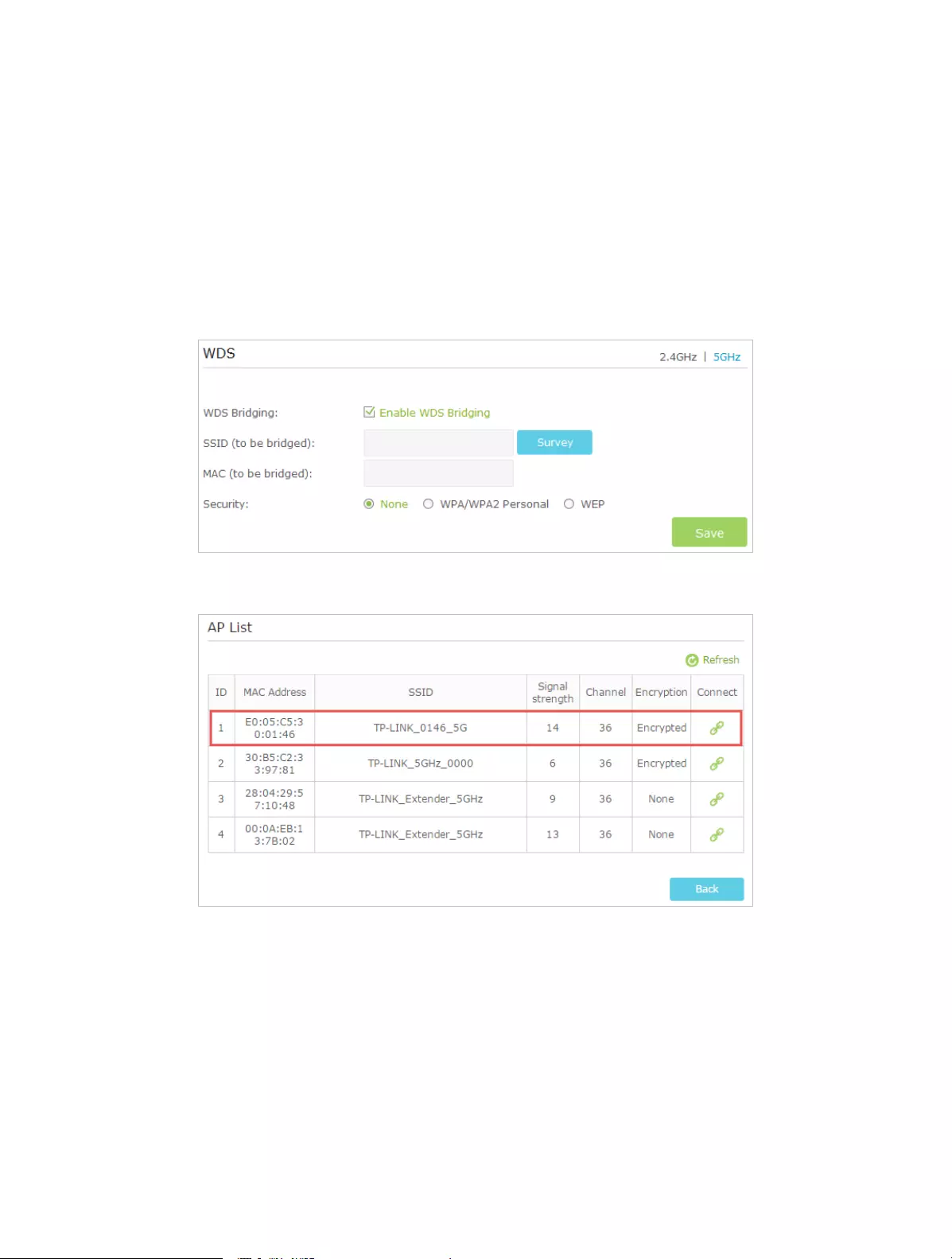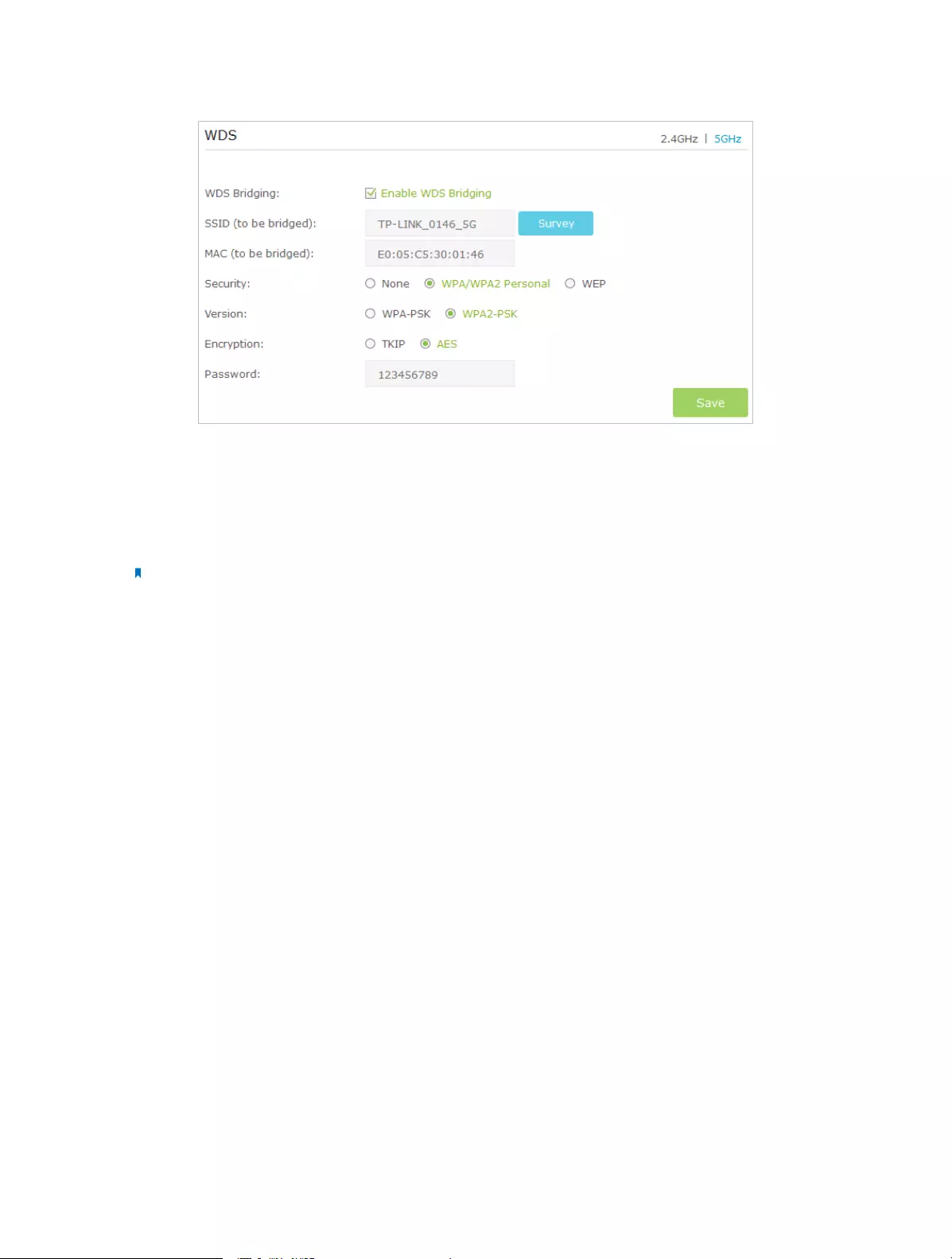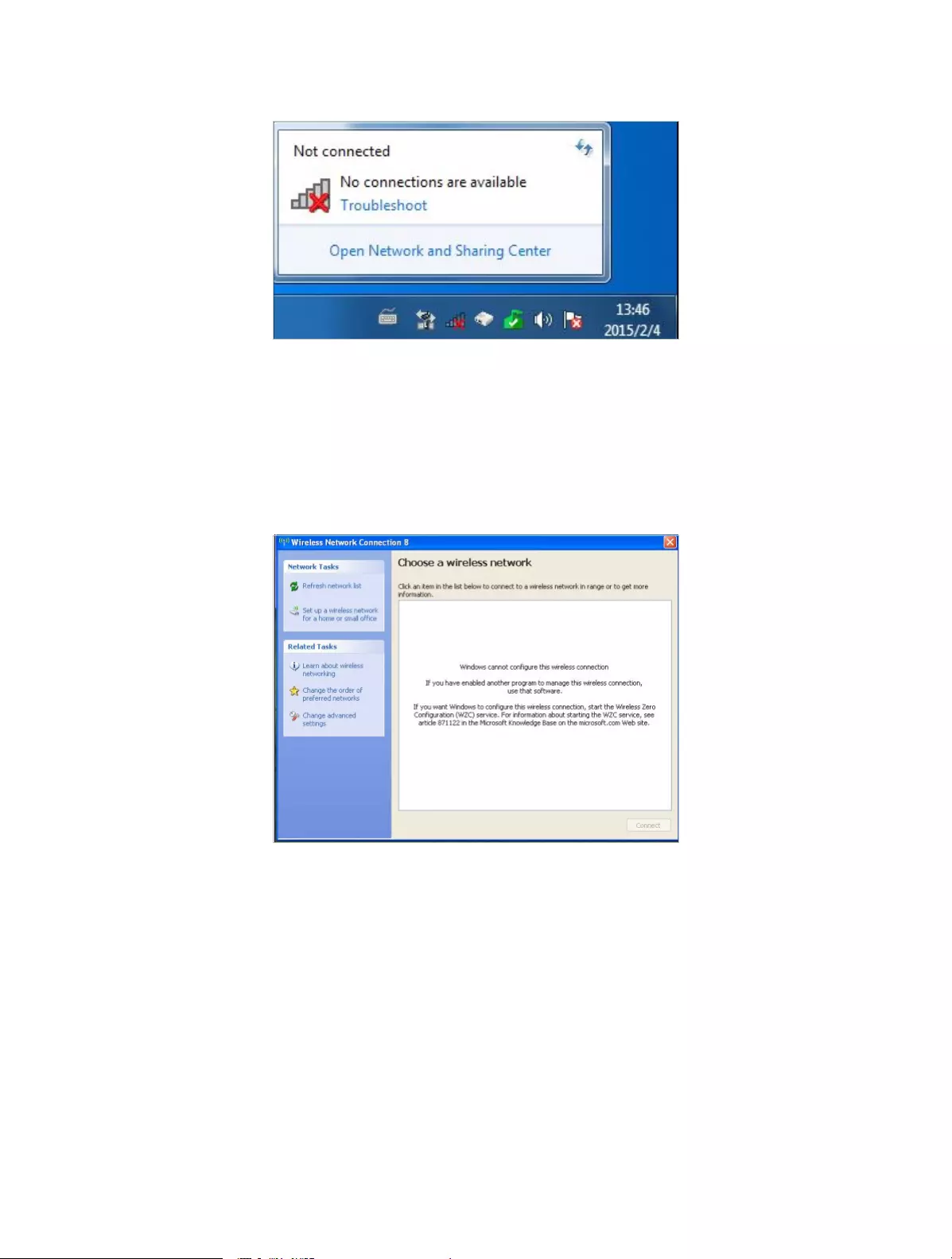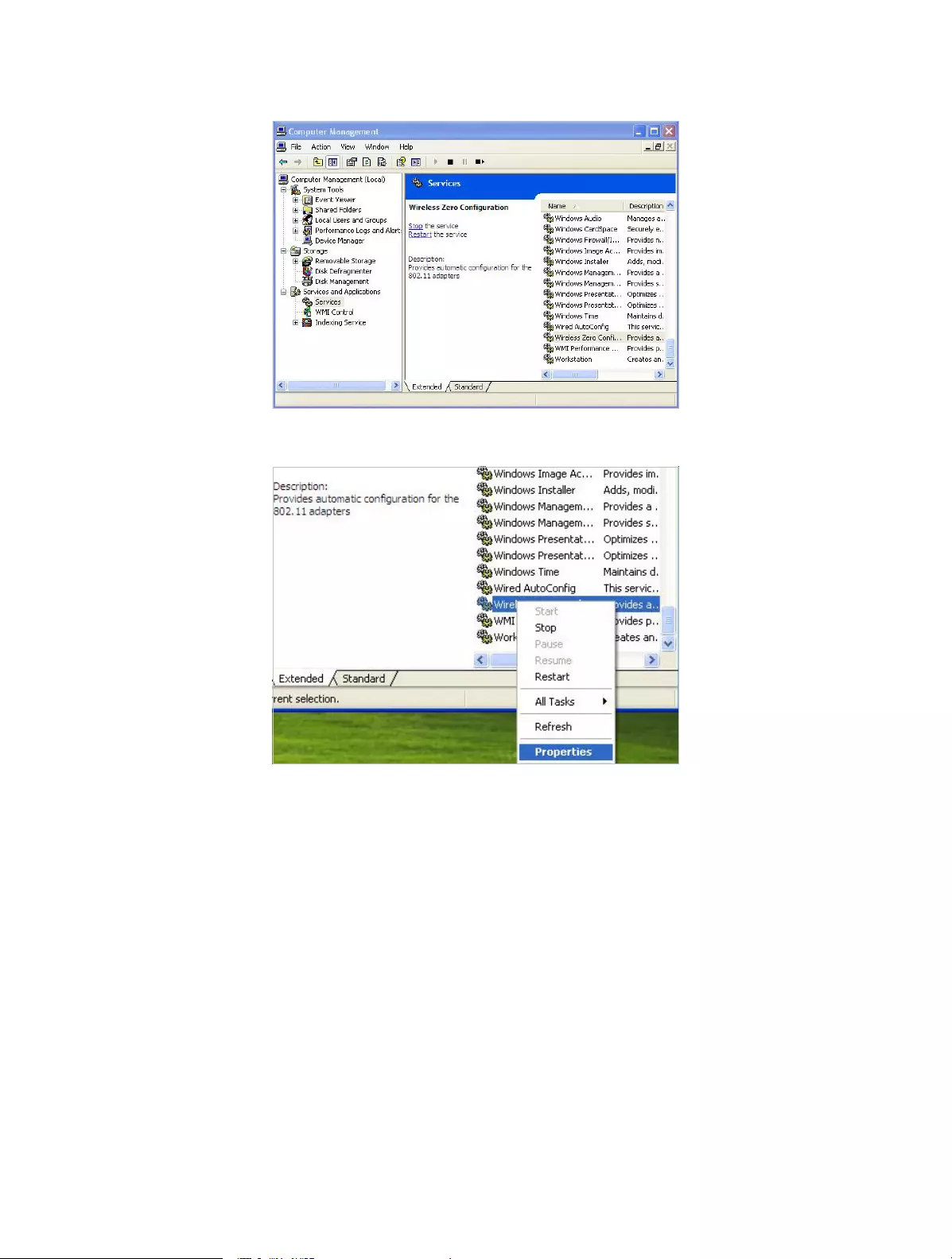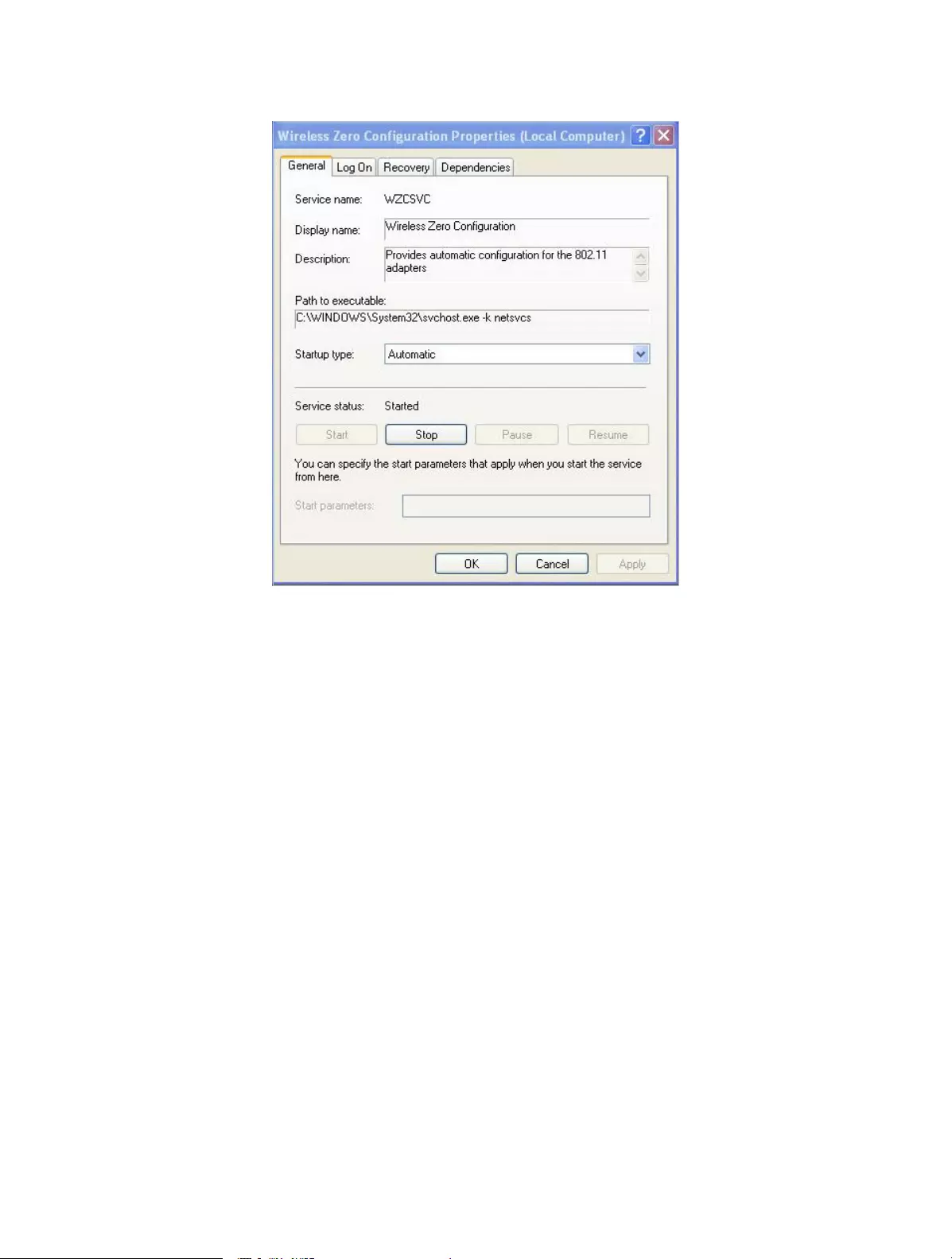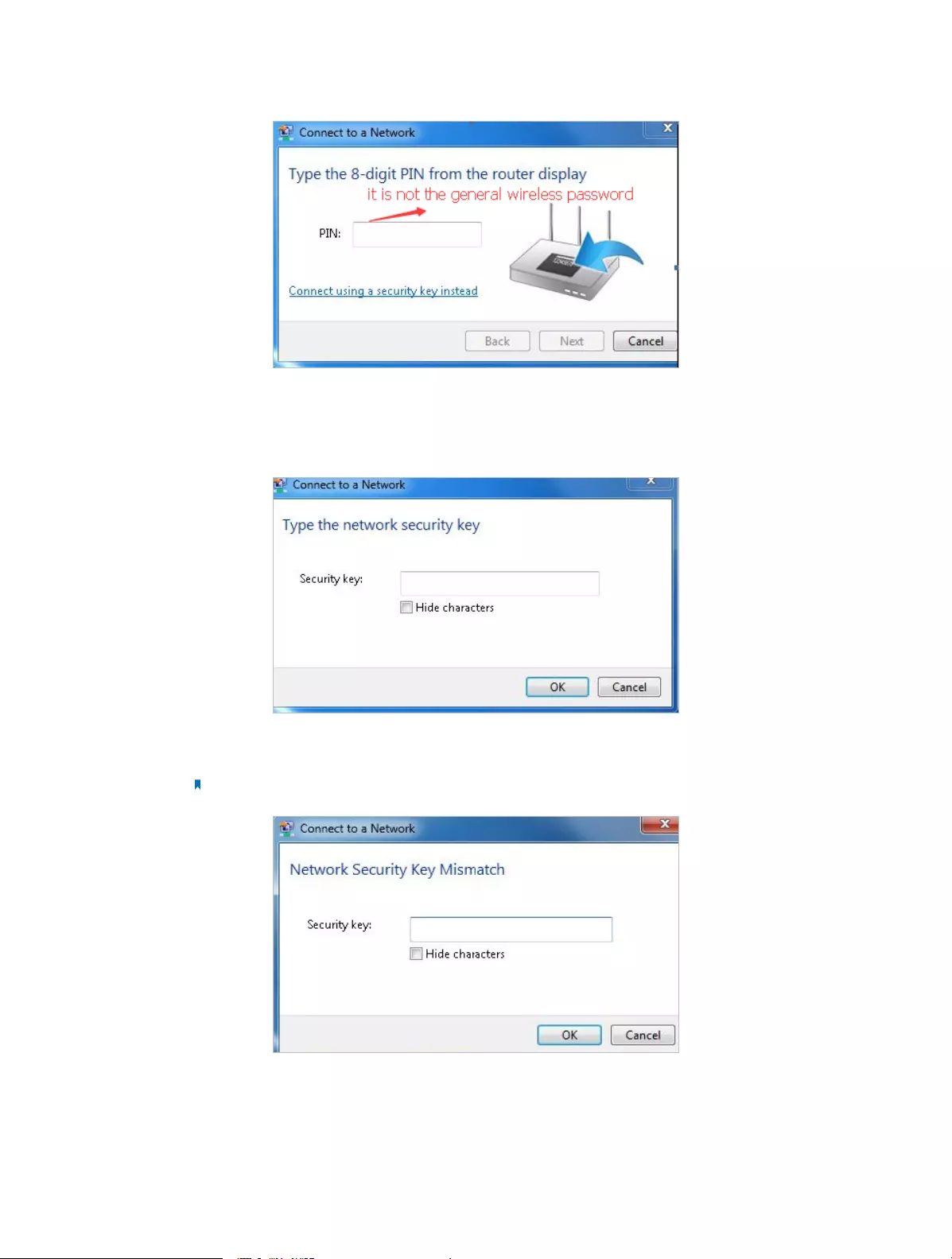REV1.1.1 1910011775
Archer MR200
User Guide
AC750 Wireless Dual Band
4G LTE Router
Contents
About This Guide . . . . . . . . . . . . . . . . . . . . . . . . . . . . . . . . . . . . . . . . . . . . . . . . . . 1
Chapter 1. Get to Know About Your 4G LTE Router . . . . . . . . . . . . . . . . . . 2
1. 1. Product Overview . . . . . . . . . . . . . . . . . . . . . . . . . . . . . . . . . . . . . . . . . . . . . . . . . . . . . . . . . . 3
1. 2. Main Features . . . . . . . . . . . . . . . . . . . . . . . . . . . . . . . . . . . . . . . . . . . . . . . . . . . . . . . . . . . . . . 4
1. 3. Product Appearance . . . . . . . . . . . . . . . . . . . . . . . . . . . . . . . . . . . . . . . . . . . . . . . . . . . . . . . 5
1. 3. 1. Top View. . . . . . . . . . . . . . . . . . . . . . . . . . . . . . . . . . . . . . . . . . . . . . . . . . . . . . . . . . . . . 5
1. 3. 2. The Back Panel . . . . . . . . . . . . . . . . . . . . . . . . . . . . . . . . . . . . . . . . . . . . . . . . . . . . . . . 6
Chapter 2. Connect the Hardware. . . . . . . . . . . . . . . . . . . . . . . . . . . . . . . . . . 8
2. 1. Requirements for Operation . . . . . . . . . . . . . . . . . . . . . . . . . . . . . . . . . . . . . . . . . . . . . . . . 9
2. 2. Position Your 4G LTE Router. . . . . . . . . . . . . . . . . . . . . . . . . . . . . . . . . . . . . . . . . . . . . . . . . 9
2. 3. Connect Your 4G LTE Router . . . . . . . . . . . . . . . . . . . . . . . . . . . . . . . . . . . . . . . . . . . . . . . . 9
Chapter 3. Log into Your 4G LTE Router. . . . . . . . . . . . . . . . . . . . . . . . . . . . 12
Chapter 4. Set Up Internet Connections . . . . . . . . . . . . . . . . . . . . . . . . . . . 14
4. 1. Use Quick Setup Wizard . . . . . . . . . . . . . . . . . . . . . . . . . . . . . . . . . . . . . . . . . . . . . . . . . . . 15
4. 2. Create a Connection Prole . . . . . . . . . . . . . . . . . . . . . . . . . . . . . . . . . . . . . . . . . . . . . . . . 15
4. 3. Test Internet Connectivity . . . . . . . . . . . . . . . . . . . . . . . . . . . . . . . . . . . . . . . . . . . . . . . . . 17
Chapter 5. Bandwidth Control . . . . . . . . . . . . . . . . . . . . . . . . . . . . . . . . . . . . 18
Chapter 6. Network Security. . . . . . . . . . . . . . . . . . . . . . . . . . . . . . . . . . . . . . 22
6. 1. MAC Filtering . . . . . . . . . . . . . . . . . . . . . . . . . . . . . . . . . . . . . . . . . . . . . . . . . . . . . . . . . . . . . 23
6. 2. Access Control . . . . . . . . . . . . . . . . . . . . . . . . . . . . . . . . . . . . . . . . . . . . . . . . . . . . . . . . . . . . 24
6. 3. IP & MAC Binding. . . . . . . . . . . . . . . . . . . . . . . . . . . . . . . . . . . . . . . . . . . . . . . . . . . . . . . . . . 26
Chapter 7. Parental Controls. . . . . . . . . . . . . . . . . . . . . . . . . . . . . . . . . . . . . . 28
Chapter 8. SMS . . . . . . . . . . . . . . . . . . . . . . . . . . . . . . . . . . . . . . . . . . . . . . . . . . 32
8. 1. View Messages . . . . . . . . . . . . . . . . . . . . . . . . . . . . . . . . . . . . . . . . . . . . . . . . . . . . . . . . . . . . 33
8. 2. Edit and Send a New Message . . . . . . . . . . . . . . . . . . . . . . . . . . . . . . . . . . . . . . . . . . . . . 33
8. 3. View Sent Messages . . . . . . . . . . . . . . . . . . . . . . . . . . . . . . . . . . . . . . . . . . . . . . . . . . . . . . . 34
8. 4. View Drafts. . . . . . . . . . . . . . . . . . . . . . . . . . . . . . . . . . . . . . . . . . . . . . . . . . . . . . . . . . . . . . . . 34
8. 5. SMS Settings . . . . . . . . . . . . . . . . . . . . . . . . . . . . . . . . . . . . . . . . . . . . . . . . . . . . . . . . . . . . . . 35
Chapter 9. Guest Network . . . . . . . . . . . . . . . . . . . . . . . . . . . . . . . . . . . . . . . . 36
9. 1. Create a Network for Guests . . . . . . . . . . . . . . . . . . . . . . . . . . . . . . . . . . . . . . . . . . . . . . . 37
9. 2. Customize Guest Network Options. . . . . . . . . . . . . . . . . . . . . . . . . . . . . . . . . . . . . . . . . 37
Chapter 10. NAT Forwarding . . . . . . . . . . . . . . . . . . . . . . . . . . . . . . . . . . . . . . . 39
10. 1. Share Local Resources in the Internet by Virtual Server. . . . . . . . . . . . . . . . . . . . . . 40
10. 2. Open Ports Dynamically by Port Triggering. . . . . . . . . . . . . . . . . . . . . . . . . . . . . . . . . 41
10. 3. Make Applications Free from Port Restriction by DMZ . . . . . . . . . . . . . . . . . . . . . . 42
10. 4. Make Xbox Online Games Run Smoothly by UPnP . . . . . . . . . . . . . . . . . . . . . . . . . . 43
Chapter 11. Specify Your Network Settings . . . . . . . . . . . . . . . . . . . . . . . . . 45
11. 1. PIN Management. . . . . . . . . . . . . . . . . . . . . . . . . . . . . . . . . . . . . . . . . . . . . . . . . . . . . . . . . . 46
11. 2. Data Settings. . . . . . . . . . . . . . . . . . . . . . . . . . . . . . . . . . . . . . . . . . . . . . . . . . . . . . . . . . . . . . 47
11. 3. LAN Settings . . . . . . . . . . . . . . . . . . . . . . . . . . . . . . . . . . . . . . . . . . . . . . . . . . . . . . . . . . . . . . 48
11. 3. 1. Change the LAN IP Address . . . . . . . . . . . . . . . . . . . . . . . . . . . . . . . . . . . . . . . . 48
11. 3. 2. Use the 4G LTE Router as a DHCP Server . . . . . . . . . . . . . . . . . . . . . . . . . . . . 48
11. 3. 3. Reserve LAN IP Addresses . . . . . . . . . . . . . . . . . . . . . . . . . . . . . . . . . . . . . . . . . . 49
11. 4. Wireless Settings . . . . . . . . . . . . . . . . . . . . . . . . . . . . . . . . . . . . . . . . . . . . . . . . . . . . . . . . . . 50
11. 4. 1. Specify Basic Wireless Settings. . . . . . . . . . . . . . . . . . . . . . . . . . . . . . . . . . . . . . 50
11. 4. 2. Use WPS for Wireless Connection . . . . . . . . . . . . . . . . . . . . . . . . . . . . . . . . . . . 52
11. 4. 3. Schedule Your Wireless Function . . . . . . . . . . . . . . . . . . . . . . . . . . . . . . . . . . . 54
11. 4. 4. View Wireless Information . . . . . . . . . . . . . . . . . . . . . . . . . . . . . . . . . . . . . . . . . . 55
11. 4. 5. Advanced Wireless Settings . . . . . . . . . . . . . . . . . . . . . . . . . . . . . . . . . . . . . . . . 56
11. 5. Set Up a Dynamic DNS Service Account . . . . . . . . . . . . . . . . . . . . . . . . . . . . . . . . . . . . 57
11. 6. Create Static Routes . . . . . . . . . . . . . . . . . . . . . . . . . . . . . . . . . . . . . . . . . . . . . . . . . . . . . . . 58
11. 7. Set up a VPN Connection . . . . . . . . . . . . . . . . . . . . . . . . . . . . . . . . . . . . . . . . . . . . . . . . . . 60
Chapter 12. Administrate Your Network . . . . . . . . . . . . . . . . . . . . . . . . . . . . 65
12. 1. Set System Time. . . . . . . . . . . . . . . . . . . . . . . . . . . . . . . . . . . . . . . . . . . . . . . . . . . . . . . . . . . 66
12. 2. Update the Firmware . . . . . . . . . . . . . . . . . . . . . . . . . . . . . . . . . . . . . . . . . . . . . . . . . . . . . . 67
12. 3. Back up and Restore Conguration Settings . . . . . . . . . . . . . . . . . . . . . . . . . . . . . . . . 67
12. 4. Change the Administrator Account . . . . . . . . . . . . . . . . . . . . . . . . . . . . . . . . . . . . . . . . 68
12. 5. Local Management. . . . . . . . . . . . . . . . . . . . . . . . . . . . . . . . . . . . . . . . . . . . . . . . . . . . . . . . 69
12. 6. Remote Management . . . . . . . . . . . . . . . . . . . . . . . . . . . . . . . . . . . . . . . . . . . . . . . . . . . . . 69
12. 7. System Log . . . . . . . . . . . . . . . . . . . . . . . . . . . . . . . . . . . . . . . . . . . . . . . . . . . . . . . . . . . . . . . 70
12. 8. Monitor the Internet Trac Statistics . . . . . . . . . . . . . . . . . . . . . . . . . . . . . . . . . . . . . . . 72
12. 9. CWMP Settings. . . . . . . . . . . . . . . . . . . . . . . . . . . . . . . . . . . . . . . . . . . . . . . . . . . . . . . . . . . . 73
12. 10. SNMP Settings . . . . . . . . . . . . . . . . . . . . . . . . . . . . . . . . . . . . . . . . . . . . . . . . . . . . . . . . . . . . 75
Appendix A: Specifications . . . . . . . . . . . . . . . . . . . . . . . . . . . . . . . . . . . . . . . . 77
Appendix B: Troubleshooting. . . . . . . . . . . . . . . . . . . . . . . . . . . . . . . . . . . . . . 79
1
About This Guide
This guide provides details of each function and shows how to configure the router
appropriate to your needs. In addition to this guide, a Quick Installation Guide is also
released with each TP-LINK router, you are suggested to configure your router for quick
Internet setup by following the published Quick Installation Guide before you get
started with a further configuration.
Conventions
In this guide the following conventions are used:
Convention Description
modem router/
router Stands for AC750 Wireless Dual Band 4G LTE Router without any explanation.
parameters
Parameters provided in the screenshots are just references for setting up the
device, which may differ from the actual situation. You can set the parameters
according to your demand.
screenshots
The demonstrated screenshots may look a little different from the actual
web page of your device due to the various firmware versions. Please just
configure your product based on the actual web page.
Blue Italic Hyperlinks are in blue italic. You can click to redirect to a website or a specific
section.
Blue Contents to be emphasized and texts on the web page are in blue, including
the menus, items, buttons, etc.
>
The menu structures to show the path to load the corresponding page. For
example, Advanced > Wireless > MAC Filtering means the MAC Filtering
function page is under the Wireless menu that is located in the Advanced tab.
Note: Ignoring this type of note might result in a malfunction or damage to the
device.
Tips: Indicates important information that helps you make better use of your
device.
symbols on the web
page
• Click to edit the corresponding entry.
• Click to delete the corresponding entry.
• Click to enable or disable the corresponding entry.
Chapter 1
Get to Know About Your 4G
LTE Router
This chapter introduces what the router can do and shows its main features and
appearance.
This chapter contains the following sections:
• Product Overview
• Main Features
• Product Appearance
3
Chapter 1 Get to Know About Your 4G LTE Router
1. 1. Product Overview
What This Product Does
The AC750 Wireless Dual Band 4G LTE Router, Archer MR200, shares the latest generation
4G LTE network with multiple Wi-Fi devices, anywhere you want. It creates simultaneous
dual band 802.11ac Wi-Fi, with speeds up to 300Mbps on 2.4GHz band and 433Mbps
on 5GHz band. Also four Ethernet ports add your wired devices to the 4G LTE network.
802.11ac — The Next Generation of Wi-Fi
TP-LINK’s Archer MR200 comes with the next generation Wi-Fi standard – 802.11ac,
backward compatible with 802.11n and 3 times faster than wireless N speeds. With
higher power efficiency and robust security, 802.11ac is the perfect way to accelerate
a home multimedia network and solve congestion that multiple devices may cause.
750Mbps Concurrent Dual Band — More Bandwidth, Less Interference
With 433Mbps wireless speeds over the crystal clear 5GHz band and 300Mbps over the
2.4GHz band, Archer MR200 offers you the flexibility of two dedicated networks and
ensures amazing wireless performance. Simple tasks such as sending e-mails or web
browsing can be handled by the 2.4GHz band while bandwidth intensive tasks like
online gaming or HD video streaming can be processed by the 5GHz band – all at the
same time.
Broad Wi-Fi Coverage and Targeted Connection
Featuring two fixed external antennas and high power amplifiers, Archer MR200 is able
to boost Wi-Fi coverage throughout your home. Advanced Beamforming technology
enables Archer MR200 to focus Wi-Fi signal to connected devices, delivering a more
targeted and highly efficient wireless connection.
Interchangeable LAN/WAN Port — Versatile Connectivity
The Archer MR200 supports 4G LTE or Ethernet WAN connections (EWAN), which allows
users to have the flexibility of different Internet connections among LTE, cable or fiber
modem using its SIM card slot and interchangeable LAN/WAN port. This unique feature
makes it easier when users need to change to fiber or cable services when necessary.
Guest Network
Guest Network Access provides secure Wi-Fi access for guests sharing your home or
office network in a controlled manner without exposing private Wi-Fi access codes or
other personal data.
IPv6 Supported
Archer MR200 supports IPv6, which is the foundation of the next generation of the
Internet and enables a range of new services and improved user experience.
4
Chapter 1 Get to Know About Your 4G LTE Router
1. 2. Main Features
• Supports 4G/3G/2G network
LTE: Cat4
FDD-LTE: 800MHz (Band20)/ 900MHz (Band8)/ 1800MHz (Band3)/ 2100MHz
(Band1)/ 2600MHz (Band7)
TDD-LTE: 2300MHz (Band40)/ 2600MHz (Band38)
DC-HSPA+/ HSPA+/HSPA/UMTS: 900/2100MHz
EDGE/GPRS/GSM: 850/900/1800/1900MHz
• 4G LTE supported with up to 150Mbps downloads and 50Mbps uploads speeds (FDD-
LTE)
• Supports 802.11ac — The next generation of Wi-Fi, compatible with 802.11n
• Simultaneous Dual Band, with maximum speed up to 300Mbps over 2.4GHz and
433Mbps over 5GHz
• Ethernet WAN (EWAN) offers another broadband connectivity option for connecting
DSL, cable or fiber modems
• Guest Network Access provides secure Wi-Fi access for guests sharing your home or
office network
• Parental Controls allows parents or administrators to establish restricted access
policies for children or staff
• IP-based Bandwidth Control makes it easier for you to manage the bandwidth of
devices connected to the router
• Easy wireless security encryption at a push of the WPS button
• IPv6 supported, meeting the demands for the next generation of Internet
• Wi-Fi On/Off Button allows users to turn their wireless radio on or off
• Easy one-touch WPA wireless security encryption with the WPS button
• WPA-PSK/WPA2-PSK encryptions provide user networks with active defense against
security threats
• Easy Setup Assistant with multi-language support provides a quick & hassle free
installation process
• Supports up to 10 IPSec VPN tunnels simultaneously, offering you the most economical
way to connect to the company’s central network securely
• Wireless Schedule lets you to turn the Wi-Fi radio on or off based on a preset timetable
• SPI and NAT firewall protects end-user devices from potential attacks across the
Internet
5
Chapter 1 Get to Know About Your 4G LTE Router
1. 3. Product Appearance
1. 3. 1. Top View
The router’s LEDs are located on the top panel (view from top to bottom). You can check
the router’s working status by following the LED Explanation table.
LED Explanation
Name Status Indication
Power
On System initialization complete.
Flashing System initializing or firmware upgrading is in process. Do not
disconnect or power off the router.
Off Power is off. Please ensure that the power adapter is
connected correctly.
Internet
On Internet connection is available.
Off No Internet connection. Please refer to Note 1 for
troubleshooting.
4G
On The router is using the 4G network.
Off The router is using another network other than the 4G
network.
Wireless
On At least one wireless radio band (2.4 GHz or 5 GHz) is enabled.
Off The wireless radio band is disabled.
LAN
On At least one LAN port is connected.
Off No LAN port is connected.
6
Chapter 1 Get to Know About Your 4G LTE Router
LED Explanation
Name Status Indication
WPS
On/ Off The LED stays on for no more than 5 minutes when a WPS
connection is established, then turns off.
Flashing WPS connection is in progress. This may take up to 2 minutes.
Signal Strength
On
Indicates the mobile Internet signal strength the router
receives in the current location. More lit bars indicates a
better signal strength.
Off No signal. Please refer to Note 2 for troubleshooting.
Note:
1. If the Internet LED is off, please check your Internet connection first. Refer to Connect Your 4G LTE Router for more
information about how to make Internet connection correctly. If you have already made a right connection,
please contact your ISP to make sure your Internet service is available now.
2. If the Signal Strength LED is off, please check your Internet LED first. If your Internet LED is also off, please refer
to Note 1. If your Internet LED is on, please relocate the router to a location that receives a strong mobile Internet
signal, such as near a window.
1. 3. 2. The Back Panel
The router’s back panel shows the connection ports, buttons and antennas (view from
left to right). Refer to the following for detailed instructions.
Item Description
POWER For connecting the router to power socket via the provided power adapter.
POWER ON/OFF The switch for the power. Press it to power on or off the router..
LAN1, LAN2, LAN3,
LAN4/WAN
For connecting to your PCs or other Ethernet network devices.
In wireless router mode, the LAN4/WAN port is used for connecting to a
Cable/FTTH/VDSL/ADSL device.
7
Chapter 1 Get to Know About Your 4G LTE Router
Item Description
WPS/RESET
The switch for the WPS and RESET function.
RESET: There are two ways to reset the router to its factory defaults.
Method one: With the router powered on, use a pin to press and hold the
RESET button until the Power LED starts flashing. And the router will reboot
to its factory default settings.
Method two: Restore the default setting from Backup & Restore of the router’s
Web-based Management page.
Wi-Fi ON/OFF For turning on/off the Wi-Fi function..
SIM Card Slot For holding the SIM card.
Antennas Used for data sessions over LTE. Upright them for the best mobile Internet
signal.
Chapter 2
Connect the Hardware
This chapter contains the following sections:
• Requirements for Operation
• Position Your 4G LTE Router
• Connect Your 4G LTE Router
9
Chapter 2 Connect the Hardware
2. 1. Requirements for Operation
To connect and use the router for Internet sharing, you must have the following:
• SIM card with Internet access enabled.
• PCs with an active Ethernet Adapter and an Ethernet cable with RJ45 connectors.
• TCP/IP protocol on each PC.
• Web browser, such as Microsoft Internet Explorer, Mozilla Firefox and Apple Safari.
2. 2. Position Your 4G LTE Router
With the router, you can access your network from anywhere within the wireless network
coverage. However, the wireless signal strength and coverage varies depending on the
actual environment where your router is in. Many obstacles may limit the range of the
wireless signal, for example, concrete structures, thickness and number of walls.
For your security and best Wi-Fi performance, please:
• Do not locate the router in the place where it will be exposed to moisture or excessive
heat.
• Keep away from strong electromagnetic radiation source and electromagnetic-
sensitive devices.
• Place the router in a location where it can be connected to the various devices as well
as to a power source.
• Place the router in a location where it can receive a strong mobile Internet signal.
• Make sure the cables and power cord are safely placed out of the way so they do not
create a tripping hazard.
Tips: The router can be placed on a shelf or desktop.
2. 3. Connect Your 4G LTE Router
Follow the steps below to connect your router.
1. Connect the power adapter. The power source shall be near the device and shall be
easily accessible.
10
Chapter 2 Connect the Hardware
1Install the 4G LTE antennas
and position them upwards.
3Turn on the router. 2Insert the SIM card into the slot
until you hear a click.
Note: Micro or Nano-SIM card must be converted
using a standard SIM card adapter provided by
TP-LINK.
2. Connect your computer to the router.
Method 1: Wired
Connect your computer’s Ethernet port to one of the LAN ports on Archer MR200 via
an Ethernet cable.
Method 2: Wirelessly
Use the default SSID (Wireless Network Name) and Wireless Password printed on the
product label of the router to connect wirelessly.
Method 3: Use the WPS button
Wireless devices that support WPS, including Android phones, tablets, most USB
network cards, can be connected to your router through this method. (WPS is not
supported by iOS devices.)
Note:
The WPS function cannot be configured if the wireless function of the router is disabled. Also, the WPS function will
be disabled if your wireless encryption is WEP. Please make sure the wireless function is enabled and is configured
with the appropriate encryption before configuring the WPS.
1 ) Tab the WPS icon on the device’s screen.
2 ) Immediately press the WPS button on your router.
3 ) The WPS LED flashes for about 2 minutes during the WPS process.
4 ) When the WPS LED is on, the client device has successfully connected to the
router.
11
Chapter 2 Connect the Hardware
Chapter 3
Log into Your 4G LTE Router
13
Chapter 3 Log into Your 4G LTE Router
With a Web-based management page, it is easy to configure and manage the Archer
MR200 AC750 Wireless Dual Band 4G LTE Router. The Web-based management page
can be used on any Windows, Macintosh or UNIX OS with a Web browser, such as
Microsoft Internet Explorer, Mozilla Firefox or Apple Safari.
Follow the steps below to log into your router.
1. If the TCP/IP Protocol on your computer is set to the static (fixed) IP address, you
need to change it to obtain an IP address automatically. Refer to Appendix B:
Troubleshooting to configure your computer.
2. Launch a web browser and type in http://tplinkmodem.net or http://192.168.1.1. Set
a strong password using 1-15 characters and click Save.
3. Enter the password you set and click Log in.
Note: For subsequent logins, use your password that you have created.
Chapter 4
Set Up Internet
Connections
This chapter introduces how to connect your router to the Internet. The router is
equipped with a web-based Quick Setup wizard. It has many ISP information built
in, automates many of the steps and verifies that those steps have been successfully
completed. Furthermore, you can set up IPv6 connection if your ISP provides IPv6
service.
This chapter includes the following sections:
• Use Quick Setup Wizard
• Create a Connection Profile
• Test Internet Connectivity
15
Chapter 4 Set Up Internet Connections
4. 1. Use Quick Setup Wizard
To set up your router with several easy steps quickly:
1. Visit http://tplinkmodem.net, and log in with the password you set for the router.
2. Click Quick Setup, confirm the parameters with the information provided by your
ISP and click Next.
Note:
Quick Setup is not available if your SIM card is locked. Unlock your SIM card according to the prompt.
3. Follow the on-screen instructions to complete the setup.
Note:
1. During the quick setup process, you can change the preset wireless network name (SSID) and wireless password.
Once done, all your wireless devices must use the new SSID and password to connect to the router.
2. The router supports two operation modes, 3G/4G Router Mode and Wireless Router mode. If you already have a
modem or your Internet comes via an Ethernet cable from the wall, you can set up the router as a regular wireless
router to share the Internet. Refer to Appendix B: Troubleshooting for details.
4. 2. Create a Connection Profile
If your ISP settings are not detected by the router, you can create an Internet connection
profile by following the steps below:
1. Visit http://tplinkmodem.net, and log in with the password you set for the router.
2. Go to Advanced > Network > Internet page.
16
Chapter 4 Set Up Internet Connections
3. Click Create Profile.
4. Specify the Profile Name, Username and Password. Select the PDP Type, APN Type
and Authentication Type according to your ISP.
5. Click OK to make the settings effective and the new profile will be used to set up a
new connection.
Tips:
1. You can view all Internet connections or edit connections that are set up manually on this page.
2. You can change the Network Mode to 4G Only or 3G Only according to your needs.
17
Chapter 4 Set Up Internet Connections
4. 3. Test Internet Connectivity
After manually set up the Internet connection, you need to know the Internet
connectivity. The router provides a diagnostic tool to help you locate the malfunction.
1. Visit http://tplinkmodem.net, and log in with the password you set for the router.
2. Go to Advanced > System Tools > Diagnostics page.
3. Click Start to test the Internet connectivity and you will see the test result in the
gray box.
Chapter 5
Bandwidth Control
The Bandwidth Control feature is used to fully utilize your limited bandwidth and
optimize the load respectively. With this feature enabled, you can assign a specific
minimum or maximum bandwidth for each computer, thus minimizing the impact
caused when the connection is under heavy load.
19
Chapter 5 Bandwidth Control
Use an independent bandwidth and enjoy a good Internet
experience without being affected by other users who are
sharing the same router.
For example, my roommate and I share 512Kbps Upstream
Bandwidth and 4Mbps Downstream Bandwidth via this router,
she likes to watch live show and play online games, which may
take up much bandwidth. I don’t want to be affected, so we
agree to equally distribute the bandwidth. The IP addresses
of her computer and my computer are 192.168.1.101 and
192.168.1.110.
To use the bandwidth control feature, you’d better set static
IP Address on each computer to be controlled or configure
Address reservation on the router in order to manage it easily.
About how to configure address reservation, please refer to
Reserve LAN IP Addresses.
1. Visit http://tplinkmodem.net, and log in with the password
you set for the router.
2. Go to Advanced > Bandwidth Control page.
3. Enable Bandwidth Control.
4. Enter the Total Upstream Bandwidth and the
Total Downstream Bandwidth given by your ISP.
(1Mbps=1024kbps). Click Save to save the settings.
5. Click Add to add controlling rules for each computer
respectively.
I want to:
Tips:
How can I
do that?
20
Chapter 5 Bandwidth Control
1 ) IP Range: Enter the IP address. The field can be single IP
address or IP address range according to your demands.
When you enter a single IP address, the computer with
this IP address will get independent given bandwidth.
When you enter an IP address range, all computers in the
range will share the given bandwidth.
2 ) Port Range: Keep the default settings. The default port
range of TCP protocol or UDP protocol is from 1 to 65535.
3 ) Protocol: Keep the default setting. Or you can choose the
TCP protocol or UDP protocol or both of them.
4 ) Priority: Keep the default setting. You can change the
value if you want to first guarantee the bandwidth for
one computer. The smaller value has the higher priority.
5 ) Upstream/Downstream: Enter the bandwidth according
to your division.
6 ) Check to enable this entry and click OK to save the
settings.
6. Follow the steps above to add a rule for the other client
device. And then you will get the following table.
21
Chapter 5 Bandwidth Control
Now you and your roommate have an independent bandwidth.
Done!
Chapter 6
Network Security
This chapter guides you on how to protect your home network from unauthorized
users by implementing these three network security functions. You can block or allow
specific client devices to access your wireless network using MAC Filtering, or using
Access Control for wired and wireless networks, or you can prevent ARP spoofing and
ARP attacks using IP & MAC Binding.
• MAC Filtering
• Access Control
• IP & MAC Binding
23
Chapter 6 Network Security
6. 1. MAC Filtering
This function exploits the uniqueness of the MAC (Medium Access Control) address,
a unique 12-digit hexadecimal address (for example, D8:5D:4C:B4:46:EA) of every
network device, to determine if the device can or cannot access your wireless network.
Prevent unauthorized users from accessing my wireless network
by utilizing the network device’s MAC address.
For example, I have a computer that is connected to my wireless
network. Now, an unknown device (an intruder) is also using my
wireless network, which affects my Internet speed. I would like
to control my wireless network with the following capabilities:
• My computer is always allowed to access the wireless network.
• The unknown device is not allowed to access the wireless
network.
• I don’t have to keep changing my wireless password as often.
1. Visit http://tplinkmodem.net, and log in with the password
you set for the router.
2. Go to Advanced > Wireless > MAC Filtering and enable
Wireless MAC Filtering.
3. Select the filtering rule to either block (recommended) or
allow the device(s) in the list.
To block specific device(s)
I want to:
How can I
do that?
24
Chapter 6 Network Security
1 ) Select Block wireless access from the devices in the list
below and click Save.
2 ) Select the device(s) to be blocked in the Devices Online
table.
3 ) Click Block above the Devices Online table. The selected
devices will be added to Devices List automatically.
To allow specific device(s)
1 ) Select Allow wireless access only from the devices in the
list below and click Save.
2 ) Click Add.
3 ) Enter the MAC Address (You can copy and paste the
MAC Address from Devices Online list if the device is
connected to your wireless network).
4 ) Enter the Description of the device.
5 ) Select the checkbox to enable this entry, and click OK.
Now MAC Filtering is implemented to protect your wireless
network.
6. 2. Access Control
Access Control is used to block or allow specific client devices to access your network
(via wired or wireless) based on a list of blocked devices (Blacklist) or a list of allowed
devices (Whitelist).
Block or allow specific client devices to access my network (via
wired or wireless).
1. Visit http://tplinkmodem.net, and log in with the password
you set for the router.
Done!
I want to:
How can I
do that?
25
Chapter 6 Network Security
2. Go to Advanced > Security > Access Control and enable
Access Control.
3. Select the access mode to either block (recommended) or
allow the device(s) in the list.
To block specific device(s)
1 ) Select Blacklist and click Save.
2 ) Select the device(s) to be blocked in the Devices Online
table.
3 ) Click Block above the Devices Online table. The selected
devices will be added to Devices in Blacklist automatically.
To allow specific device(s)
1 ) Select Whitelist and click Save.
2 ) Click Add.
26
Chapter 6 Network Security
3 ) Enter the Device Name and MAC Address (You can copy
and paste the information from Devices Online table if
the device is connected to your network).
4 ) Click OK.
Now you can block or allow specific client devices to access your
network (via wired or wireless) using the Blacklist or Whitelist.
6. 3. IP & MAC Binding
IP & MAC Binding, namely, ARP (Address Resolution Protocol) Binding, is used to bind
network device’s IP address to its MAC address. This will prevent ARP spoofing and
other ARP attacks by denying network access to a device with matching IP address in
the Binding list, but unrecognized MAC address.
Prevent ARP spoofing and ARP attacks.
1. Visit http://tplinkmodem.net, and log in with the password
you set for the router.
2. Go to Advanced > Security > IP & MAC Binding and enable IP
& MAC Binding.
3. Bind your device(s) according to your needs.
To bind the connected device(s)
1 ) Select the device(s) to be bound in the ARP List.
2 ) Click Bind to add to the Binding List.
To bind the unconnected device
Done!
I want to:
How can I
do that?
27
Chapter 6 Network Security
1 ) Click Add.
2 ) Enter the MAC address and IP address that you want to
bind.
3 ) Select the checkbox to enable the entry and click OK.
Now you don’t need to worry about ARP spoofing and ARP
attacks.
Done!
Chapter 7
Parental Controls
This function allows you to block inappropriate, explicit and malicious websites, and
control access to specified websites at specified time.
29
Chapter 7 Parental Controls
Control the times of day my children or other home network
users are allowed to access the Internet and even types of
websites they can visit.
For example, I want to allow my children’s devices (e.g. a
computer or a tablet) to access only www.tp-link.com and
Wikipedia.org, from 18:00 (6PM) to 22:00 (10PM) on weekdays
and not other times.
1. Visit http://tplinkmodem.net, and log in with the password
you set for the router.
2. Go to Basic or Advanced > Parental Controls and enable
Parental Controls.
3. Click Add.
I want to:
How can I
do that?
30
Chapter 7 Parental Controls
4. Click View Existing Devices, and select the device to be
controlled. Or, enter the Device Name and MAC Address
manually.
5. Click the icon to set the Internet Access Time. Drag the
cursor over the appropriate cell(s) and click OK.
6. Enter a Description for the entry.
7. Select the checkbox to enable this entry and click OK.
8. Select the restriction tpye.
1 ) With Blacklist selected, the controlled devices cannot
access any websites containing the specified keywords
during the Internet Access Time period.
2 ) With Whitelist selected, the controlled devices can only
access websites containing the specified keywords
during the Internet Access Time period.
31
Chapter 7 Parental Controls
9. Click Add a New Keyword. You can add up to 200 keywords
for both Blacklist and Whitelist. Below are some sample
entries to allow access.
1 ) Enter a web address (e.g. www.tp-link.com) or a web
address keyword (e.g. wikipedia) to only allow or block
access to the websites containing that keyword.
2 ) Specify the domain suffix (eg. .edu or .org) to allow access
only to the websites with that suffix.
3 ) If you wish to block all Internet browsing access, do not
add any keyword to the Whitelist.
10. Enter the keywords or websites you want to add and click
Save.
Now you can control your children’s Internet access according
to your needs.
Done!
Chapter 8
SMS
This chapter introduces how to use the SMS functions to view and write messages,
keep drafts and specify the message center number. You can easily monitor your data
usage by sending a message to your carrier.
This chapter includes the following sections:
• View Messages
• Edit and Send a New Message
• View Sent Messages
• View Drafts
• SMS Settings
33
Chapter 8 SMS
8. 1. View Messages
1. Visit http://tplinkmodem.net, and log in with the password you set for the router.
1. Go to Advanced > SMS > Inbox page.
2. Click the or icon to unfold and read the content of the message.
Tips:
indicates the message is read, while indicates the message is unread.
8. 2. Edit and Send a New Message
1. Visit http://tplinkmodem.net, and log in with the password you set for the router.
1. Go to Advanced > SMS > New Message page.
2. Enter the receiver’s phone number in the Phone Number field.
3. Enter your message in the Message field.
34
Chapter 8 SMS
Tips:
You can enter up to 160 letters or numbers, and any exceeding characters will be sent in the next message. You can
send up to 5 messages each time.
4. Click Send to send the message or click Save to save the message to the Drafts.
8. 3. View Sent Messages
1. Visit http://tplinkmodem.net, and log in with the password you set for the router.
2. Go to Advanced > SMS > Outbox page. All the messages you sent are listed in the
Outbox table.
Tips:
You can click to edit and forward the message.
8. 4. View Drafts
1. Visit http://tplinkmodem.net, and log in with the password you set for the router.
2. Go to Advanced > SMS > Drafts page. All the unsent messages are listed in the
Drafts table.
Tips:
You can click to edit and forward the message.
35
Chapter 8 SMS
8. 5. SMS Settings
SMS Settings allows you to configure the Message Center. When the Message Center is
enabled, you can change the Message Center Number via which messages will be sent.
It is not recommended to change it for a wrong message center number will affect the
SMS function of the router.
1. Visit http://tplinkmodem.net, and log in with the password you set for the router.
2. Go to Advanced > SMS > SMS Settings page and enable Message Center.
3. The Message Center Number is auto-populated. Change it according to your needs.
Chapter 9
Guest Network
This function allows you to provide Wi-Fi access for guests without disclosing your
main network. When you have guests in your house, apartment, or workplace, you can
create a guest network for them. In addition, you can customize guest network options
to ensure network security, privacy, and fluency.
This chapter contains the following sections:
• Create a Network for Guests
• Customize Guest Network Options
37
Chapter 9 Guest Network
9. 1. Create a Network for Guests
1. Visit http://tplinkmodem.net, and log in with the password you set for the router.
2. Go to Advanced > Guest Network. Locate the Wireless Settings section.
3. Create a 2.4GHz or 5GHz guest network according to your needs.
1 ) Enable 2.4GHz, 5GHz or both wireless networks.
Note:
Guest network and WDS cannot be enabled at the same time. If WDS was enabled, disable it at Advanced >
Wireless > Advanced Settings.
2 ) Customize the SSID. Don‘t select Hide SSID unless you want your guests to
manually input the SSID for guest network access.
3 ) Set Security to WPA/WPA2 Personal, keep the default Version and Encryption
values, and customize your own password.
4. Click Save. Now your guests can access your guest network using the SSID and
password you set!
Tips:
To view guest network information, go to Advanced > Status and locate the Guest Network section.
9. 2. Customize Guest Network Options
1. Visit http://tplinkmodem.net, and log in with the password you set for the router.
2. Go to Advanced > Guest Network. Locate the Settings section.
3. Customize guest network options according to your needs.
38
Chapter 9 Guest Network
• Allow guests to see each other
Select this checkbox if you want to allow the wireless clients on your guest network
to communicate with each other via methods such as network neighbors, Samba,
Ping, and FTP.
• Allow guests to access my local network
Select this checkbox if you want to allow the wireless clients on your guest network
to communicate with the devices connected to your router’s LAN ports or main
network via methods such as network neighbors, Samba, Ping, and FTP.
• Enable guest network bandwidth control
Select this checkbox if you want to assign the upstream and downstream
bandwidths for the guest network. This option is available only when Bandwidth
Control is enabled on the Advanced > Bandwidth Control page.
4. Click Save. Now you can ensure network security, privacy, and fluency!
Tips:
To view guest network information, go to Advanced > Status and find the Guest Network section.
Chapter 10
NAT Forwarding
Router’s NAT (Network Address Translation) feature makes the devices in the LAN
use the same public IP address to communicate in the Internet, which protects the
local network by hiding IP addresses of the devices. However, it also brings about the
problem that external host cannot initiatively communicate with the specified device
in the local network.
With forwarding feature the router can penetrate the isolation of NAT and allows the
external hosts in the Internet to initiatively communicate with the devices in the local
network, thus to realize some special functions.
TP-LINK router includes four forwarding rules. If two or more rules are set, the priority
of implementation from high to low is Virtual Servers, Port Triggering, UPnP and DMZ.
This chapter contains the following sections:
• Share Local Resources in the Internet by Virtual Server
• Open Ports Dynamically by Port Triggering
• Make Applications Free from Port Restriction by DMZ
• Make Xbox Online Games Run Smoothly by UPnP
40
Chapter 10 NAT Forwarding
10. 1. Share Local Resources in the Internet by Virtual
Server
When you build up a server in the local network and want to share it on the Internet,
Virtual Server can realize the service and provide it to the Internet users. At the same
time virtual server can keep the local network safe as other services are still invisible
from the Internet.
Virtual server can be used for setting up public services in your local network, such as
HTTP, FTP, DNS, POP3/SMTP and Telnet. Different service uses different service port.
Port 80 is used in HTTP service, port 21 in FTP service, port 25 in SMTP service and port
110 in POP3 service. Please verify the service port number before the configuration.
Share my personal website I’ve built in local network with my
friends through the Internet.
For example, the personal website has been built in my home
PC (192.168.1.100). I hope that my friends in the Internet can
visit my website in some way. The PC is connected to the router
with the WAN IP address 218.18.232.154.
4G LTE Router
WAN: 218.18.232.154
LAN
Home
Personal Website
1. Assign a static IP address to your PC, for example
192.168.1.100.
2. Visit http://tplinkmodem.net, and log in with the password
you set for the router.
3. Go to Advanced > NAT Forwarding > Virtual Servers, click
Add.
I want to:
How can I
do that?
41
Chapter 10 NAT Forwarding
4. Click View Existing Services, and choose HTTP. The external
port, internal port and protocol will be auto-populated. Enter
the PC’s IP address 192.168.1.100 in the Internal IP field.
5. Click OK to save the settings.
Tips:
1. It is recommended to keep the default settings of Internal Port and Protocol if you
are not clear about which port and protocol to use.
2. If the service you want to use is not in the Service Type, you can enter the
corresponding parameters manually. You should verify the port number that the
service needs.
3. You can add multiple virtual server rules if you want to provide several services in
a router. Please note that the External Port cannot be overlapped.
Users in the Internet can enter http:// WAN IP (in this example:
http:// 218.18.232.154) to visit your personal website.
Tips:
1. WAN IP should be a public IP address. For the WAN IP is assigned dynamically by
ISP, it is recommended to apply and register a domain name for the WAN by DDNS,
go to Set Up a Dynamic DNS Service Account for more information. Then you can
use http://domain name to visit the website.
2. If you have changed the default External Port, you should use http://WAN IP:
External Port or http://domain name: External Port to visit the website.
10. 2. Open Ports Dynamically by Port Triggering
Port triggering can specify a triggering port and its corresponding external ports.
When a host in the local network initiates a connection to the triggering port, all the
external ports will be opened for subsequent connections. The router can record the IP
address of the host. When the data from the Internet return to the external ports, the
Done!
42
Chapter 10 NAT Forwarding
router can forward them to the corresponding host. Port triggering is mainly applied
to online games, VoIPs and video players. Common applications include MSN Gaming
Zone, Dialpad and Quick Time 4 players, etc.
Follow the steps below to configure the port triggering rules:
1. Visit http://tplinkmodem.net, and log in with the password you set for the router.
2. Go to Advanced > NAT Forwarding > Port Triggering and click Add.
3. Click View Existing Applications, and select the desired application. The triggering
port and protocol, the external port and protocol will be auto-populated. Here we
take application MSN Gaming Zone as an example.
4. Click OK to save the settings.
Tips:
1. You can add multiple port triggering rules according to your network need.
2. If the application you need is not listed in the Existing Applications list, please enter the parameters manually.
You should verify the external ports the application uses first and enter them into External Port field according
to the format the page displays.
10. 3. Make Applications Free from Port Restriction by
DMZ
When a PC is set to be a DMZ (Demilitarized Zone) host in the local network, it is totally
exposed to the Internet, which can realize the unlimited bidirectional communication
between internal hosts and external hosts. The DMZ host becomes a virtual server with
43
Chapter 10 NAT Forwarding
all ports opened. When you are not clear about which ports to open in some special
applications, like IP camera and database software, you can set the PC to be a DMZ
host.
Note:
DMZ is more applicable in the situation that users are not clear about which ports to open. When it is enabled, the
DMZ host is totally exposed to the Internet, which may bring some potential safety hazard. If DMZ is not in use,
please disable it in time.
Make the home PC join the Internet online game without port
restriction.
For example, due to some port restriction, when playing the
online games, you can log in normally but cannot join a team
with other players. To solve this problem, set your PC as a DMZ
with all ports opened.
1. Assign a static IP address to your PC, for example
192.168.1.100.
2. Visit http://tplinkmodem.net, and log in with the password
you set for the router.
3. Go to Advanced > NAT Forwarding > DMZ and select the
checkbox to enable DMZ.
4. Enter the IP address 192.168.1.100 in the DMZ Host IP
Address filed.
5. Click Save to save the settings.
The configuration is completed. You’ve set your PC to a DMZ
host and now you can make a team to game with other players.
10. 4. Make Xbox Online Games Run Smoothly by UPnP
UPnP (Universal Plug and Play) protocol allows the applications or host devices
to automatically find the front-end NAT device and send request to it to open the
corresponding ports. With UPnP enabled, the applications or host devices in the
both sides of NAT device can freely communicate with each other, realizing the
seamless connection of the network. You may need to enable the UPnP if you want
I want to:
How can I
do that?
Done!
44
Chapter 10 NAT Forwarding
to use applications for multiplayer gaming, peer-to-peer connections, real-time
communication (such as VoIP or telephone conference) or remote assistance, etc.
Tips:
1. UPnP is enabled by default in this router.
2. Only the application supporting UPnP protocol can use this feature.
3. UPnP feature needs the support of operating system (e.g. Windows Vista/ Windows 7/ Windows 8, etc. Some of
operating system need to install the UPnP components).
For example, when you connect your Xbox to the router which has connected to
the Internet to play online games, UPnP will send requests to the router to open the
corresponding ports, allowing the following data penetrating the NAT to transmit.
Therefore, you can play Xbox online games without a hitch.
LAN WAN
If necessary, you can follow the steps to change the status of UPnP.
1. Visit http://tplinkmodem.net, and log in with the password you set for the router;
2. Go to Advanced > NAT Forwarding > UPnP and toggle on or off according to your
needs.
Chapter 11
Specify Your Network
Settings
This chapter introduces how to change the default settings or adjust the basic
configuration of the router using the web-based management page.
This chapter contains the following sections:
• PIN Management
• Data Settings
• LAN Settings
• Wireless Settings
• Set Up a Dynamic DNS Service Account
• Create Static Routes
• Set up a VPN Connection
46
Chapter 11 Specify Your Network Settings
11. 1. PIN Management
PIN (Personal Identification Number) is used to protect the SIM card from embezzlement.
PIN Management allows you to easily change the PIN settings of your SIM card
appropriate to your needs.
Follow the steps below to change your PIN settings.
1. Visit http://tplinkmodem.net, and log in with the password you set for the router.
2. Go to Advanced > Network > PIN Management page.
• SIM Card Status: Displays the status of your SIM card.
• PIN Lock: Toggle On to enable PIN Lock. Once it is enabled, every time you start the
router with this SIM card inserted, you need to enter the PIN.
• Auto-unlock PIN: When the PIN is required upon router restarting or inserting a SIM
card, it will be validated automatically, saving you the trouble to enter the PIN each
time you start the router or insert a SIM card. If validation failed, you need to enter the
PIN on this page.
• PIN: Enter the PIN to unlock the SIM card. It consists of 4-8 digits.
• PUK: PIN Unlocked Key, also known as Personal Unlock Code (PUC), is used to reset
a PIN that has been lost or forgotten. The PUK is a SIM-specific code assigned by the
service provider. You need to enter the PUK after 3 incorrect login attempts of PIN.
Contact your service provider if you do not know the PUK. It consists of 8 digits.
• New PIN: Enter 4-8 digits to reset the PIN of your SIM card.
• Remaining Attempts: Shows how many attempts are left for you to try entering the
PIN or PUK. You have only 3 attempts for entering the PIN and 10 attempts for entering
the PUK. If you accidentally fail in 3 attempts, the SIM card will be locked and you will
be required to enter the PUK that is written on your SIM card.
3. Click Save to save the settings.
47
Chapter 11 Specify Your Network Settings
11. 2. Data Settings
Data Settings is used to monitor the data usage of your router in real-time. You can limit
your data usage according to your monthly allowance or total allowance and you will
receive a warning if your data usage reaches the specified level.
Follow the steps below to monitor your data usage.
1. Visit http://tplinkmodem.net, and log in with the password you set for the router.
2. Go to Advanced > Network > Data Settings page.
3. Enable Data Limit to set total/monthly data allowance and usage alert to prevent
data overuse.
4. Enter the allowed amount of total/monthly data in the Total/Monthly Allowance
field. When data usage exceeds the allowed level, the router will disconnect from
the Internet and notify you on the Basic > Network Map Page.
5. Enter a percentage in the Usage Alert field to prevent data overuse. When data
usage reaches the alert level, a warning will be shown on the Basic > Network Map
Page.
6. Enable Data Statistics to reset data statistics when the next billing cycle starts.
7. Enter the start date of the billing cycle in the Start Date field.
8. Click Save to save the settings.
48
Chapter 11 Specify Your Network Settings
11. 3. LAN Settings
11. 3. 1. Change the LAN IP Address
The router is preset with a default LAN IP 192.168.1.1, which you can use to log in to its
web-based management page. The LAN IP address together with the Subnet Mask also
defines the subnet that the connected devices are on. If the IP address conflicts with
another device on your local network or your network requires a specific IP subnet, you
can change it.
Follow the steps below to change your IP address.
1. Visit http://tplinkmodem.net, and log in with the password you set for the router.
2. Go to Advanced > Network > LAN Settings page.
3. Type in a new IP Address appropriate to your needs.
4. Select the Subnet Mask from the drop-down list. The subnet mask together with
the IP address identifies the local IP subnet.
5. You can configure the router’s Second IP and Subnet Mask for LAN interface through
which you can also access the web management page.
6. Leave the rest of the default settings as they are.
7. Click Save to make the settings effective.
11. 3. 2. Use the 4G LTE Router as a DHCP Server
You can configure the router to act as a DHCP server to assign IP addresses to its clients.
To use the DHCP server function of the router, you must configure all computers on the
LAN to obtain an IP Address automatically.
Follow the steps below to configure DHCP server.
1. Visit http://tplinkmodem.net, and log in with the password you set for the router.
2. Go to Advanced > Network > LAN Settings page.
49
Chapter 11 Specify Your Network Settings
3. Select DHCP to enable the DHCP function and select DHCP Server.
4. Specify the IP Address Pool, the start address and end address must be on the same
subnet with LAN IP. The router will assign addresses within this specified range to
its clients. It is from 192.168.1.100 to 192.168.1.199 by default.
5. Enter a value for the Address Lease Time. The Address Lease Time is the amount
of time in which a DHCP client can lease its current dynamic IP address assigned
by the router. After the dynamic IP address expires, the user will be automatically
assigned a new dynamic IP address. The default is 1440 minutes.
6. Keep the rest of the settings as default and click Save to make the settings effective.
Note:
1. 1. The router can be configured to work as a DHCP Relay. A DHCP relay is a computer that forwards DHCP data
between computers that request IP addresses and the DHCP server that assigns the addresses. Each of the
device’s interfaces can be configured as a DHCP relay. If it is enabled, the DHCP requests from local PCs will be
forwarded to the DHCP server that runs on WAN side.
2. 2. You can also appoint IP addresses within a specified range to devices of the same type by using Condition
Pool feature. For example, you can assign IP addresses within the range (192.168.1.50 to192.168.1.80) to Camera
devices, thus facilitating the network management. Enable DHCP feature and configure the parameters according
to your actual situation on Advanced > Network > LAN Settings page.
11. 3. 3. Reserve LAN IP Addresses
You can view and add a reserved address for a client. When you specify an IP address
for a device on the LAN, that device will always receive the same IP address each time
when it accesses the DHCP server. If there are some devices in the LAN that require
permanent IP addresses, please configure Address Reservation on the router for the
purpose.
Follow the steps below to reserve an IP address for your device.
1. Visit http://tplinkmodem.net, and log in with the password you set for the router.
2. Go to Advanced > Network > LAN Settings page.
50
Chapter 11 Specify Your Network Settings
3. Scroll down to locate the Address Reservation table and click Add to add an address
reservation entry for your device.
4. Enter the MAC address of the device for which you want to reserve IP address.
5. Specify the IP address which will be reserved by the router.
6. Check to Enable this entry and click OK to make the settings effective.
11. 4. Wireless Settings
11. 4. 1. Specify Basic Wireless Settings
The router’s wireless network name (SSID) and password, and security option are preset
in the factory. The preset SSID and password can be found on the product label. You
can customize the wireless settings according to your needs.
Visit http://tplinkmodem.net, and log in with the password you set for the router. Go to
Basic > Wireless page.
51
Chapter 11 Specify Your Network Settings
¾To enable or disable the wireless function:
Enable the Wireless Network 2.4GHz or 5GHz. If you don’t want to use the wireless
function, just uncheck the box. If you disable the wireless function, all the wireless
settings won’t be effective.
¾To change the wireless network name (SSID) and wireless password:
Enter a new SSID using up to 32 characters. The default SSID is TP-LINK_XXXX and the
value is case-sensitive.
Note:
If you use a wireless device to change the wireless settings, you will be disconnected when the settings are effective.
Please write down the new SSID and password for future use.
¾To hide SSID:
Select Hide SSID, and your SSID will not broadcast. Your SSID won’t display when you
scan for local wireless network list on your wireless device and you need to manually
join the network.
¾To change the mode or channel:
Go to Advanced > Wireless >Wireless Settings page and select the wireless network
2.4GHz or 5GHz.
Mode: Select the desired mode.
• 802.11n only: Select only if all of your wireless clients are 802.11n devices.
• 802.11gn mixed: Select if you are using both 802.11g and 802.11n wireless clients.
• 802.11bgn mixed: Select if you are using a mix of 802.11b, 11g, and 11n wireless
clients.
Note:
When 802.11n only mode is selected, only 802.11n wireless stations can connect to the router. It is strongly
recommended that you select 802.11bgn mixed, and all of 802.11b, 802.11g, and 802.11n wireless clients can
connect to the router.
52
Chapter 11 Specify Your Network Settings
• 802.11ac/n mixed (5Ghz): Select if you are using both 802.11ac and 802.11n wireless
clients.
• 802.11a/n/ac mixed (5Ghz): Select if you are using a mix of 802.11a, 802.11n and
802.11ac wireless clients. It is strongly recommended that you select 11a/n/ac mixed.
Channel: Select the channel you want to use from the drop-down list. This field
determines which operating frequency will be used. It is not necessary to change the
wireless channel unless you notice interference problems with another nearby access
point.
Channel Width: Select the channel width from the drop-down list. The default setting is
Automatic, which can adjust the channel width for your clients automatically.
¾To change the security option:
1. Go to Advanced > Wireless >Wireless Settings page.
2. Select the wireless network 2.4GHz or 5GHz.
3. Select an option from the Security drop-down list. The router provides four options,
None, WPA/WPA2 Personal (Recommended), WPA/WPA2 Enterprise, WEP. WPA2
uses the newest standard and the security level is the highest. We recommend you
don’t change the default settings unless necessary.
11. 4. 2. Use WPS for Wireless Connection
You can use WPS feature to add a new wireless device to your existing network quickly.
Method 1 Use the Wi-Fi Protected Setup Button
Use this method if your client device has a Wi-Fi Protected Setup button.
1. Press the WPS/RESET button on the back panel of the router for 1 second.
2. Press the WPS button of the client device directly.
3. The WPS LED flashes for about two minutes during the WPS process.
4. When the WPS LED is on, the client device has successfully connected to the router.
Method 2 Enter the client device’s PIN on the router
1. Visit http://tplinkmodem.net, and log in with the password you set for the router.
53
Chapter 11 Specify Your Network Settings
2. Go to Advanced > Wireless >WPS page. Select the wireless network 2.4GHz or 5GHz
according to your wireless client.
3. Keep the default WPS status as Enabled and select the PIN Code radio button.
4. Enter the client device’s PIN in the field on the above WPS screen. Then click the
Connect button.
5. Connect successfully will appear on the above screen, which means the client
device has successfully connected to the router.
Method 3 Enter the router’s PIN on your client device
Use this method if your client device asks for the router’s PIN.
1. Visit http://tplinkmodem.net, and log in with the password you set for the router.
2. Go to Advanced > Wireless > WPS page. Select the wireless network 2.4GHz or
5GHz according to your wireless client.
3. Keep the Router’s PIN status as enabled. Take a note of the Current PIN of the router.
You can also click the Generate button to get a new PIN.
4. On the client device, enter the router’s PIN. (The default PIN is also labeled on the
bottom of the router.)
5. The WPS LED flashes for about two minutes during the WPS process.
6. When the WPS LED is on, the client device has successfully connected to the router.
Note:
54
Chapter 11 Specify Your Network Settings
1. The WPS LED on the router will light on for no more than five minutes if the device has been successfully added
to the network.
2. The WPS function cannot be configured if the wireless function of the router is disabled. Please make sure the
wireless function is enabled before configuring the WPS.
11. 4. 3. Schedule Your Wireless Function
You can automatically turn off your wireless network (both 2.4GHz and 5GHz) at time
when you do not need the wireless connection.
1. Visit http://tplinkmodem.net, and log in with the password you set for the router.
2. Go to Advanced > Wireless > Wireless Schedule page.
3. Select the 2.4GHz wireless network to configure. Toggle on the button to enable
the Wireless Schedule feature.
55
Chapter 11 Specify Your Network Settings
4. Set the time. Drag the mouse to cover the time area and click Save to make the
settings effective. The selected time will be in green
5. Repeat steps 3 and 4 to set time for 5GHz wireless network.
Note:
1. Please make sure that the time of the router is correct before using this function. For more details, refer to Set
System Time.
2. If you just set time for one wireless band, the other wireless band is still always on, so set time for both of the two
bands to schedule your whole wireless network.
3. The wireless LED will turn off if both wireless networks are disabled.
4. The wireless network will be automatically turned on after the time period you set.
11. 4. 4. View Wireless Information
¾To view the detailed wireless network settings:
1. Visit http://tplinkmodem.net, and log in with the password you set for the router.
2. Go to Advanced > Status page. You can see the Wireless box.
3. Select 2.4GHz or 5GHz to view the wireless details.
Tips: You can also see the wrieless details by clicking the router icon on Basic > Network Map.
¾To view the detailed information of the connected wireless clients:
1. Visit http://tplinkmodem.net, and log in with the password you set for the router.
2. Go to Advanced > Wireless > Statistics page.
3. You can view the detailed information of the wireless clients, including its connected
wireless band and security option as well as the packets transmitted.
Tips: You can also see the wrieless details by clicking the wireless clients icon on Basic> Network Map.
56
Chapter 11 Specify Your Network Settings
11. 4. 5. Advanced Wireless Settings
Advanced wireless settings are for those have a network concept. If you are not familiar
with the settings on this page, it’s strongly recommended that you keep the provided
default values; otherwise it may result in lower wireless network performance.
1. Visit http://tplinkmodem.net, and log in with the password you set for the router.
2. Go to Advanced > Wireless > Advanced Settings page.
• Beacon Interval: Enter a value between 25 and 1000 in milliseconds to determine the
duration between which beacon packets are broadcasted by the router to synchronize
the wireless network. The default is 100 milliseconds.
• RTS Threshold: Enter a value between 1 and 2346 to determine the packet size of
data transmission through the router. By default, the RTS (Request to Send) Threshold
size is 2346. If the packet size is greater than the preset threshold, the router sends
Request to Send frames to a particular receiving station and negotiates the sending
of a data frame, or else the packet will be sent immediately.
• DTIM Interval: Enter a value between 1 and 255 to determine the interval of the
Delivery Traffic Indication Message (DTIM). 1 indicates the DTIM Interval is the same
as Beacon Interval.
• Group Key Update Period: Enter the number of seconds (minimum 30) to control the
time interval for the encryption key automatic renewal. The default is 0, indicating no
key renewal.
• Enable WMM: This feature guarantees the packets with high-priority messages being
transmitted preferentially. WMM is enabled compulsively under 802.11n or 802.11ac
mode. It is strongly recommended to enable WMM.
• Enable Short GI: This feature is enabled by default and recommended to increase the
data capacity by reducing the Guard Interval (GI) time.
57
Chapter 11 Specify Your Network Settings
• AP Isolation: Select this checkbox to enable the AP Isolation feature that allows you to
confine and restrict all wireless devices on your network from interacting with each
other, but still able to access the Internet. AP isolation is disabled by default.
• WDS: Select this checkbox to enable the WDS (Wireless Distribution System) Bridging
feature to allow the router to bridge with another access point (AP) in a wireless local
area network (WLAN). Refer to Appendix B: Troubleshooting for detailed instructions.
11. 5. Set Up a Dynamic DNS Service Account
Most ISPs (Internet service providers) assign a dynamic IP address to the router and
you can use this IP address to access your router remotely. However, the IP address can
change any time and you don’t know when it changes. In this case, you might need
the DDNS (Dynamic Domain Name Server) feature on the router to allow you and your
friends to access your router and local servers (FTP, HTTP, etc.) using domain name, in
no need of checking and remembering the IP address.
Note: DDNS does not work if the ISP assigns a private WAN IP address (such as 192.168.1.x) to the router.
To set up DDNS, please follow the instructions below:
1. Visit http://tplinkmodem.net, and log in with the password you set for the router.
2. Go to Advanced > Network> Dynamic DNS.
3. Select the DDNS service provider (Dyndns or NO-IP). If you don’t have a DDNS
account, select a service provider and click Go to register.
4. Enter the username, password and domain name of the account (such as lisa.ddns.
net).
5. Click Login and Save.
Tips: If you want to use a new DDNS account, please log out first, then log in with the new account.
58
Chapter 11 Specify Your Network Settings
11. 6. Create Static Routes
A static route is a pre-determined path that network information must travel to reach
a specific host or network. Data from one point to another will always follow the same
path regardless of other considerations. Normal Internet usage does not require this
setting to be configured.
Visit multiple networks and multiple servers at the same time.
For example, in a small office, my PC can surf the Internet, but I
also want to visit my company’s server. Now I have a switch and
another router. I connect the devices as shown in the following
figure so that the physical connection between my PC and my
company’s server is achieved. To surf the Internet and visit my
company’s network at the same time, I need to configure the
static routing.
Company’s server
My PC
Router 2
4G LTE router
Switch
LAN: 192.168.1.1
192.168.1.100
LAN: 192.168.1.2
WAN: 172.30.30.100
172.30.30.1
1. Make sure the routers use different LAN IP addresses on the
same subnet. Disable Router 2’s DHCP function.
2. Visit http://tplinkmodem.net, and log in with the password
you set for the router.
3. Go to Advanced > Network > Advanced Routing. Select your
current WAN Interface and click Save.
I want to:
How can I
do that?
59
Chapter 11 Specify Your Network Settings
4. Click Add to add a new static routing entry. Finish the settings
according to the following explanations:
• Destination IP: The destination IP address that you want to
assign to a static route. This IP address cannot be on the same
subnet with the WAN IP or LAN IP of the router. In the example,
the IP address of the company network is the destination IP
address, so here enters 172.30.30.1.
• Subnet Mask: Determines the destination network with the
destination IP address. If the destination is a single IP address,
enter 255.255.255.255; otherwise, enter the subnet mask of
the corresponding network IP. In the example, the destination
network is a single IP, so here enters 255.255.255.255.
• Gateway: The IP address of the gateway device to which the
data packets will be sent. This IP address must be on the same
subnet with the router’s IP which sends out the data. In the
example, the data packets will be sent to the LAN port of
60
Chapter 11 Specify Your Network Settings
Router 2 and then to the Server, so the gateway should be
192.168.1.2
• Interface: Determined by the port (LTE/LAN) that sends out the
data packets. In the example, the data is sent to the gateway
through the LTE port, so LTE should be selected.
5. Select the checkbox to enable this entry.
6. Click OK to save the settings.
Open a web browser on your PC. Enter the company server’s IP
address to visit the company network.
11. 7. Set up a VPN Connection
VPN (Virtual Private Network) is a private network established across the public network,
generally via the Internet. However, the private network is a logical network without
any physical network lines, so it is called Virtual Private Network.
With the wide application of the Internet, more and more data are needed to be shared
through the Internet. Connecting the local network to the Internet directly, though can
allow the data exchange, will cause the private data to be exposed to all the users on
the Internet.
The VPN (Virtual Private Network) technology is developed and used to establish
the private network through the public network, which can provides a secure
communication to a remote computer or remote network, and guarantee a secured
data exchange. IPSec is one of the major implementations of VPNs.
Establish an IPSec VPN tunnel to connect two LANs via Internet so
that the hosts in different remote LANs are able to communicate
with each other as if they are in the same LAN.
For example, I am the network administrator of a regional office,
I need to let my office staff to visit the headquarters’ servers and
resources, and vice versa. I know that the router in my office and
the device in headquarters both support IPSec VPN feature, so I
decide to set up a VPN connection with the headquarter office.
The following diagram is a typical VPN topology. Here Site A
refers to regional office’s network (local network). And Site B
refers to the headquarters’ network (remote network) which I
want to connect to.
Done!
I want to:
61
Chapter 11 Specify Your Network Settings
Router 1
LAN: 192.168.1.1
WAN: 219.134.112.246
PC 1
Subnetmask: 255.255.255.0
WAN: 219.134.112.247
Router 2
PC 2
LAN: 192.168.2.1
Subnetmask: 255.255.255.0
Site A Site B
1. 1. Make sure of the topology you want to build and record
site A (local network) and site B (remote network)’s LAN IP
and WAN IP.
2. Configuration on site A (local network).
1 ) Visit http://tplinkmodem.net, and log in with the password
you set for the router.
2 ) Go to Advanced > Network > IPSec VPN to open the
configuration page. Click Add to set up a VPN tunnel.
How can I
do that?
62
Chapter 11 Specify Your Network Settings
3 ) In the IPSec Connection Name column, specify a name.
4 ) In the Remote IPSec Gateway (URL) column, Enter Site B’s
WAN IP address.
5 ) To configure Site A’s LAN:
In the Tunnel access from local IP addresses column, here we
take Subnet Address as an example. Then input the LAN IP
range of Site A in the IP Address for VPN column, and input
Subnet Mask of Site A.
6 ) To configure Site B’s LAN:
In the Tunnel access from local IP addresses column, here we
take Subnet Address as an example. Then input the LAN IP
range of Site B in the IP Address for VPN column, and input
Subnet Mask of Site B.
7 ) Select the Key Exchange Method for the policy. We select
Auto(IKE) here.
63
Chapter 11 Specify Your Network Settings
8 ) Enter the Pre-Shared Key for IKE authentication. Then
keep Perfect Forward Secrecy enabled.
Note:
Make sure Site A and Site B use the same key.
9 ) Leave the Advanced Settings as default value. Then click
OK to save.
3. Configuration on Site B (remote network). Refer to step 2
configuration on Site A and make sure that Site A and Site B
use the same pre-shared keys and Perfect Forward Secrecy
settings.
4. The Status column will change to Up if the VPN connection
has been set up successfully.
5. 5. Check the VPN connection. You can ping site B’ LAN IP
from your computer to verify that the IPSec VPN connection
is set up correctly.
Tips: To check the VPN connection, you can do the following.
a . On the host in Site A, press [Windows Logo] + [R] to open
Run dialog. Input “cmd” and hit OK.
b . In the CLI window, type in “ping 192.168.2.x” (“192.168.2.x”
can be IP address of any host in Site B). Then press [Enter].
64
Chapter 11 Specify Your Network Settings
c . If Ping proceeds successfully (gets replies from host in
Site B), the IPSec connection is working properly now.
Now IPSec VPN is implemented to establish a connection.
Note:
1. The product supports a maximum of ten simultaneous connections.
2. If one of the site has been off line for a while, for example, if Site A has been disconnected, on Site B you need to
click Disable and then click Enable after Site A back on line in order to re-establish the IPSec tunnel.
Done!
Chapter 12
Administrate Your Network
This chapter introduces how to change the system settings and administrate your
router’s network.
This chapter contains the following sections:
• Set System Time
• Update the Firmware
• Back up and Restore Configuration Settings
• Change the Administrator Account
• Local Management
• Remote Management
• System Log
• Monitor the Internet Traffic Statistics
• CWMP Settings
• SNMP Settings
66
Chapter 12 Administrate Your Network
12. 1. Set System Time
System time is the time displayed while the router is running. The system time you
configure here will be used for other time-based functions like Parental Controls and
Wireless Schedule. You can manually set how to get the system time.
Follow the steps below to set your system time.
1. Visit http://tplinkmodem.net, and log in with the password you set for the router.
2. Go to Advanced > System Tools > Time Settings page.
3. Configure the system time using the following methods :
Manually: Select your time zone and enter your local time.
Get from PC: Click this button if you want to use the current managing PC’s time.
Get GMT: Click this button if you want to get time from the Internet. Make sure your
router can access the Internet before you select this way to get system time.
4. Click Save to make your settings effective.
5. After setting the system time, you can set Daylight Saving time according to your
needs. Tick the checkbox to enable Daylight Saving, set the start and end time and
then click Save to make the settings effective.
67
Chapter 12 Administrate Your Network
12. 2. Update the Firmware
TP-LINK is dedicated to improving and enriching the product features, giving you a
better network experience. We will release the latest firmware at TP-LINK official
website, you can download the latest firmware file from our website: www.tp-link.com
and upgrade the firmware to the latest version.
Follow the steps below to update your firmware to the latest.
1. Download the latest firmware file from our website: www.tp-link.com.
2. Visit http://tplinkmodem.net, and log in with the password you set for the router.
3. Go to Advanced > System Tools > Firmware Upgrade page.
4. Click Browse to locate the downloaded new firmware file, and click Upgrade.
5. Wait for the upgrading and then the router will automatically reboot.
Note:
1. Before upgrading the firmware, it’s better to back up your current settings. For more details, refer to Back up and
Restore Configuration Settings.
2. During the upgrading process, do not turn off or reset the router.
3. The upgraded firmware version must correspond to the hardware.
12. 3. Back up and Restore Configuration Settings
The configuration settings are stored as a configuration file in the router. You can back
up the configuration file to your computer for future use and restore the router to a
previous settings from the backup file when needed. Moreover, if needed you can erase
the current settings and reset the router to the default factory settings.
To back up configuration settings:
1. Visit http://tplinkmodem.net, and log in with the password you set for the router.
2. Click Advanced > System Tools > Backup & Restore page.
3. Click Backup to save a copy of the current settings to your local computer. A conf.
bin file will be stored to your computer.
68
Chapter 12 Administrate Your Network
To restore configuration settings:
1. Visit http://tplinkmodem.net, and log in with the password you set for the router.
2. Click Advanced > System Tools > Backup & Restore page.
3. Click Browse to locate the previous backup configuration file, and click Restore.
4. Wait for the restoring and then the router will automatically reboot.
To reset the router to factory default settings:
1. Visit http://tplinkmodem.net, and log in with the password you set for the router.
2. Click Advanced > System Tools > Backup & Restore page.
3. Click Factory Restore to reset the router.
4. Wait for the resetting and then the router will automatically reboot.
Note:
1. Do not interrupt or turn off the router during the resetting process.
2. We strongly recommend you to back up the current configuration settings before resetting the router.
12. 4. Change the Administrator Account
Admin account is used to log in to the router’s web-based management page. You are
required to set the admin account at the first login. You can change it on the web page.
1. Visit http://tplinkmodem.net, and log in with the password you set for the router.
2. Go to Advanced > System Tools> Administration page. Locate the Account
Management section.
69
Chapter 12 Administrate Your Network
3. Enter the old password. Enter the new password and enter again to confirm.
4. Click Save to make the settings effective.
12. 5. Local Management
You can control the local devices’ authority to manage the router via the Local
Management feature. By default all local connected devices are allowed to manage the
router. You can also allow only one device to manage the router.
Follow the steps below to specify the local management.
1. Visit http://tplinkmodem.net, and log in with the password you set for the router.
2. Go to Advanced > System Tools> Administration page. Locate the Local
Management section.
3. Keep the Port as the default setting. Enter the IP address or MAC address of the
local device to manage the router.
4. Click Save to make the settings effective. Now only the device (192.168.1.100) can
manage the router. If you want all local devices to manage the router, just leave the
IP/MAC Address field blank.
12. 6. Remote Management
By default, the remote devices are not allowed to manage the router from the Internet.
Follow the steps below to allow remote devices to manage the router.
1. Visit http://tplinkmodem.net, and log in with the password you set for the router.
2. Go to Advanced > System Tools> Administration page. Locate the Remote
Management section.
70
Chapter 12 Administrate Your Network
3. Tick the checkbox to enable Remote Management. Keep the Port as the default
setting. Leave the IP/MAC Address field blank. If you just want to allow a specific
device to manage the router, you can enter the IP address of the remote device in
the IP/MAC Address field.
4. Click Save to make the settings effective. Now, all devices on the Internet can log
in to http://router’s WAN IP address:port number (such as http://113.116.60.229:80)
to manage the router.
Tips:
1. You can find the WAN IP address of the router on Basic > Network Map > Internet.
2. The router’s WAN IP is usually a dynamic IP. Please refer to Set Up a Dynamic DNS Service Account if you want to log
in to the router through a domain name.
12. 7. System Log
System Log can help you know what happens to your router, facilitating you to locate
the malfunctions. For example when your router does not work properly, you will need
to save the system log and send it to the technical support for troubleshooting.
1. Visit http://tplinkmodem.net, and log in with the password you set for the router.
2. Click Advanced > System Tools > System Log page.
71
Chapter 12 Administrate Your Network
To view the system logs:
1. Select the log Type. Select ALL to view all kinds of logs, or select DHCPD or IGMP to
view the specific logs.
2. Select the log Level and you will see the logs with the specific or higher levels.
3. Click Refresh to refresh the log list.
To save the system logs:
You can choose to save the system logs to your local computer or a remote server.
Click Save Log to save the logs in a txt file to your computer.
Click Log Settings to set the save path of the logs.
72
Chapter 12 Administrate Your Network
• Save Locally: Select this option to cache the system log to the router’s local memory,
select the minimum level of system log to be saved from the drop-down list. The logs
will be shown in the table in descending order on the System Log page.
• Save Remotely: Select this option to send the system log to a remote server, select
the minimum level of system log to be saved from the drop-down list and enter the
information of the remote server. If the remote server has a log viewer client or a
sniffer tool implemented, you can view and analyze the system log remotely in real-
time.
12. 8. Monitor the Internet Traffic Statistics
The Traffic Statistics page displays the network traffic of the LAN, WAN and WLAN sent
and received packets, allowing you to monitor the volume of Internet traffic statistics.
1. Visit http://tplinkmodem.net, and log in with the password you set for the router.
2. Go to Advanced > System Tools > Statistics page.
3. Toggle on Traffic Statistics, and then you can monitor the traffic statistics in Traffic
Statistics List section. This function is disabled by default.
73
Chapter 12 Administrate Your Network
12. 9. CWMP Settings
The router offers CWMP feature. The function supports TR-069 protocol which collects
information, diagnoses the devices and configures the devices automatically via ACS
(Auto-Configuration Server).
1. Visit http://tplinkmodem.net, and log in with the password you set for the router.
2. Go to Advanced > System Tools > CWMP Settings page.
74
Chapter 12 Administrate Your Network
• Enable CWMP: Toggle On to enable the CWMP (CPE WAN Management Protocol)
feature.
• Inform: Enable this feature to send an Inform message to the ACS (Auto Configuration
Server) periodically.
• Inform Interval: Enter the time in seconds when the Inform message will be sent to
the ACS.
• ACS URL: Enter the web address of the ACS which is provided by your ISP.
• ACS Username/Password: Enter the username/password to log in to the ACS server.
• Interface used by TR-069 client: Select which interface to be used by the TR-069 client.
• Display SOAP messages on serial console: Toggle to enable or disable this feature.
• Connection Request Authentication: Select this checkbox to enable authentication
for the connection request.
• Connection Request Username/Password: Enter the username/password for the ACS
server to log in to the router.
• Connection Request Path: Enter the path for the ACS server to log in to the router.
75
Chapter 12 Administrate Your Network
• Connection Request Port: Enter the port that connects to the ACS server.
• Connection Request URL: Enter the URL that connects to the ACS server.
• Get RPC methods: Click to get the methods to support CWMP.
Click Save to make the settings effective.
12. 10. SNMP Settings
SNMP (Simple Network Management Protocol) has been widely applied in the computer
networks currently, which is used for ensuring the transmission of the management
information between two nodes. In this way, network administrators can easily search
and modify the information on any node on the network. Meanwhile, they can locate
faults promptly and implement the fault diagnosis, capacity planning and report
generating.
An SNMP Agent is an application running on the router that performs the operational
role of receiving and processing SNMP messages, sending responses to the SNMP
manager, and sending traps when an event occurs. So a router contains SNMP “agent”
software can be monitored and/or controlled by SNMP Manager using SNMP messages.
1. Visit http://tplinkmodem.net, and log in with the password you set for the router.
2. Go to Advanced > System Tools > SNMP Settings page.
• Enable SNMP Agent: Toggle On to enable the built-in SNMP agent that allows
the router to operate as the operational role in receiving and processing of SNMP
messages, sending responses to the SNMP manager, and triggering SNMP traps
when an event occurs.
76
Chapter 12 Administrate Your Network
• Read Community: Displays the default public community string that protects the
router from unauthorized access.
• Set Community: Displays the default read and write community string that protects
the router from unauthorized changes.
• System Name: Displays the administratively-assigned name for this managed device.
• System Description: Displays the textual description of the managed device. This
value should include the full name and version identification of the system’s hardware
type, software operating-system, and networking software.
• System Location: Displays the physical location of this device (e.g. telephone closet,
3rd floor).
• System Contact: Displays the textual identification of the contact person for this
managed device, together with information on how to contact this person.
• Trap Manager IP: Displays the IP address of the host to receive the traps.
You are suggested to keep the default settings. Click Save to make the settings effective.
Appendix A: Specifications
HARDWARE FEATURES
Interface
1 10/100Mbps RJ45 WAN/LAN Port
3 10/100Mbps RJ45 LAN Ports
1SIM Card Slot
Button
1 Power On/Off Button
1 Wi-Fi On/Off Button
1 WPS/RESET Button
Antenna Type WiFi Antenna :3 internal antennas
LTE Antenna: 2 detachable external antennas
Mobile Network FEATURES
Network Type LTE/DC- HSPA+/HSPA+/HSPA/UMTS/EDGE/GRPS/GSM
Band
FDD-LTE: 800MHz(Band20), 900MHz(Band8), 1800MHz(Band3),
2100MHz(Band1), 2600MHz(Band7)
TDD-LTE: 2300MHz(Band40): 2600MHz(Band38)
DC-HSPA+/HSPA+/HSPA/UMTS: 900MHz, 2100MHz
EDGE/GPRS/GSM: 850/900/1800/1900MHz
Data Rates
Cat 4
FDD DL: 150Mbps, UL: 50Mbps
TDD DL: 112Mbps, UL: 32Mbps
WIRELESS FEATURES
Wireless Standards IEEE 802.11ac/n/a 5GHz
IEEE 802.11n/g/b2.4GHz
Wireless Speeds 5GHz: Up to 433Mbps
2.4GHz: Up to 300Mbps
Frequency 2.4GHz: 2412-2472MHz; 5GHz: 5150-5250MHz, 5250-5350MHz, 5470-
5725MHz
EIRP <20dBm(EIRP)
Wireless Functions Wireless Radio, WDS Bridge, WMM, Wireless Statistics
Wireless Security 64/128-bit WEP,WPA / WPA2,WPA-PSK/ WPA2-PSK encryption, Wireless MAC
Filtering
Wireless Schedule Support 2.4GHz and 5GHz Wireless Schedule
SOFTWARE FEATURES
Operation Mode 3G/4G Router, Wireless Router
DHCP Server, Client, DHCP Client List,
Address Reservation, DHCP relay
Quality of Service Traffic Control(IP QoS)
Port Forwarding Virtual server, Port Triggering, DMZ, ALG, UPnP
VPN Pass-through PPTP, L2TP, IPSec Pass-through
Dynamic DNS DynDns, NO-IP
IPSec VPN Supports up to 10 IPSec VPN tunnels
Guest Network 2.4GHz guest network × 1
5GHz guest network × 1
Security Access Control, MAC Filtering,
IP and MAC Address Binding
Management
Web Based Configuration (HTTP), Remote management,
Command Line Interface,
SSL for TR-069, SNMP v1/2, Web Based Firmware Upgrade, Diagnostic Tools
IPv6 IPv6 and IPv4 dual stack
Advanced Features
Parental Controls
Network Address Translation (NAT); Port Mapping (Grouping), Static Routing,
RIP v1/v2;
DNS Relay, DDNS, IGMP V1/V2/V3,
Physical and Environment
Operating
Temperature 0℃ ~ 40℃
Working Humidity 10% ~ 90% RH (non-condensing)
Storage Temperature -40℃ ~ 70℃
Storage Humidity 5% ~ 90% RH (non-condensing)
*Only 2.412GHz~2.462GHz is allowed to be used in USA, which means only channel 1~11 is available for American
users to choose.
79
Appendix B:
Troubleshooting
T1. How do I restore my router’s configuration to its factory default
settings?
With the router powered on, press and hold the WPS/RESET button on the rear panel
until the Power LED starts flashing.
Note: Once the router is reset, the current configuration settings will be lost and you will need to re-configure the
router.
T2. What can I do if I forget my password?
Web Management page password:
Restore the router to its factory default settings and then create a new password using
1-15 characters.
Wireless Network password:
1. The default Wireless Password/PIN is printed on the product label of the router.
2. If the default wireless password has been changed, log into the router’s web
management page and go to Basic > Wireless to retrieve or reset your password.
T3. What can I do if I cannot log into the router’s web management page?
• Make sure the router connects to the computer correctly and the corresponding
LED indicator(s) light up.
• Make sure the IP address of your computer is configured as “Obtain an IP address
automatically” and “Obtain DNS server address automatically”.
• Make sure the default access you input is right.
• Check your computer’s settings:
1 ) Go to Start > Control Panel > Network and Internet, and click View network
status and tasks;
2 ) Click Internet Options on the bottom left;
3 ) Click Connections, select Never dial a connection;
80
4 ) Click LAN settings, deselect the following three options and click OK;
5 ) Go to Advanced > Restore advanced settings, click OK to save the settings.
81
• Use another web browser or computer and log in again.
• Reset the router to factory default settings: With the router powered on, press and
hold the WPS/RESET button on the rear panel of the router until the Power LED
starts flashing.
Note: You’ll need to reconfigure the router to surf the Internet once the router is reset.
Open a web browser and log in again. If login fails, please contact the technical
support.
T4. What can I do if I cannot access the Internet?
1. Verify that your SIM card is an LTE, WCDMA or GSM card.
2. Verify that your SIM card is in your ISP’s service area.
3. Verify that your SIM card has sufficient credit.
4. Check the LAN connection:
Open a web browser and enter http://tplinkmodem.net or http://192.168.1.1 in the
address bar. If the login page does not appear, refer to T3 and then try again.
5. Check your ISP parameters:
1 ) Open a web browser and log in to the web management page.
82
2 ) Go to Advanced > Network > Internet to verify the parameters (including the
APN, Username and Password) provided by your ISP are correctly entered. If the
parameters are incorrect, click Create Profile and enter the correct parameters,
then select the new profile from the Profile Name list.
6. Check the PIN settings:
1 ) Open a web browser and log in to the web management page.
2 ) Go to Advanced > Network > PIN Management to verify if PIN is required. If it is,
enter the correct PIN provided by your ISP or disable PIN Lock, and click Save.
7. Check the Data Limit:
1 ) Open a web browser and log in to the web management page.
2 ) Go to Advanced > Network > Data Settings to verify if the Total Used exceeds
the Total Allowance or if the Monthly Used exceeds the Monthly Allowance. If it
does, click Correct and set Total/Monthly Used to 0 (zero), or disable Data Limit.
8. Check the Mobile Data:
1 ) Open a web browser and log in to the web management page.
2 ) Go to Advanced > Network > Internet to verify that Mobile Data is enabled. If
not, toggle it On to access the Internet.
9. Check the Data Roaming:
1 ) Confirm with your ISP if you are in a roaming service area. If you are, open a
web browser and log into the web management page.
2 ) Go to Advanced > Network > Internet to verify that Data Roaming is enabled. If
not, toggle it On to access the Internet.
T5. What should I do if my Internet speed is slow?
1. Make sure you are inside a network coverage area.
2. Relocate your router and your computer to have a better signal reception – you may
be in or near a structure that is blocking the signal. Obstacles (for example, walls,
ceilings, and furniture) between the router and other wireless devices decreases
the signal strength.
3. The 2.4GHz Wi-Fi network may be interfered. It is recommended to use the 5GHz
Wi-Fi network if your devices support it. Visit http://tplinkmodem.net, and log in with
the password you set for the router. Go to Basic > Wireless page and enable Wireless
Network 5GHz. Then you can search the SSID of your 5GHz wireless network on
your wireless devices and connect to it.
83
T6. How to use the router as a regular wireless router to share my Internet ?
The router support two operation modes, 3G/4G Router Mode and Wireless Router
mode. If you already have a modem or your Internet comes via an Ethernet cable from
the wall, you can set up the router as a regular wireless router to share the Internet.
1. Connect your router’s LAN4/WAN port to the modem or the network port.
2. Visit http://tplinkmodem.net, and log in with password you set for the router.
3. Go to Advanced > Operation Mode page.
4. Select the Wireless Router Mode option and click Save to make the settings effective.
Note:
In wireless router mode, you can use 3G/4G network as a backup solution for Internet access. When 3G/4G Backup
is enabled, your router will be directly connected to the 3G/4G network when the original network service fails. To
enable or disable 3G/4G Backup, go to Advanced > Network > Internet.
T7. How to use the WDS Bridging function to extend my wireless
network?
My house covers a large area. The wireless network coverage of the router I’m using
(the root router) is limited. I want to use an extended router to extend the wireless
network of the primary router. Follow the steps to configure the router.
84
1. Visit http://tplinkmodem.net, and log in with password you set for the router.
2. Configure the LAN IP address of the router in the same subnet as the root router.
For example, if the IP address of the root router is 192.168.0.1, the IP address of the
extended router should be from 192.168.0.2 to 192.168.0.254.).
3. Go to Advanced > Wireless > Advanced Settings page and locate the WDS section.
4. Select the wireless network 2.4GHz or 5GHz appropriate to your needs and select
the checkbox to enable the WDS Bridging function.
5. Click Survey to scan all the AP devices and choose the root AP to be bridged.
6. Click the connect icon and then the SSID and MAC will be auto-populated. Configure
the Security settings as the AP you choose to be bridged.
85
7. Click Save to make the settings effective.
8. Go to Advanced > Network > LAN Settings page to disable DHCP.
Now, the root’s wireless network is extended and you can use the router’s SSID and
password to enjoy the network.
Note: The extended router (4G LTE router) can have different SSID and password from the root router, you can
change your router’s SSID and password on Basic > Wireless page.
T8. What can I do if I cannot find my wireless network or I cannot connect
the wireless network?
¾If you fail to find any wireless network, please follow the steps below:
1. Make sure the wireless function is enabled if you’re using a laptop with built-in
wireless adapter. You can refer to the relevant document or contact the laptop
manufacturer.
2. Make sure the wireless adapter driver is installed successfully and the wireless
adapter is enabled.
On Windows 7
1 ) If you see the message No connections are available, it is usually because the
wireless function is disabled or blocked somehow;
86
2 ) Clicking on Troubleshoot and windows might be able to fix the problem by
itself.
On Windows XP
1 ) If you see the message Windows cannot configure this wireless connection, this
is usually because windows configuration utility is disabled or you are running
another wireless configuration tool to connect the wireless.
2 ) Exit the wireless configuration tool (the TP-LINK Utility, for example);
3 ) Select and right click on My Computer on desktop, select Manage to open
Computer Management window;
4 ) Expand Services and Applications > Services, find and locate Wireless Zero
Configuration in the Services list on the right side;
87
5 ) Select Wireless Zero Configuration, right click it, and then select Properties;
6 ) Change Startup type to Automatic, click on Start button and make sure the
Service status is Started. And then click OK.
88
7 ) Connect to wireless network.
¾If you can find other wireless network except your own, please follow the steps
below:
1. Check the WLAN LED indicator on your router;
2. Make sure your computer/device is still in the range of your router/modem, move
closer if it is currently too far away;
3. Go to Advanced > Wireless > Advanced Settings page, and check the wireless router
settings. Double check your Wireless Network Name, and make sure the SSID is not
hided;
4. Connect to wireless network.
¾If you can find your wireless network but fail to connect, please follow the steps
below:
1. Authenticating problem, password mismatch.
1 ) Sometimes it will ask you to type in a PIN number when you connect to the
wireless network for the first time. This PIN number is different from the Wireless
Password/Network Security Key, usually you can only find it on the back of your
wireless router/modem;
89
2 ) If you cannot find the PIN or PIN failed, you may choose Connecting using
a security key instead, and then type in the Network Security Key/Wireless
Password;
3 ) If it continues saying network security key mismatch, it is suggested to confirm
the wireless password on your wireless router/modem;
Note: Wireless password/Network Security Key is case-sensitive.
4 ) Connect to wireless network.
2. Windows was unable to connect to XXXX /Cannot join this network/Taking longer
than usual to connect to this network.
90
1 ) Check the wireless signal strength of your network, if it is weak (1~3 bars),
please move the router closer and try again;
2 ) Change the wireless Channel of the router to 1,6,or 11 to reduce interference
from other networks;
3 ) Re-install or update the driver for your wireless adapter of the computer;
4 ) Connect to wireless network.
91
COPYRIGHT & TRADEMARKS
Specifications are subject to change without notice. is a registered trademark
of TP-LINK TECHNOLOGIES CO., LTD. Other brands and product names are trademarks
or registered trademarks of their respective holders.
No part of the specifications may be reproduced in any form or by any means or
used to make any derivative such as translation, transformation, or adaptation
without permission from TP-LINK TECHNOLOGIES CO., LTD. Copyright © 2016 TP-LINK
TECHNOLOGIES CO., LTD. All rights reserved.
http://www.tp-link.com
92
CE Mark Warning
This is a class B product. In a domestic environment, this product may cause radio
interference, in which case the user may be required to take adequate measures.
Restricted to indoor use.
RF Exposure Information
This device meets the EU requirements (1999/5/EC Article 3.1a) on the limitation of
exposure of the general public to electromagnetic fields by way of health protection.
The device complies with RF specifications when the device used at 20 cm from your
body.
Korea Warning Statements:
당해 무선설비는 운용중 전파혼신 가능성이 있음.
NCC Notice & BSMI Notice:
注意!
依據 低功率電波輻射性電機管理辦法
第十二條 經型式認證合格之低功率射頻電機,非經許可,公司、商號或使用者均
不得擅自變更頻率、加大功率或變更原設計之特性或功能。
第十四條 低功率射頻電機之使用不得影響飛航安全及干擾合法通行;經發現有干
擾現象時,應立即停用,並改善至無干擾時方得繼續使用。前項合法通信,指依
電信規定作業之無線電信。低功率射頻電機需忍受合法通信或工業、科學以及醫
療用電波輻射性電機設備之干擾。
減少電磁波影響,請妥適使用。
電磁波曝露量MPE標準值1mW/cm2,本產品使用時建議應距離人體21cm。
安全諮詢及注意事項
• 請使用原裝電源供應器或只能按照本產品注明的電源類型使用本產品。
• 清潔本產品之前請先拔掉電源線。請勿使用液體、噴霧清潔劑或濕布進行清
潔。
• 注意防潮,請勿將水或其他液體潑灑到本產品上。
• 插槽與開口供通風使用,以確保本產品的操作可靠並防止過熱,請勿堵塞或覆
蓋開口。
• 請勿將本產品置放於靠近熱源的地方。除非有正常的通風,否則不可放在密閉
位置中。
• 請不要私自打開機殼,不要嘗試自行維修本產品,請由授權的專業人士進行此
項工作。
93
Продукт сертифіковано згідно с правилами системи УкрСЕПРО на відповідність
вимогам нормативних документів та вимогам, що передбачені чинними
законодавчими актами України.
Safety Information
• When product has power button, the power button is one of the way to shut off the
product; when there is no power button, the only way to completely shut off power
is to disconnect the product or the power adapter from the power source.
• Don’t disassemble the product, or make repairs yourself. You run the risk of electric
shock and voiding the limited warranty. If you need service, please contact us.
• Avoid water and wet locations.
• Adapter shall be installed near the equipment and shall be easily accessible.
• The plug considered as disconnect device of adapter.
• Use only power supplies which are provided by manufacturer and in the original
packing of this product. If you have any questions, please don’t hesitate to contact us.
For EU/EFTA, this product can be used in the following countries:
AT BE BG CH CY CZ DE DK
EE ES FI FR GB GR HR HU
IE IS IT LI LT LU LV MT
NL NO PL PT RO SE SK SI
Explanation of the symbols on the product label
Symbol Explanation
DC voltage
RECYCLING
This product bears the selective sorting symbol for Waste electrical and
electronic equipment (WEEE). This means that this product must be handled
pursuant to European directive 2012/19/EU in order to be recycled or
dismantled to minimize its impact on the environment.
User has the choice to give his product to a competent recycling organization
or to the retailer when he buys a new electrical or electronic equipment.
tp-link Archer MR200 Двухдиапазонный беспроводной маршрутизатор 4G LTE
Руководство по быстрой установке
Подключите оборудование
Проверьте подключение оборудования
Проверьте состояние следующих светодиодов. Если загорится индикатор Интернета горит, ваш роутер успешно подключен к Интернету.
Примечание: Если индикатор Интернета не загорается, обратитесь к Q2 раздела Нужна помощь? в этом руководстве.
Для лучшего подключения к Интернету убедитесь, что горят 2 или 3 полосы светодиода силы сигнала. В противном случае попробуйте переместить маршрутизатор в место, которое может принимать более сильный сигнал мобильной сети, например, рядом с окном.
Наслаждайтесь Интернетом
- Проводная
Подключите компьютеры к портам LAN маршрутизатора с помощью кабелей Ethernet. - Беспроводной сети
- Найдите SSID (имя сети) и пароль беспроводной сети, напечатанные на наклейке в нижней части маршрутизатора.
- Щелкните значок сети на своем компьютере или перейдите в настройки Wi-Fi вашего смарт-устройства, а затем выберите SSID для подключения к сети.
- Найдите SSID (имя сети) и пароль беспроводной сети, напечатанные на наклейке в нижней части маршрутизатора.
Настройте маршрутизатор 4G LTE
- Убедитесь, что ваш компьютер подключен к маршрутизатору (проводной или беспроводной).
- Запустить web браузер и введите http://tplinkmodem.net or http://192.168.1.1. Создайте новый пароль для будущих входов.
Примечание: Если страница входа не появляется, обратитесь к Q1 «Нужна помощь?» в этом руководстве. - Следуйте пошаговым инструкциям быстрой настройки, чтобы завершить первоначальную настройку.
Примечание. Маршрутизатор также можно использовать (или настроить) в режиме беспроводного маршрутизатора для ADSL / кабельных соединений. Для более сложных конфигураций, пожалуйста, обратитесь к руководству пользователя на официальном сайте TP-Link. webсайт www.tp-link.com.
Приложение Tether
Приложение TP-Link Tether обеспечивает простой и интуитивно понятный способ доступа к роутеру и управления им.
С чего начать?
- Загрузите приложение TP-Link Tether из Apple App Store или Google Play Store.
- Убедитесь, что ваше интеллектуальное устройство подключено к домашней сети по беспроводной сети.
- Запустите приложение Tether и начните управлять своей домашней сетью.

Нужна помощь?
Q1. Что мне делать, если я не могу получить доступ к web страница управления?
- Если для компьютера установлен статический IP-адрес, измените его настройки для автоматического получения IP-адреса.
- Установите http://tplinkmodem.net or http://192.168.1.1 правильно введен в web браузер.
- Использовать другой web браузер и попробуйте еще раз.
- Перезагрузите роутер и попробуйте еще раз.
- Отключите и включите активный используемый сетевой адаптер.
Q2. Что мне делать, если я не могу получить доступ к Интернету?
- Убедитесь, что ваша SIM-карта является картой LTE или WCDMA.
- Убедитесь, что ваша SIM-карта находится в зоне обслуживания вашего интернет-провайдера.
- Убедитесь, что на вашей SIM-карте достаточно средств.
- Проверьте подключение к локальной сети: откройте web браузер и введите http://tplinkmodem.net or http://192.168.1.1 в адресной строке. Если страница входа не появляется, обратитесь к Q1, а затем повторите попытку.
- Запустить web браузер, войдите в web страницу управления и проверьте следующее:
- Перейдите в Advanced> Network> Internet, чтобы убедиться, что параметры, предоставленные вашим интернет-провайдером, введены правильно. Если параметры неверны, нажмите Create Pro.file и введите правильные параметры, затем выберите новый проfile из профиfile Список имен.
- Перейдите в раздел «Дополнительно» > «Сеть» > «Управление PIN-кодом», чтобы проверить, требуется ли PIN-код. Если это так, введите правильный PIN-код, предоставленный вашим интернет-провайдером, и нажмите «Применить».
- Перейдите в раздел «Дополнительно»> «Сеть»> «Настройки данных», чтобы проверить, не превышает ли общая / ежемесячная надбавка общая / ежемесячная надбавка. Если это так, нажмите «Правильно» и установите для параметра «Общее / ежемесячное использование» значение 0 (ноль) или отключите ограничение данных.
- Перейдите в раздел «Дополнительно»> «Сеть»> «Интернет», чтобы убедиться, что мобильные данные включены. Если это не так, разрешите ему доступ в Интернет.
- Уточните у своего интернет-провайдера, находитесь ли вы в зоне обслуживания роуминга. Если да, перейдите в «Дополнительно»> «Сеть»> «Интернет», чтобы включить роуминг данных.
Q3. Как восстановить заводские настройки маршрутизатора по умолчанию?
- Когда маршрутизатор включен, нажмите и удерживайте кнопку WPS / RESET на задней панели маршрутизатора, пока индикатор питания не начнет мигать, затем отпустите кнопку. Подождите, пока маршрутизатор перезагрузится.
- Войти в web на странице управления маршрутизатором и перейдите в раздел «Дополнительно»> «Системные инструменты»> «Резервное копирование и восстановление», нажмите «Восстановление заводских настроек» и дождитесь завершения процесса сброса.
Q4. Что мне делать, если я забуду свою web пароль страницы управления?
- Обратитесь к Q3, чтобы сбросить маршрутизатор, затем создайте новый пароль для входа в систему.
Q5. Что мне делать, если я забыл свой пароль беспроводной сети?
- Пароль беспроводной сети по умолчанию напечатан на этикетке маршрутизатора.
- Подключите компьютер напрямую к маршрутизатору с помощью кабеля Ethernet. Авторизуйтесь в роутере web на странице управления и выберите «Основные»> «Беспроводная связь», чтобы получить или сбросить пароль беспроводной сети.
Для получения технической поддержки, руководства пользователя и другой информации посетите https://www.tp-link.com/support.
Информация по технике безопасности
- Держите устройство подальше от воды, огня, влажности или жарких сред.
- Не пытайтесь разбирать, ремонтировать или модифицировать устройство.
- Не используйте поврежденное зарядное устройство или USB-кабель для зарядки устройства.
- Не используйте другие зарядные устройства, кроме рекомендованных.
- Не используйте устройство там, где использование беспроводных устройств запрещено.
- Адаптер должен быть установлен рядом с оборудованием и должен быть легко доступен.
Документы / Ресурсы
Рекомендации
TP-Link Archer MR200 — это мощный и универсальный роутер, который подходит для использования как дома, так и в офисе. В этой статье мы расскажем, как настроить роутер TP-Link Archer MR200 так, чтобы получить максимальную производительность и безопасность.
Перед началом настройки роутера необходимо убедиться, что у вас есть все необходимые материалы и компоненты. Вам понадобятся роутер TP-Link Archer MR200, компьютер или ноутбук с доступом к интернету, а также сетевой кабель для подключения устройств.
Для начала подключите роутер к источнику питания и подключите его сетевым кабелем к компьютеру. Подождите, пока роутер полностью загрузится, а затем запустите веб-браузер на вашем компьютере и введите в адресной строке IP-адрес роутера TP-Link Archer MR200.
После ввода IP-адреса вы увидите экран авторизации. Введите имя пользователя и пароль, которые по умолчанию указаны в руководстве пользователя. После успешной авторизации вы попадете в панель управления роутера, где сможете настроить различные параметры сети, такие как пароль Wi-Fi, имя сети (SSID), настройки безопасности и многое другое.
Содержание
- Как настроить роутер TP-Link Archer MR200 на примере инструкции
- Подключение роутера TP-Link Archer MR200 к сети
- Настройка роутера TP-Link Archer MR200 через веб-интерфейс
Как настроить роутер TP-Link Archer MR200 на примере инструкции
Шаг 1: Подключение
В первую очередь, подключите роутер к источнику питания и включите его. Подключите WAN-порт роутера к источнику интернета, такому как модем или сетевое гнездо. Дождитесь, пока роутер полностью загрузится.
Шаг 2: Вход в панель управления
Откройте веб-браузер и введите IP-адрес роутера, чтобы получить доступ к панели управления. По умолчанию IP-адрес роутера TP-Link Archer MR200 — 192.168.0.1. Нажмите Enter и откроется страница аутентификации.
Шаг 3: Ввод учетных данных
Введите имя пользователя и пароль. По умолчанию имя пользователя — admin, пароль также admin. Нажмите Войти, чтобы продолжить.
Шаг 4: Настройка подключения к интернету
На странице настройки подключения к интернету выберите тип подключения, предоставленный вашим поставщиком услуг интернета. Это может быть DHCP, PPPoE или статический IP. Введите необходимые данные, предоставленные провайдером, такие как учетные данные или IP-адреса. Нажмите Сохранить, чтобы применить настройки.
Шаг 5: Настройка Wi-Fi
На странице настройки Wi-Fi вы можете изменить имя сети (SSID) и пароль для своей беспроводной сети. Выберите безопасность Wi-Fi, например, WPA2-PSK, и введите новый пароль. Нажмите Сохранить, чтобы применить настройки.
Шаг 6: Дополнительные настройки
По желанию, вы можете настроить дополнительные функции роутера, такие как фильтрация MAC-адресов, настройки брандмауэра и другие.
Поздравляю! Теперь ваш роутер TP-Link Archer MR200 настроен и готов к использованию.
Подключение роутера TP-Link Archer MR200 к сети
Шаг 1: Распакуйте роутер TP-Link Archer MR200 и проверьте наличие всех комплектующих.
Шаг 2: Подключите одну из LAN-портов роутера к Ethernet-порту вашего компьютера с помощью Ethernet-кабеля.
Шаг 3: Подключите внешнюю антенну к разъему ANTENNA на задней панели роутера.
Шаг 4: Вставьте SIM-карту оператора мобильной связи в слот SIM-карты на задней панели роутера. Убедитесь, что контакты на SIM-карте смотрят вниз и SIM-карта установлена правильно.
Шаг 5: Подключите адаптер питания в разъем питания на задней панели роутера, а затем подключите адаптер к розетке электросети.
Шаг 6: На вашем компьютере запустите веб-браузер и введите адрес 192.168.0.1 в адресной строке. Нажмите Enter, чтобы открыть страницу входа в роутер.
Шаг 7: Введите логин и пароль администратора роутера. Если вы впервые настраиваете роутер, логин и пароль по умолчанию — admin.
Шаг 8: После успешного входа в настройки роутера, выберите язык и временную зону для вашего региона.
Шаг 9: Настройте подключение к интернету, выбрав тип подключения, который соответствует вашему провайдеру. Введите необходимые данные (логин и пароль от интернет-провайдера), если требуется.
Шаг 10: Проверьте подключение к интернету, открыв веб-браузер и попробовав открыть любую веб-страницу.
Примечание: В некоторых случаях может потребоваться дополнительная настройка роутера, в зависимости от особенностей вашей сети и интернет-провайдера. Обратитесь к руководству пользователя или свяжитесь с технической поддержкой TP-Link для получения дополнительной информации.
Настройка роутера TP-Link Archer MR200 через веб-интерфейс
- Сначала подключите роутер к источнику питания и дождитесь, пока он полностью загрузится.
- Подключите компьютер или смартфон к роутеру через Wi-Fi или Ethernet-кабель.
- Откройте любой веб-браузер и в адресной строке введите IP-адрес роутера. Обычно это 192.168.0.1 или 192.168.1.1. Нажмите Enter.
- Во всплывающем окне введите имя пользователя и пароль для доступа к веб-интерфейсу роутера. Если вы не меняли эти данные, по умолчанию имя пользователя и пароль — admin.
- Вы попадете на главную страницу веб-интерфейса роутера. Здесь вы можете настроить различные параметры, такие как сетевые настройки, настройки беспроводной сети, пароль для Wi-Fi и т.д.
- Выберите нужные вам параметры и внесите соответствующие изменения.
- После того, как вы внесли все нужные изменения, нажмите кнопку «Save» или «Применить», чтобы сохранить настройки роутера.
- Перезапустите роутер, чтобы применить внесенные изменения.
Теперь ваш роутер TP-Link Archer MR200 настроен и готов к использованию. Вы можете подключиться к беспроводной сети роутера с помощью устройств, поддерживающих Wi-Fi, и наслаждаться быстрым и стабильным интернетом.
Руководство по быстрой
настройке
AC750 Беспроводной двухдиапазонный
4G LTE-маршрутизатор
7106505736 REV1.0.0
Подключите устройство
Проверьте подключение
Наслаждайтесь интернет
MR200
1 Установите 4G LTE антенны
и направьте их вверх.
3 Включите маршрутизатор.
Для лучшего Интернет соединения убедитесь, что
индикатор силы сигнала показывает от 3 до 4
палок. В противном случае переместите
маршрутизатор в зону более уверенного приема,
например рядом с окном.
Проводное: Подключите ваши компьютеры к портам LAN маршрутизатора с
помощью кабеля Ethernet.
Беспроводное: Для подключения используйте Имя сети и Пароль,
написанные на нижней панели маршрутизатора.
2 Вставьте SIM карту в слот до
щелчка.
Примечание: Micro или Nano-SIM карта должна
быть использована со стандартным адаптером,
предоставленным TP-LINK.
Archer MR200
Проводное
Беспроводное
Power
Горит
Горит
Internet
Горит
Wireless
Проверьте правильность подключения по состоянию
индикаторов. Если индикатор Internet горит,
маршрутизатор успешно подключен.
Настройте 4G LTE-маршрутизатор
Часто задаваемые вопросы
В1. Что делать, если окно входа в устройство не появляется?
О1. Убедитесь, что в настройках параметров IP на вашем компьютере “Получить
IP-адрес автоматически”.
О2. Убедитесь, что вы ввели верно http://tplinkmodem.net или 192.168.1.1 в
строку браузера, нажмите Enter.
О3. Попробуйте другой браузер.
О4. Перезагрузите маршрутизатор и попробуйте снова.
О5. Отключите сетевой адаптер, а затем снова включите его.
В2. Что делать, если нет Интернет доступа?
О1. Убедитесь, что ваша SIM карта работает в стандартах LTE, WCDMA или GSM.
О2. Убедитесь, что вы находитесь в зоне покрытия вашего поставщика
мобильного Интернет.
О3. Убедитесь, что на вашей SIM карте достаточно средств.
О4. Проверьте подключение LAN:
Откройте браузер и введите в адресной строке http://tplinkmodem.net или
192.168.1.1. Если окно входа не открывается, обратитесь к разделу Часто
задаваемые вопросы FAQ > В1 и попробуйте снова.
О5. Проверьте параметры поставщика Интернет-услуг:
1) Откройте браузер и зайдите на веб страницу настроек.
2) Перейдите в меню Advanced (Дополнительно) > Network (Сеть) > Internet
(Интернет) для проверки настроек (в том числе APN, Имя пользователя и Пароль),
предоставленных вашим поставщиком Интернет-услуг. Если настройки неверны,
нажмите Create Prole (Создать профиль) и введите правильные настройки, затем
выберите новый созданный профиль из списка профилей.
О6. Проверьте настройки PIN:
1) Откройте браузер и зайдите на веб страницу настроек.
2) Перейдите в меню Advanced (Дополнительно) > Network (Сеть) > PIN Management
(Управление PIN) для проверки необходимости ввода PIN кода. Если ввод
необходим, введите корректный PIN код либо отключите PIN Lock (блокировку PIN),
нажмите Save (Сохранить).
Примечание: Если страница входа не появляется, обратитесь к Часто задавемым вопросам > В1.
©2015 TP-LINK
Индикаторы
Индикатор Состояние Обозначение
Не горит
Горит
Горит/
Не горит
Мигает
Не горит
Горит
Не горит
Горит
Не горит
Горит
Не горит
Горит
(Wi-Fi)
(WPS)
(LAN)
(Интернет)
(Питание)
Горит
Мигает
Не горит
Устройство загружено.
Устройство загружается или идет обновление встроенного
ПО. Не отключайте питание маршрутизатора.
Питание отключено.
Интернет соединение установлено.
Нет Интернет соединения.
Маршрутизатор подключен к 4G сети.
Маршрутизатор не использует 4G подключение.
Хотя бы одна Wi-Fi сеть (2.4 ГГц или 5 ГГц) активна.
Беспроводной режим отключен.
Хотя бы один порт LAN подключен.
Ни один из LAN портов не подключен.
Горит при успешном подключении и автоматически
перестает гореть в течение 5 минут.
Клиент пытается подключиться с помощью WPS.
Этот процесс может занять до 2 минут.
Показывает качество мобильного сигнала в текущей
позиции. Чем больше палок индикатора горит, тем
качественнее сигнал.
Нет сигнала.
(4G)
(Сила
сигнала)
1. Убедитесь, что компьютер подключен к маршрутизатору(по
проводному или беспроводному подключению).
2. Откройте браузер и введите http://tplinkmodem.net или
192.168.1.1 в адресной строке. Придумайте новый пароль
(1-15 символов) и нажмите Save (Сохранить).
3. Введите новый пароль, который вы придумали и нажмите Login
(Вход).
О7. Проверьте ограничение трафика:
1) Откройте браузер и зайдите на веб страницу настроек.
2) Перейдите в меню Advanced (Дополнительно) > Network (Сеть ) > Data Settings
(Настройки ограничения трафика) и убедитесь, что Total Used (Всего
использовано) не превышает Total Allowance (Всего доступно). Если превышает,
нажмите Correct (Исправить) и установите значение Total Used (Всего
использовано) 0(ноль), или отключите функцию Data Limit (ограничения
трафика).
О8. Проверьте передачу данных:
1) Откройте браузер и зайдите на веб страницу настроек.
2) Перейдите в меню Advanced (Дополнительно) > Network (Сеть) > Internet
(Интернет) и убедитесь, что Mobile Data (Передача данных) включена. Если нет,
включите для доступа к Инетрнет.
О9. Проверьте роуминг данных:
1) Подтвердите с поставщиком Интернет-услуг, что вы находитесь в зоне покрытия
сети. Если да, откройте браузер и зайдите на веб страницу настроек.
2) Перейдите в меню Advanced (Дополнительно) > Network (Сеть) > Internet
(Интернет) и убедитесь, что Data Roaming (Роуминг данных) включен. Если нет,
включите для доступа к Инетрнет.
http://tplinkmodem.net
HighMiddleLow
Save
Conrm Password
New Password
Примечание: Маршрутизатор может быть использован также как Ethernet маршрутизатор. Для
дополнительных настроек обратитесь к Руководству пользователя на официальном сайте
TP-LINK www.tp-link.com.
Примечание: Для последующих входов используйте пароль, который вы придумали.
5. Следуйте пошаговой инструкции Руководства по быстрой
настройке
для завершения первоначальной настройки. На
странице Настройки беспроводного режима вы можете изменить
параметры 2.4 ГГц и 5 ГГц беспроводных сетей.
4. Выберите Region (Регион) и Time Zone (Часовой пояс), нажмите
Next (Далее).
United Kingdom
(GMT) Greenwich Mean Time: Dublin, Edinburgh, London, Lisbon
Region:
Time Zone:
Next
Next
Back
Wireless Network (2.4GHz):
Password:
TP-LINK_XXXX
XXXXXXXX
Wireless Network Name (SSID):
Enable
Wireless Network (5GHz):
Password:
TP-LINK_XXXX_5G
XXXXXXXX
Wireless Network Name (SSID):
Enable
В4. Что делать, если я забыл пароль для входа?
О. Обратитесь к Часто задаваемым вопросам > В3 для восстановления
заводских настроек, затем придумайте новый пароль длиной от 1 до 15
символов.
В5. Что делать, если я забыл Пароль беспроводной сети?
О1. Пароль по умолчанию написан на стикере на нижней панели
маршрутизатора.
О2. Если вы меняли Пароль беспроводной сети по умолчанию, перейдите
в меню маршрутизатора Basic (Основные настройки) > Wireless
(Бесроводной режим) и узнайте/измените Пароль беспроводной сети.
В3. Как восстановить заводские настройки маршрутизатора?
О1. При включенном маршрутизаторе
нажмите и держите кнопку WPS/RESET
на передней панели, пока индикатор
Питания не начнет мигать.
О2. Откройте браузер и зайдите на веб
страницу настроек и перейдите в
меню Advanced (Дополнительно) >
System Tools (Системные инструменты)
> Backup & Restore (Резервная копия и
восстановление), нажмите кнопку
Factory Restore (Заводские настройки).
Кнопка WPS/RESET — Нажмите и держите,
пока индикатор Питания не начнет мигать









